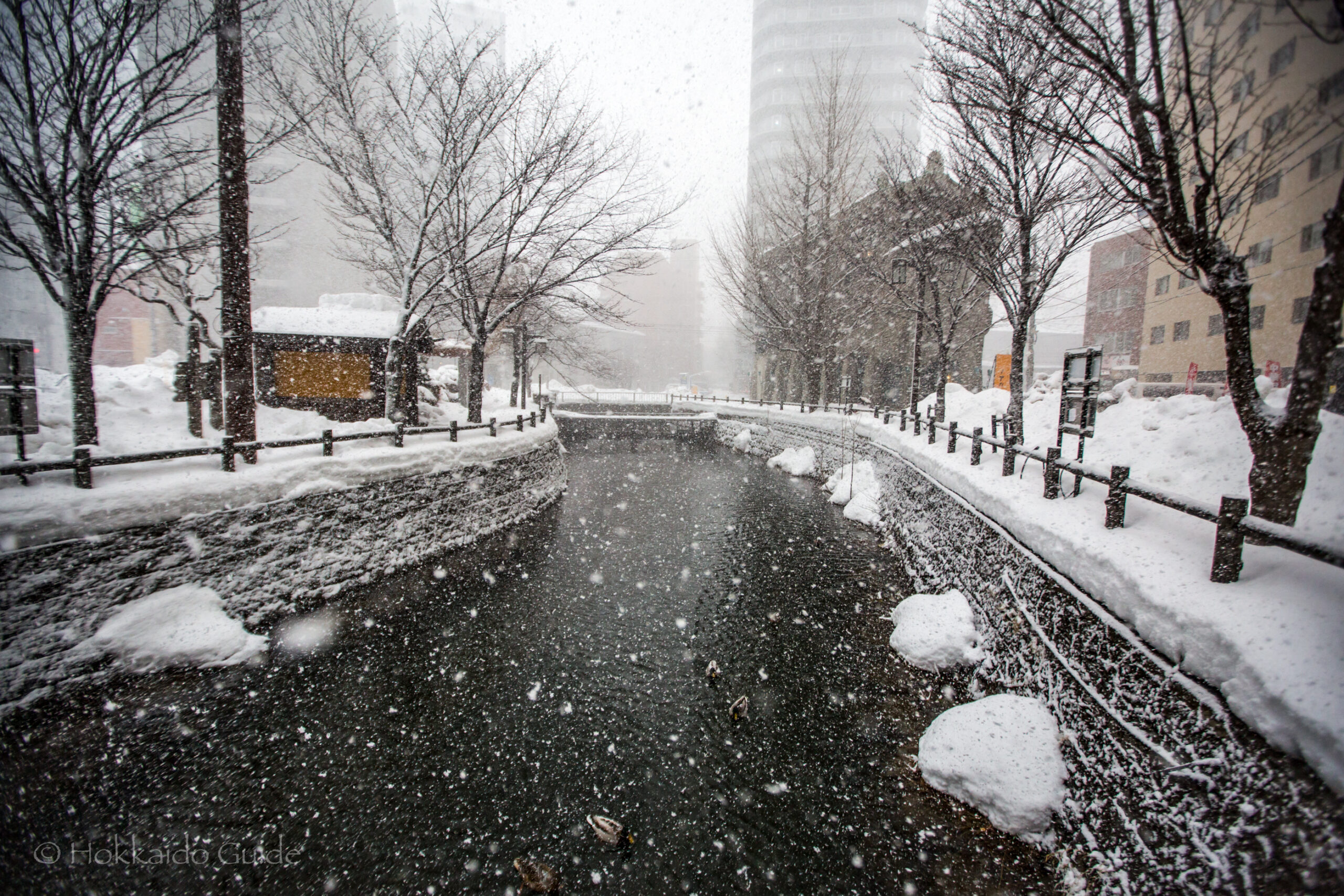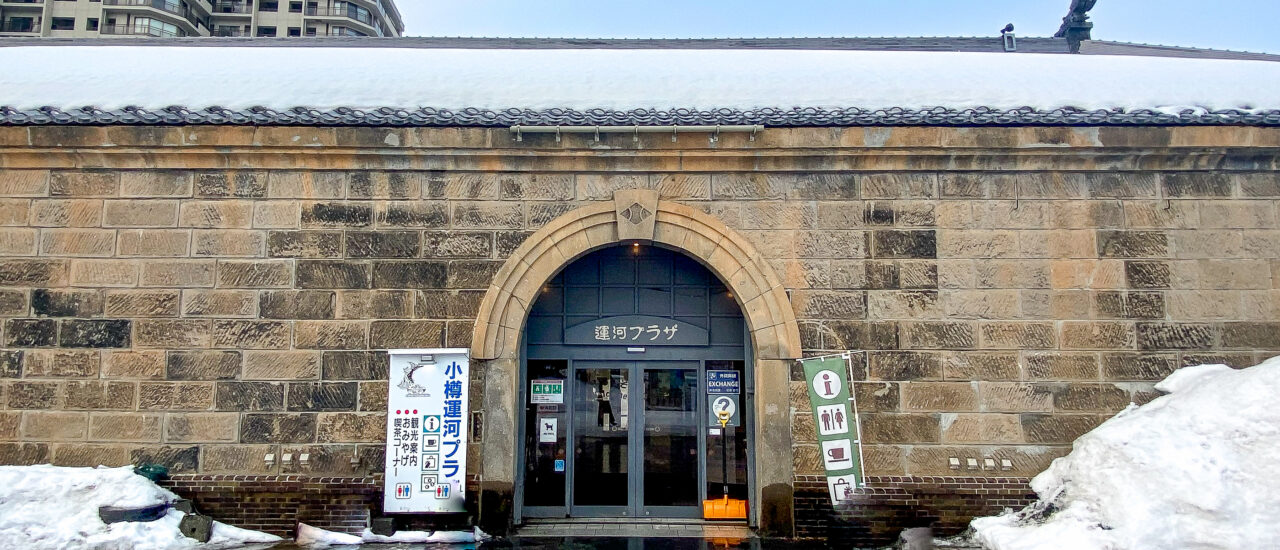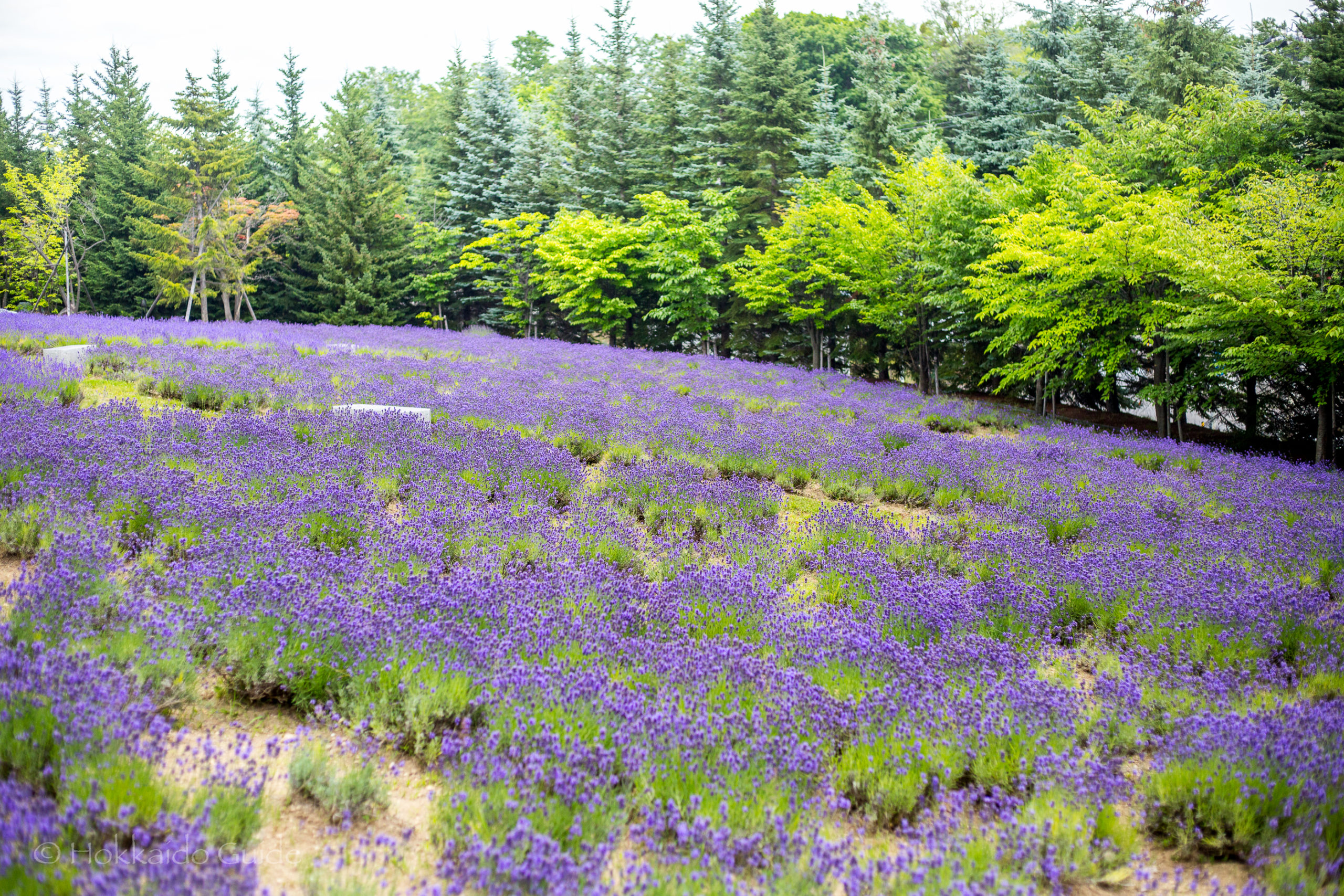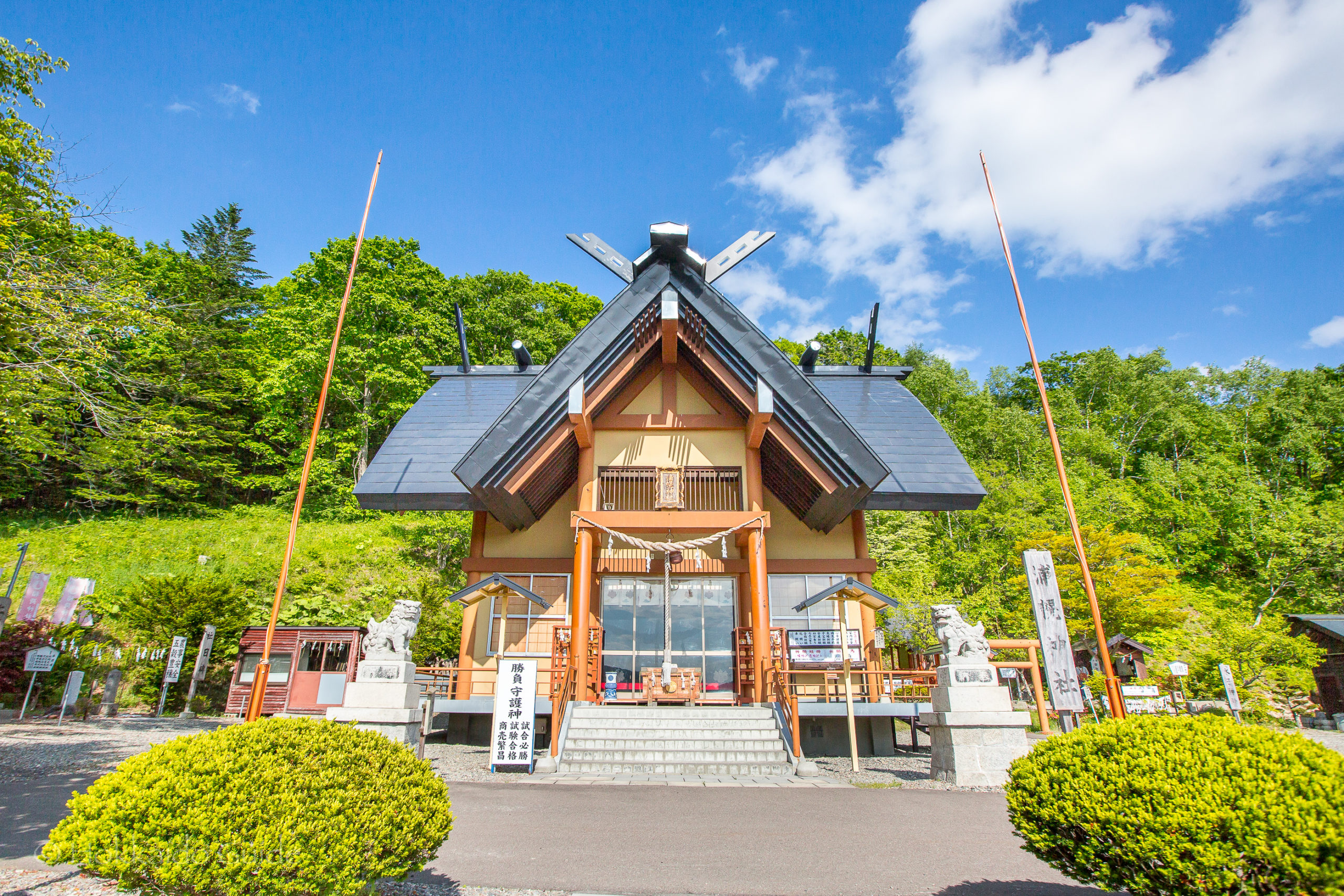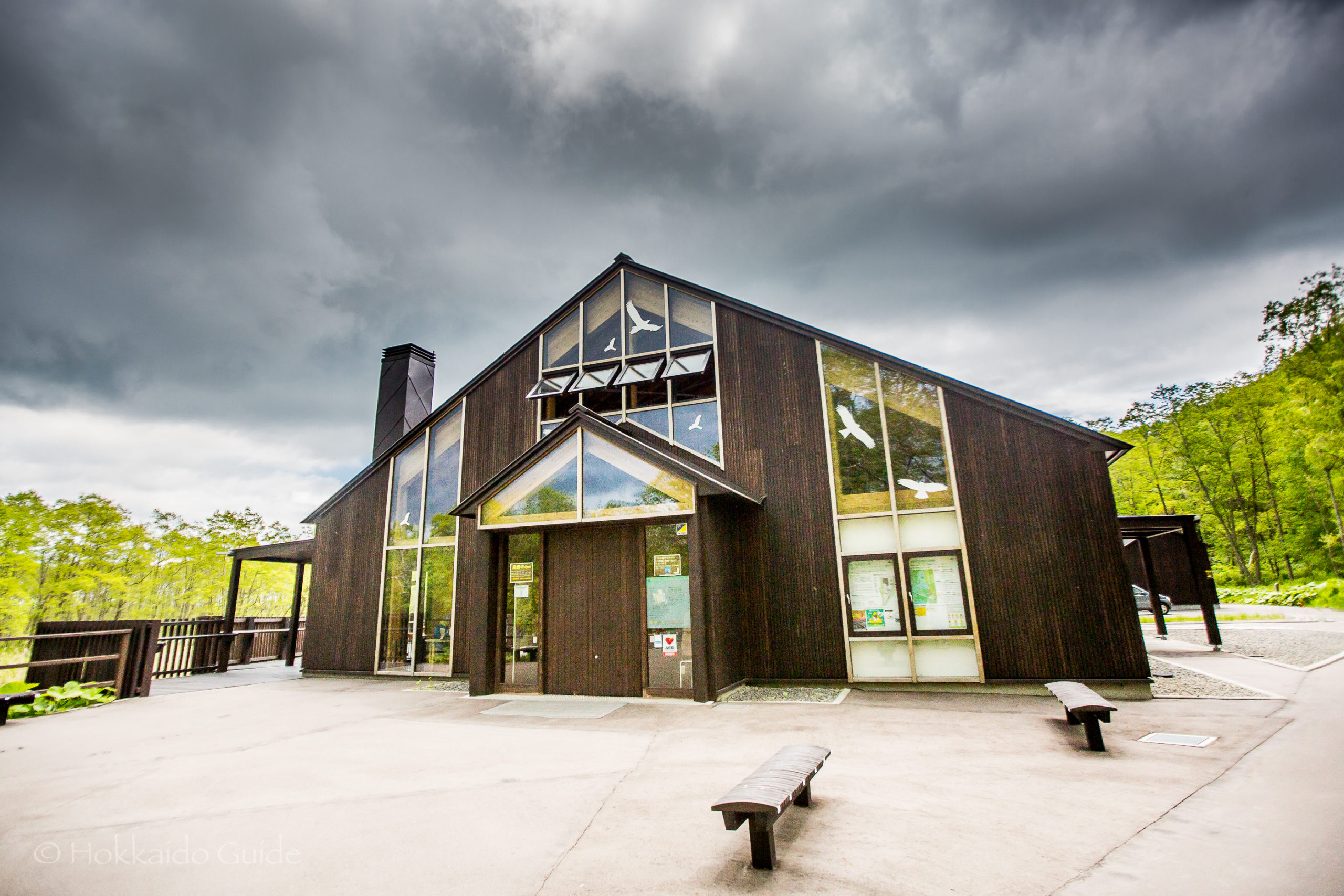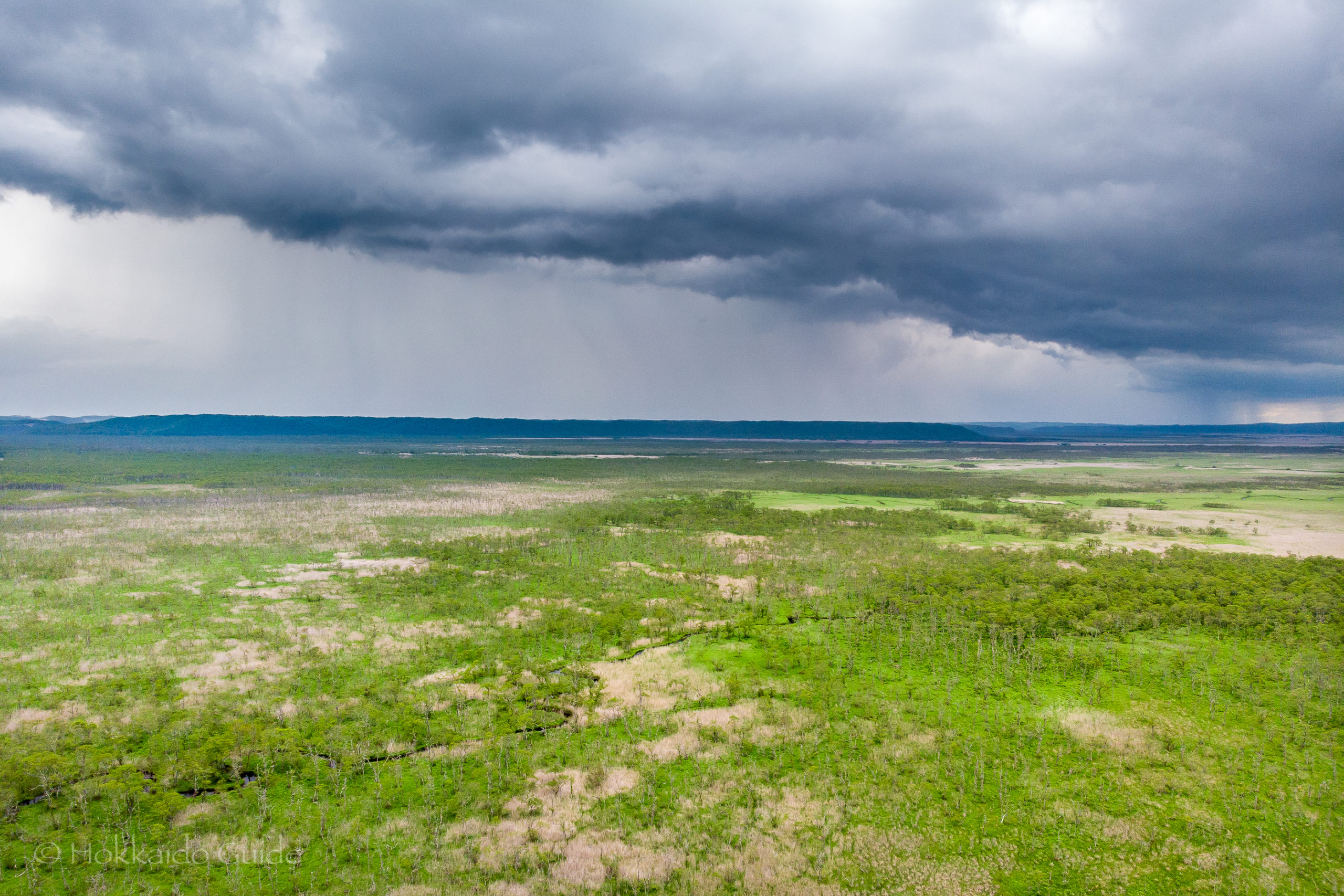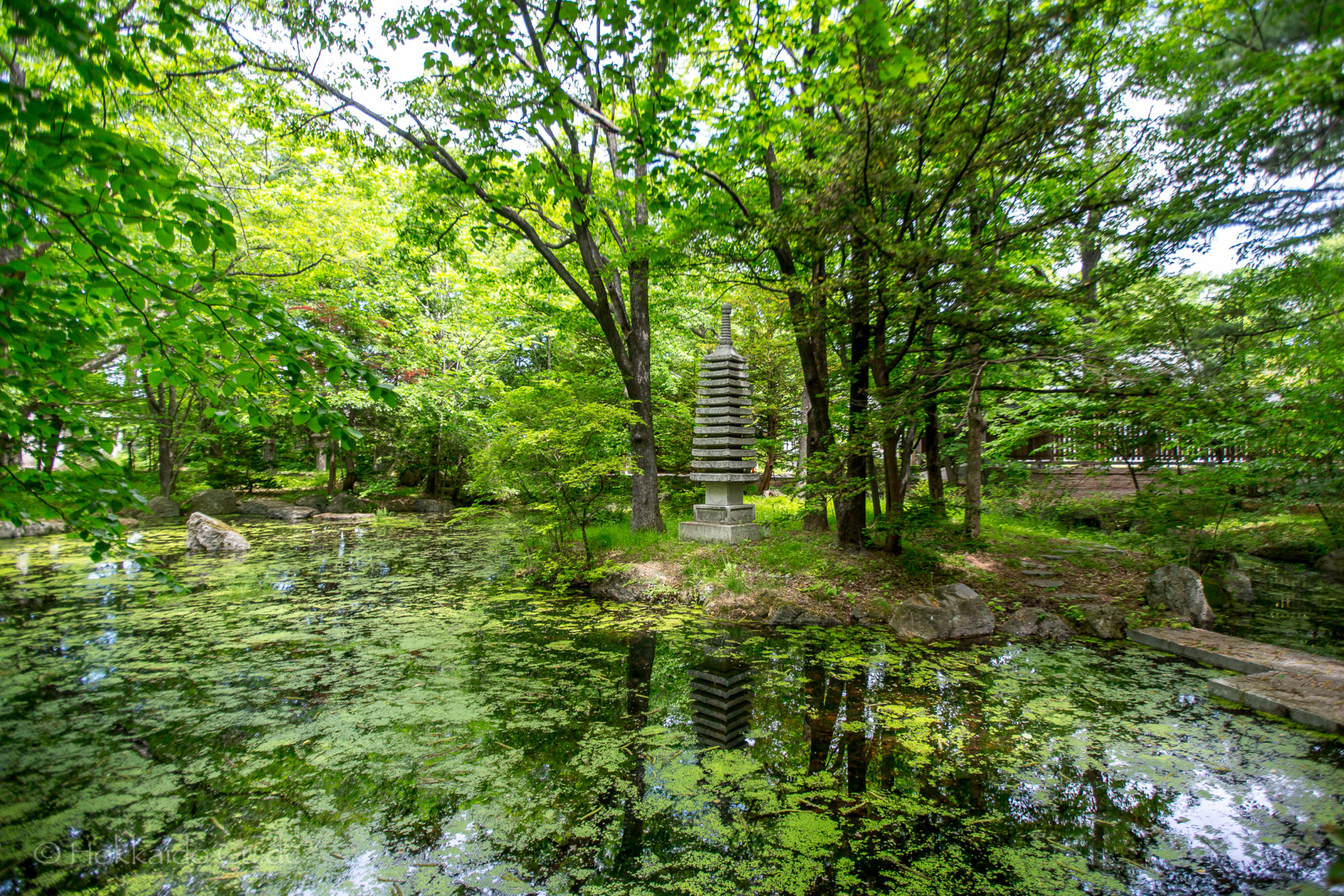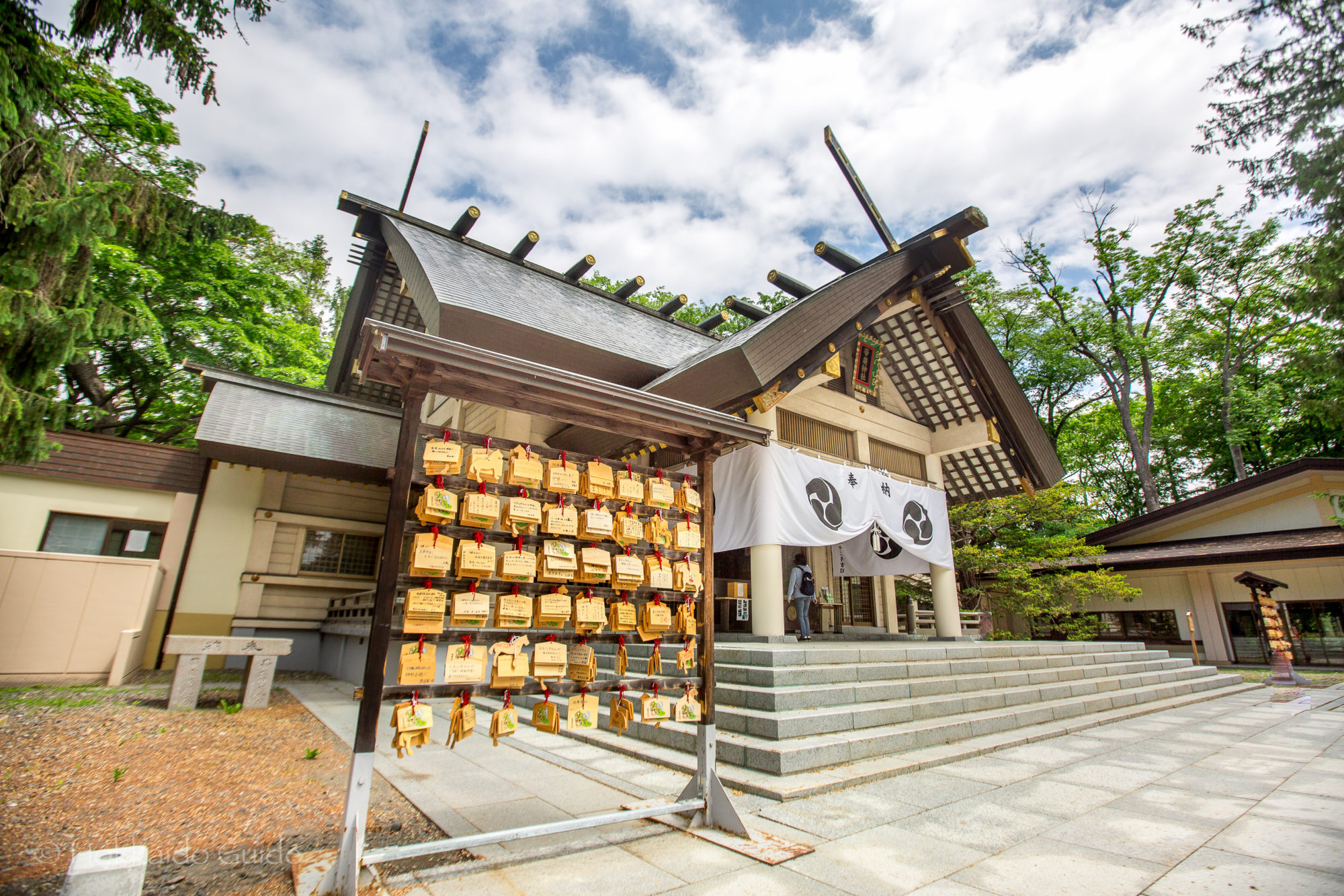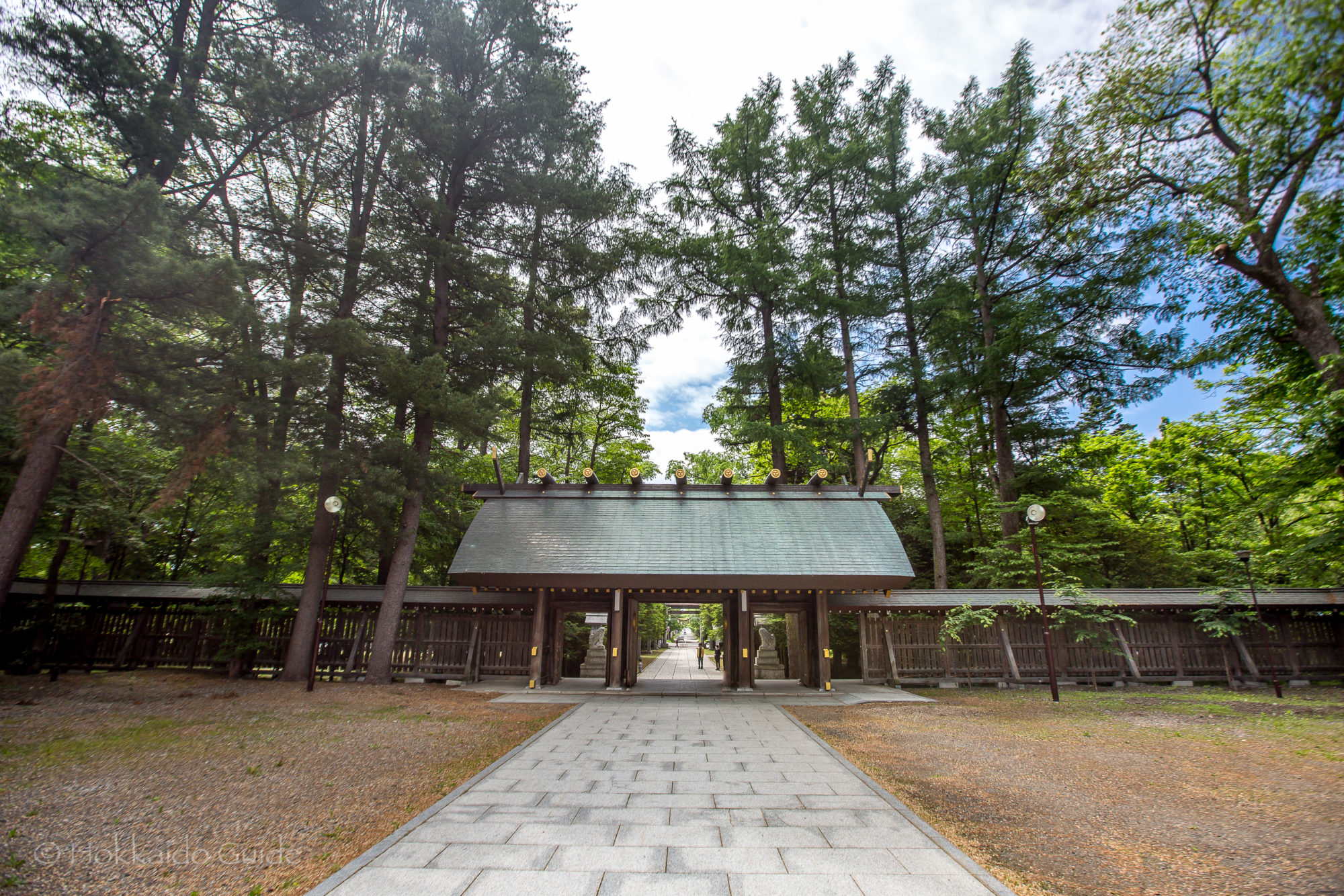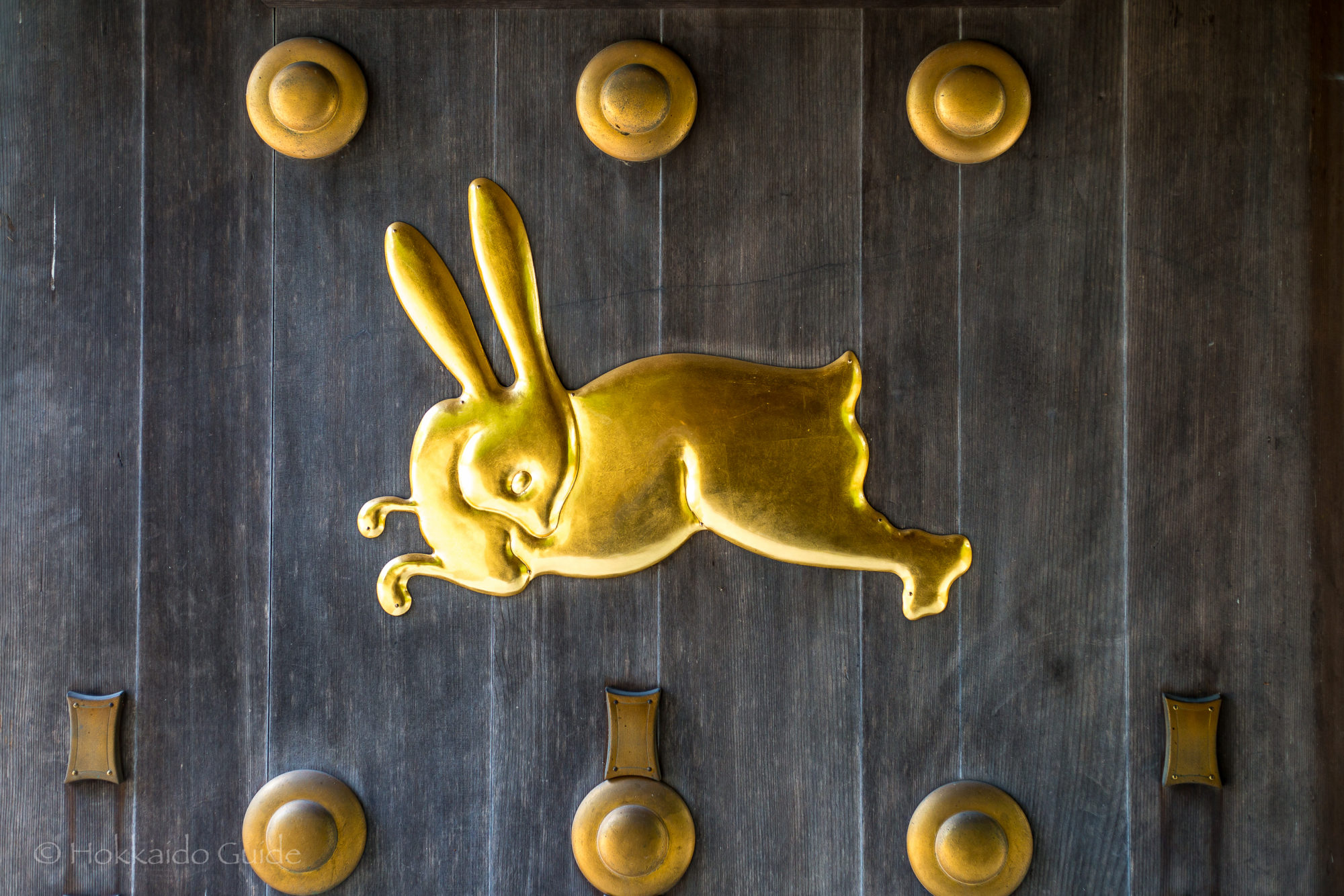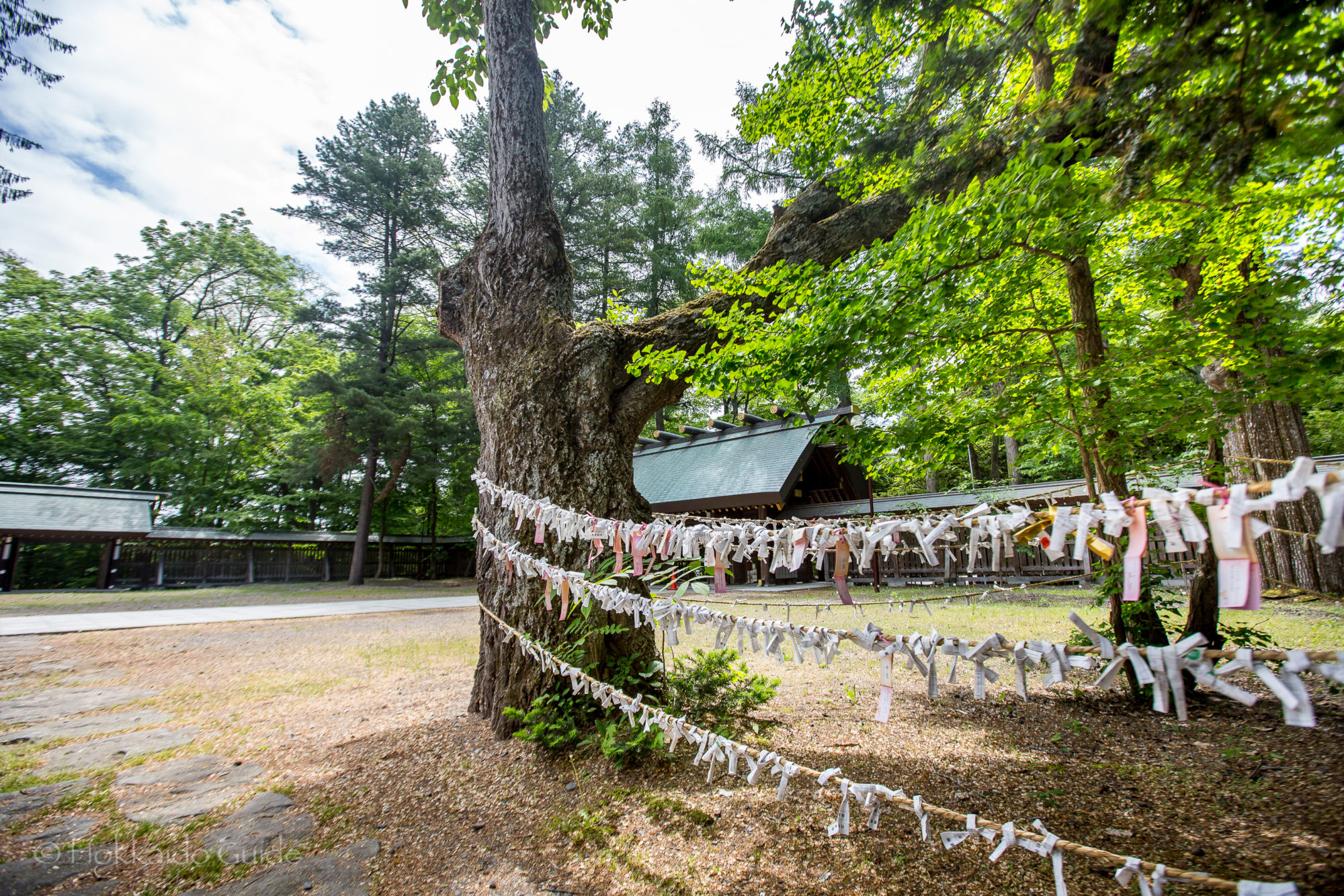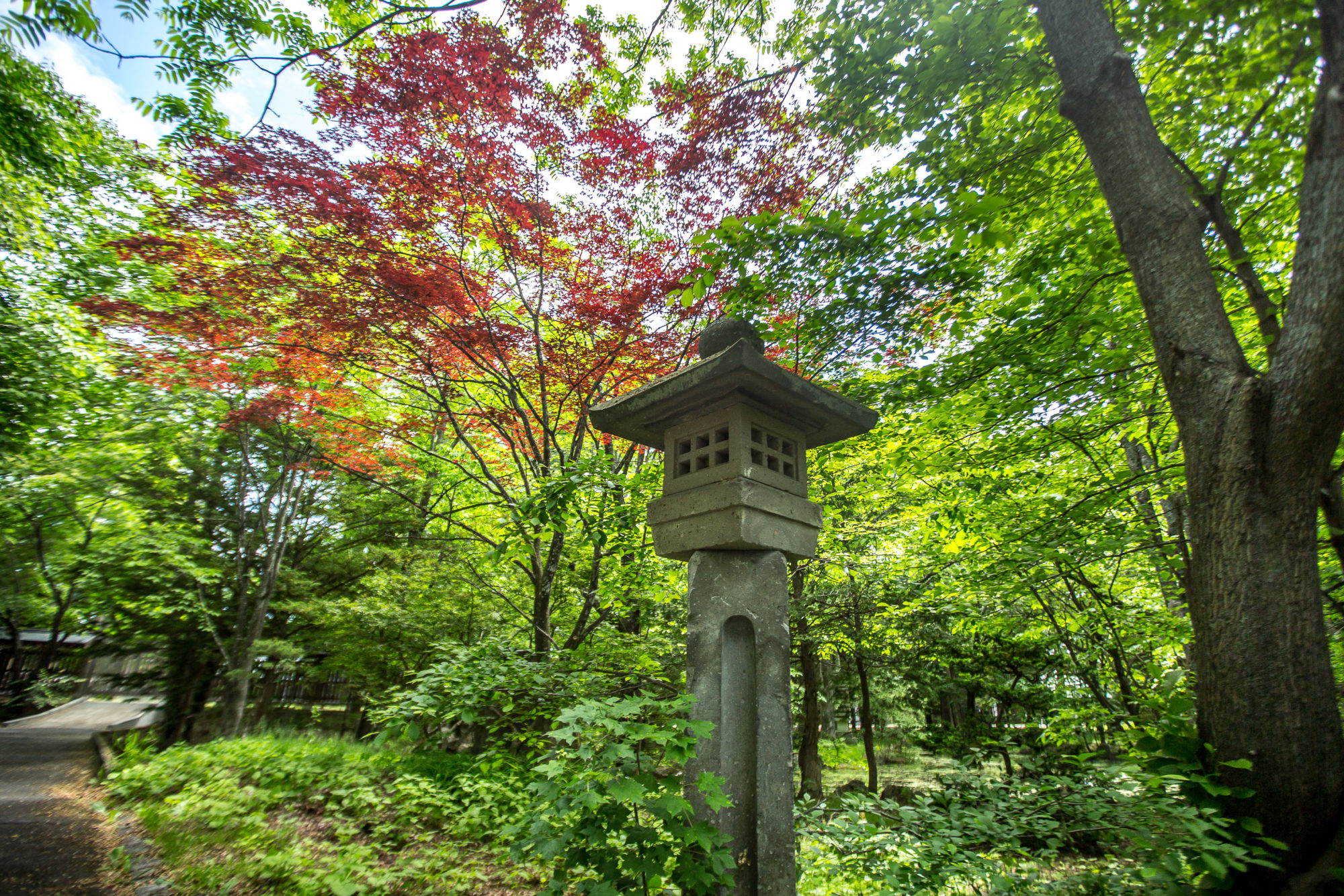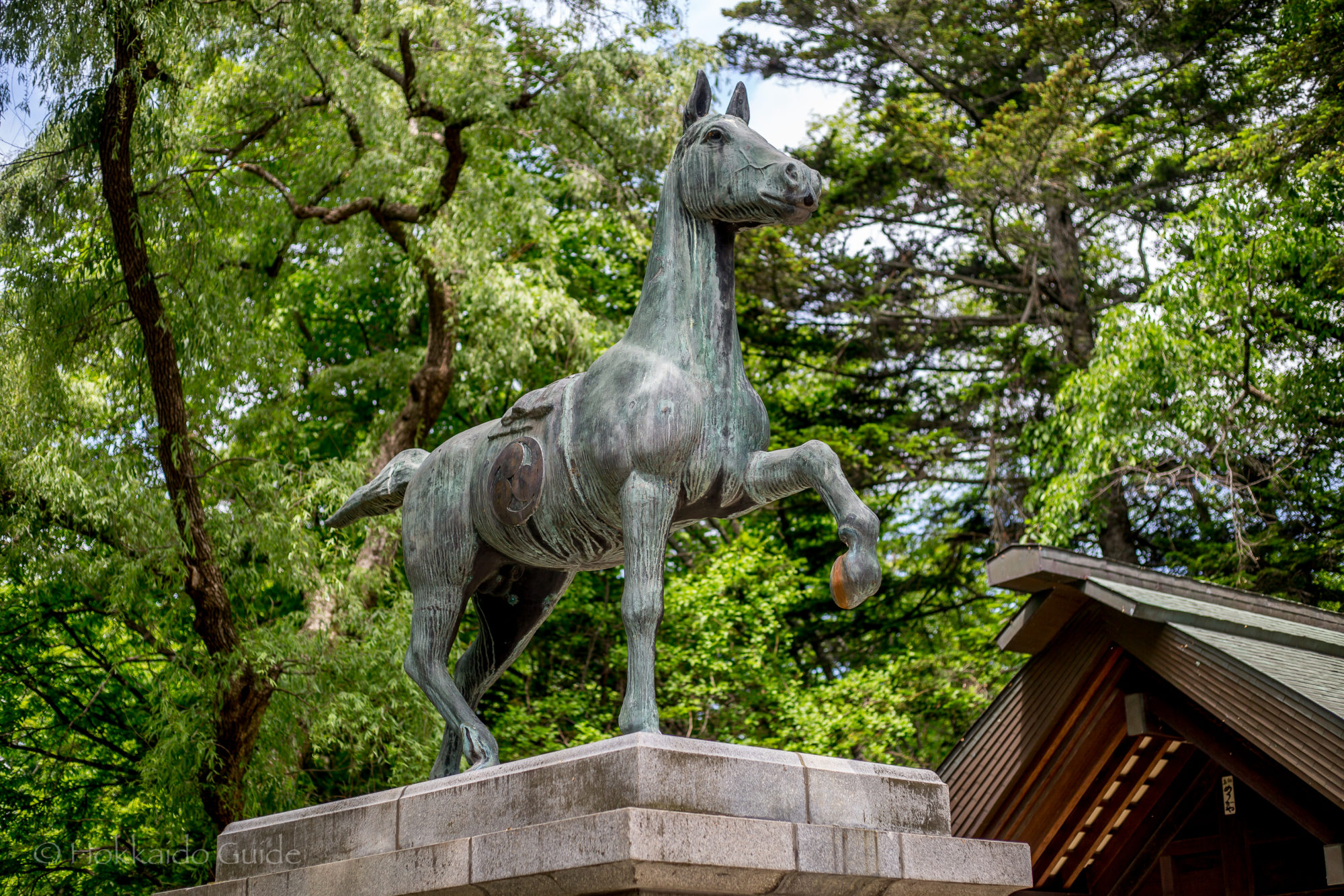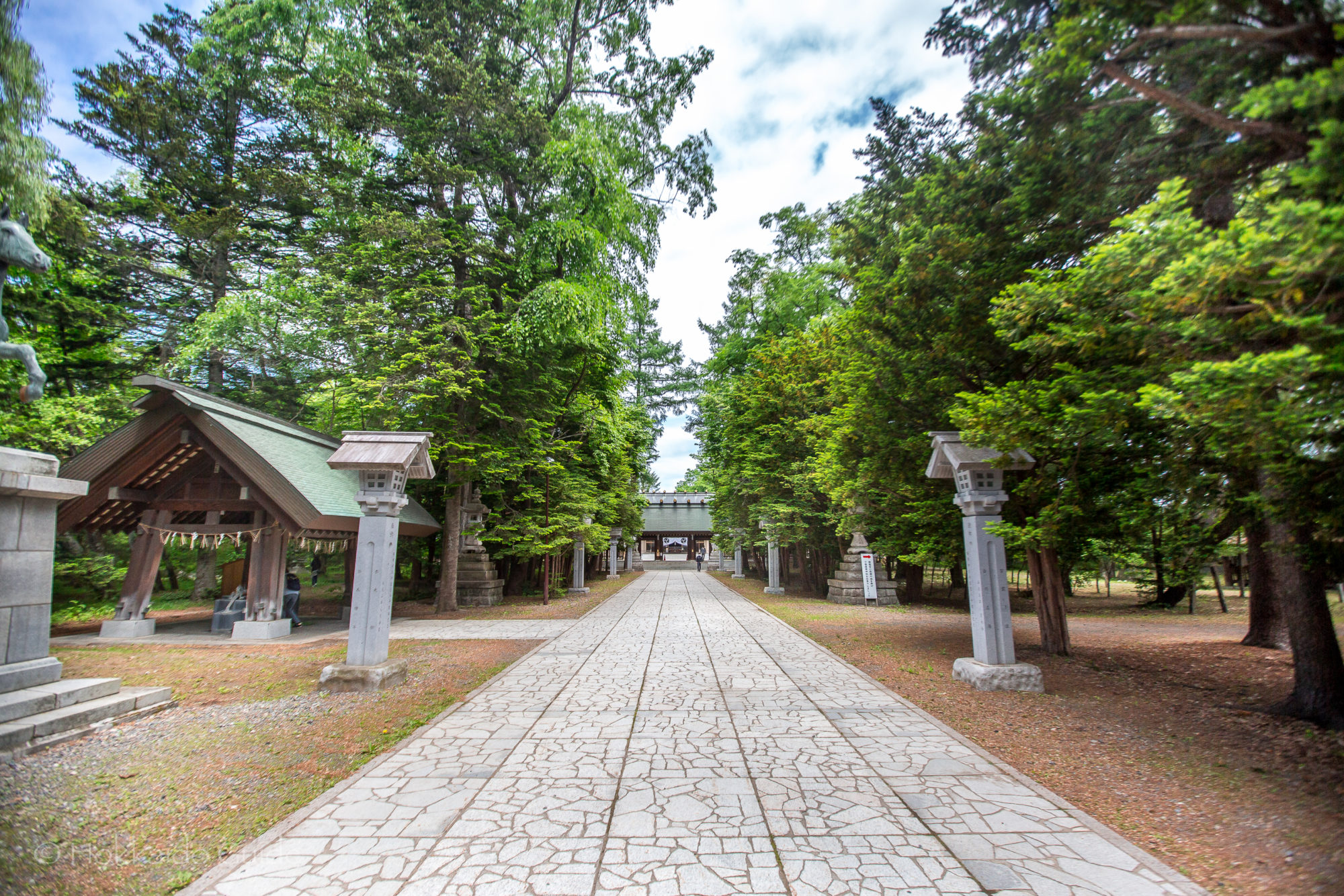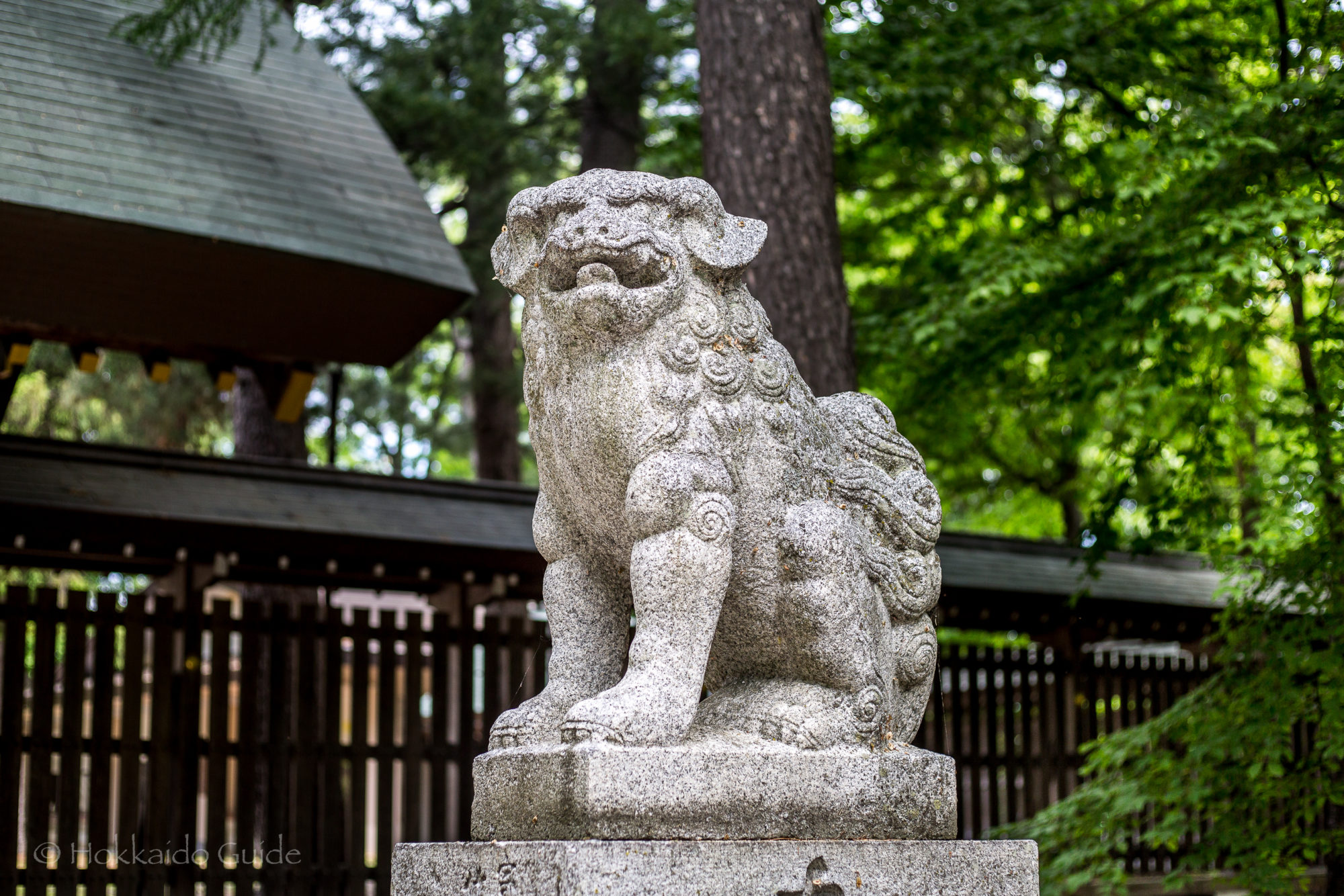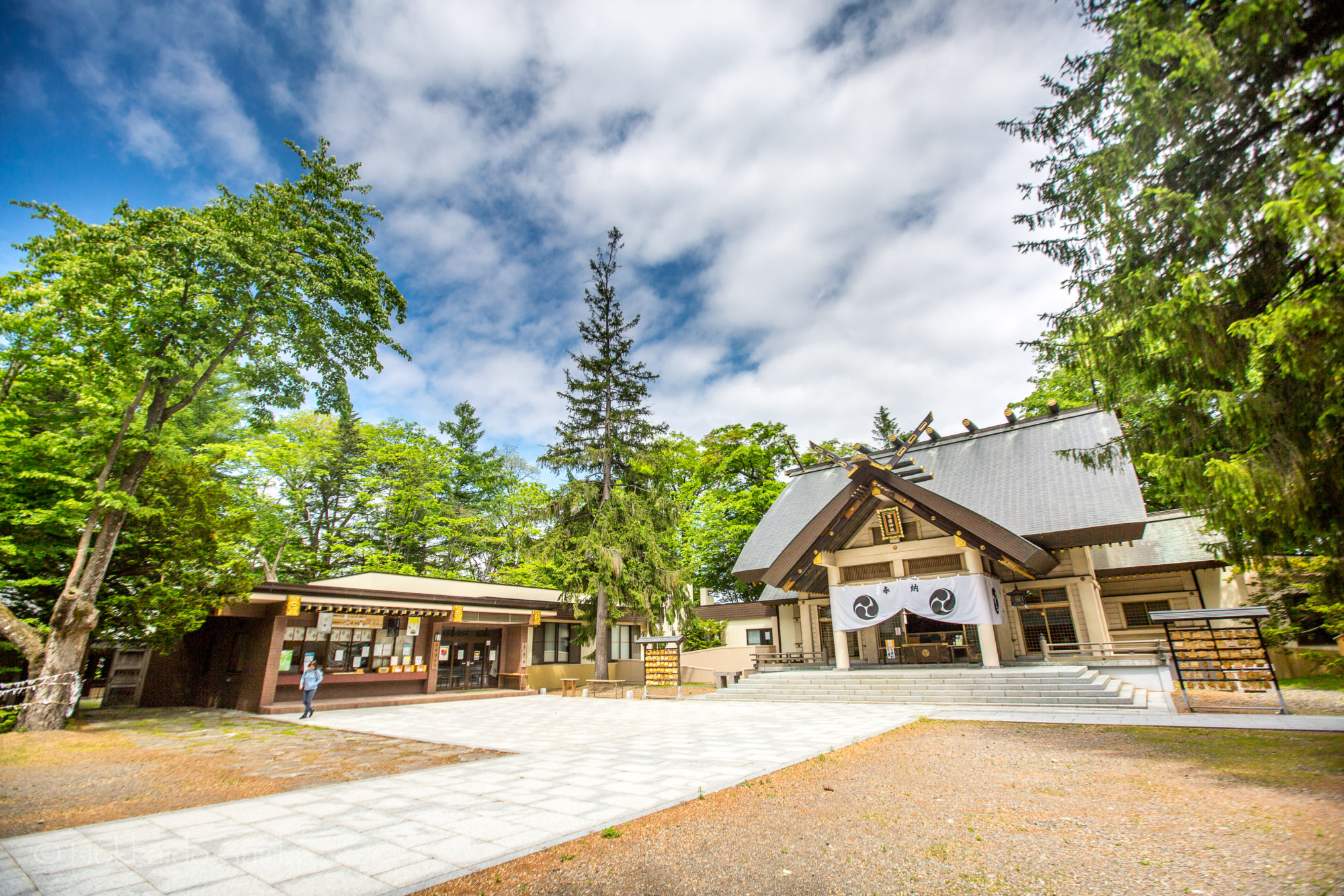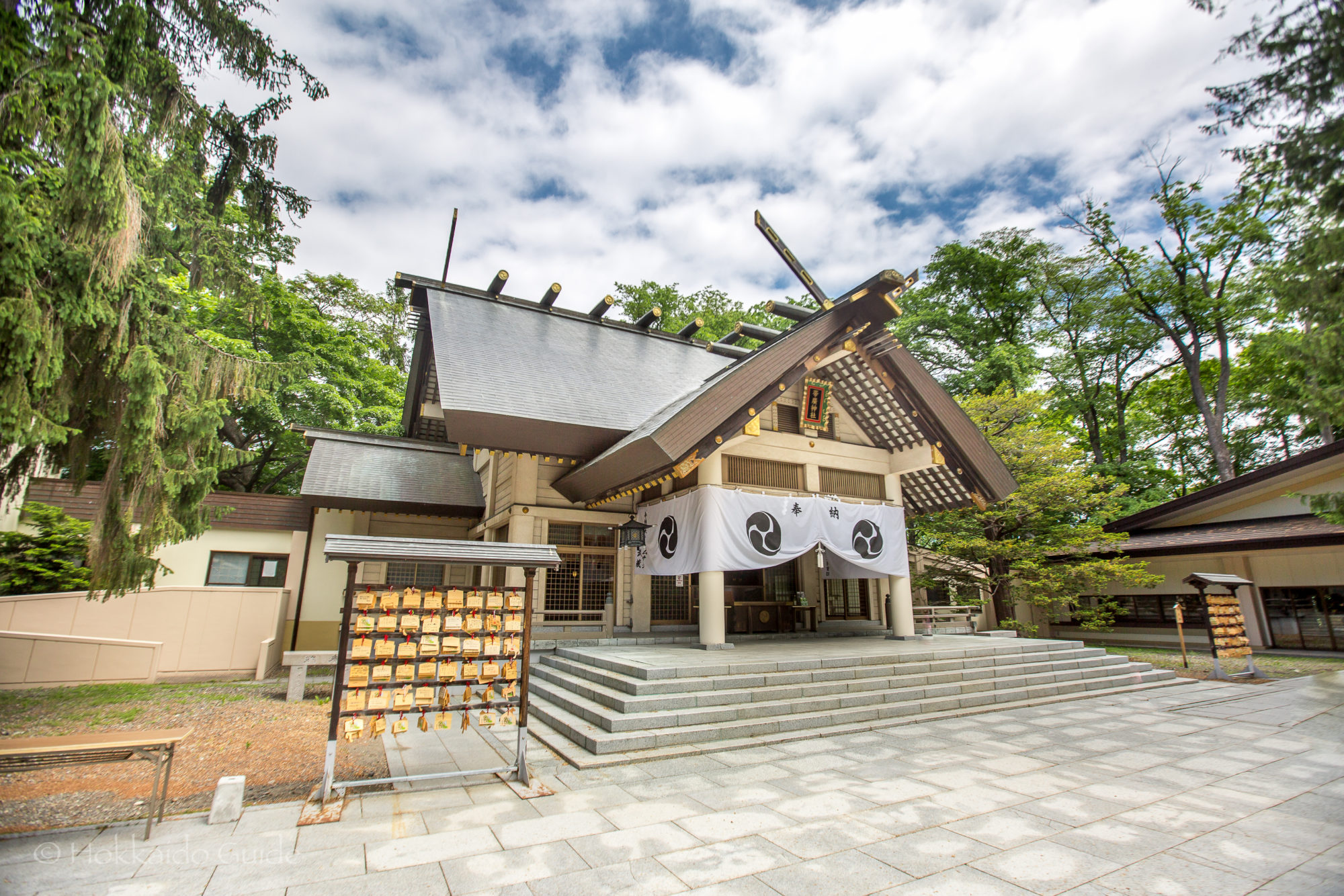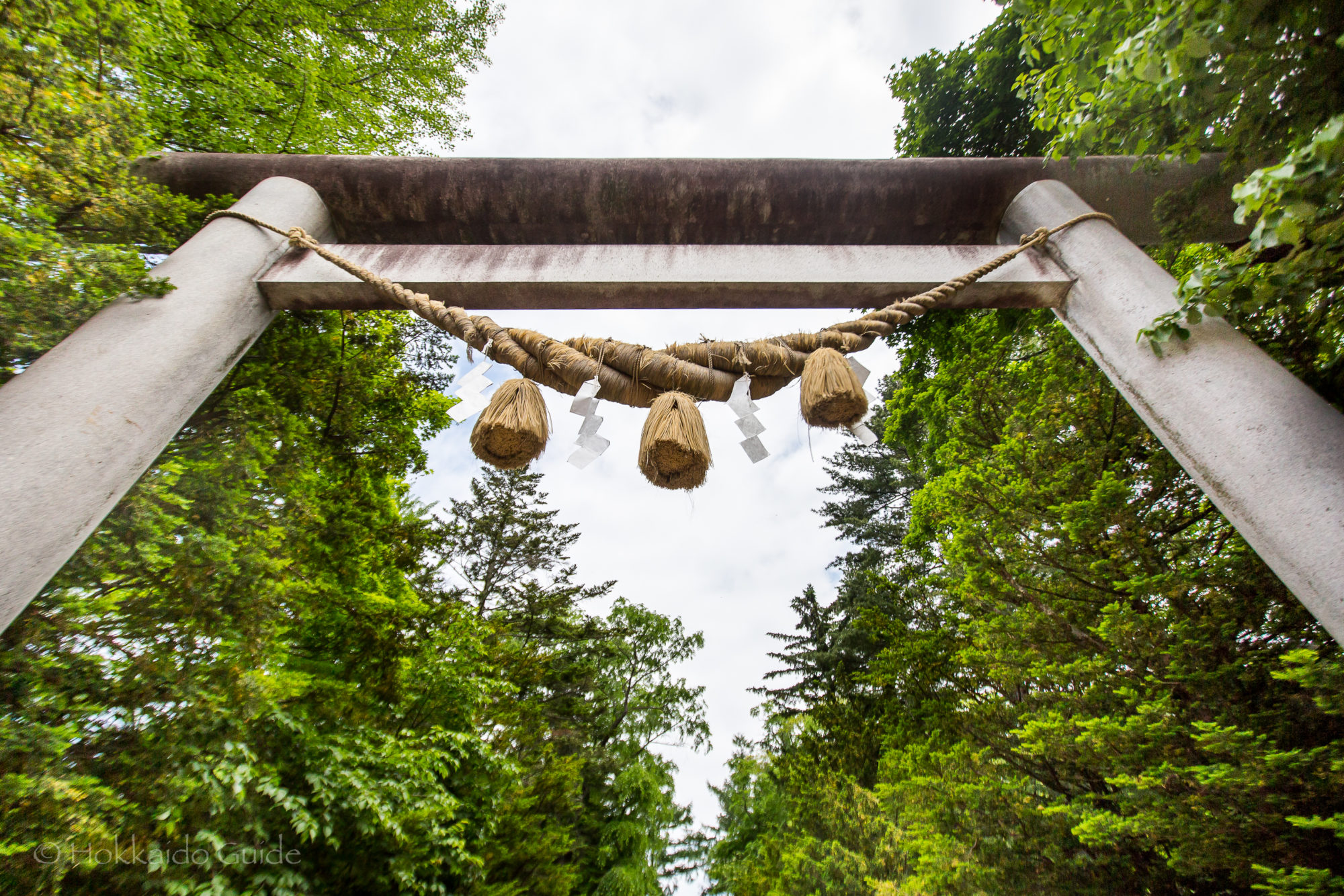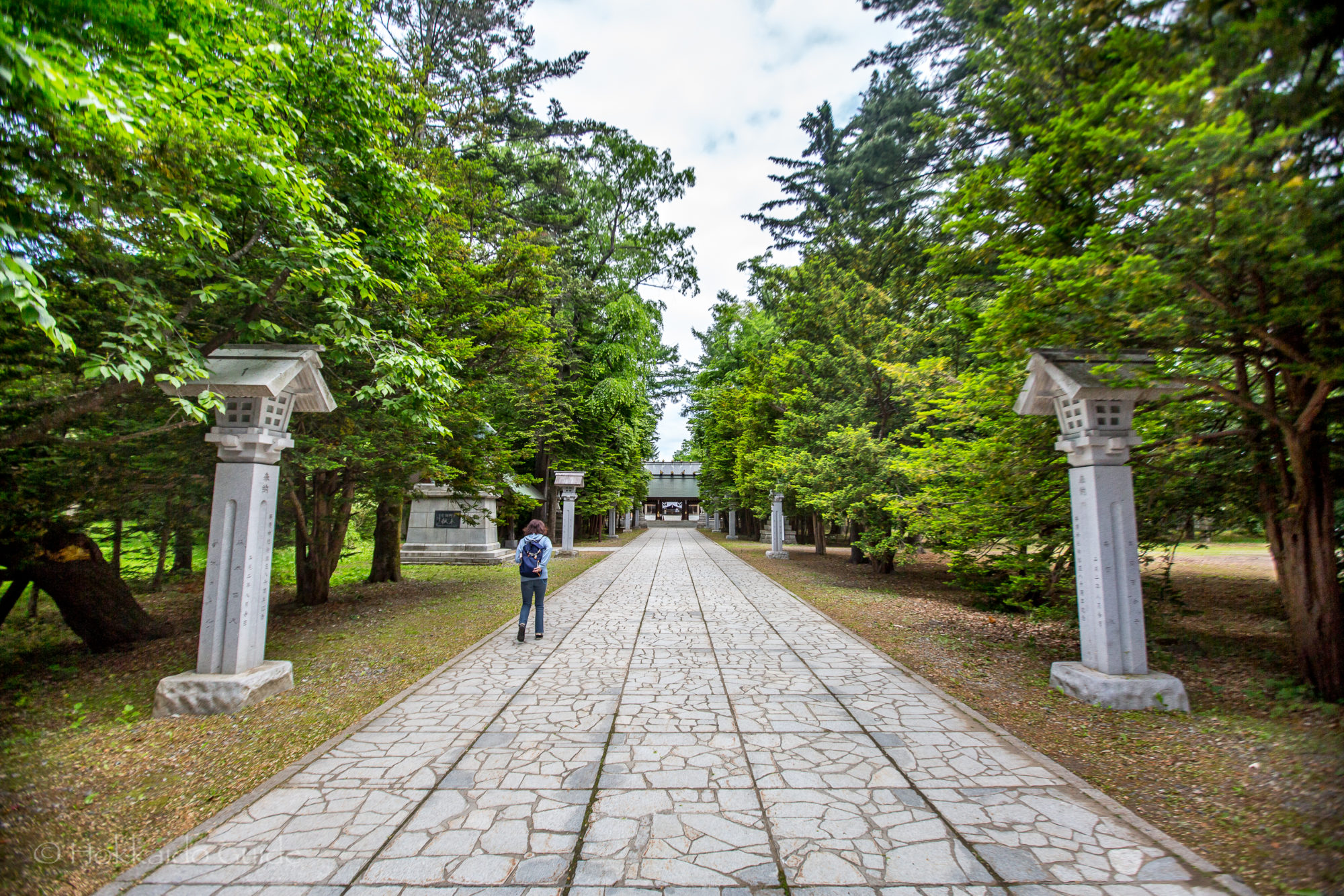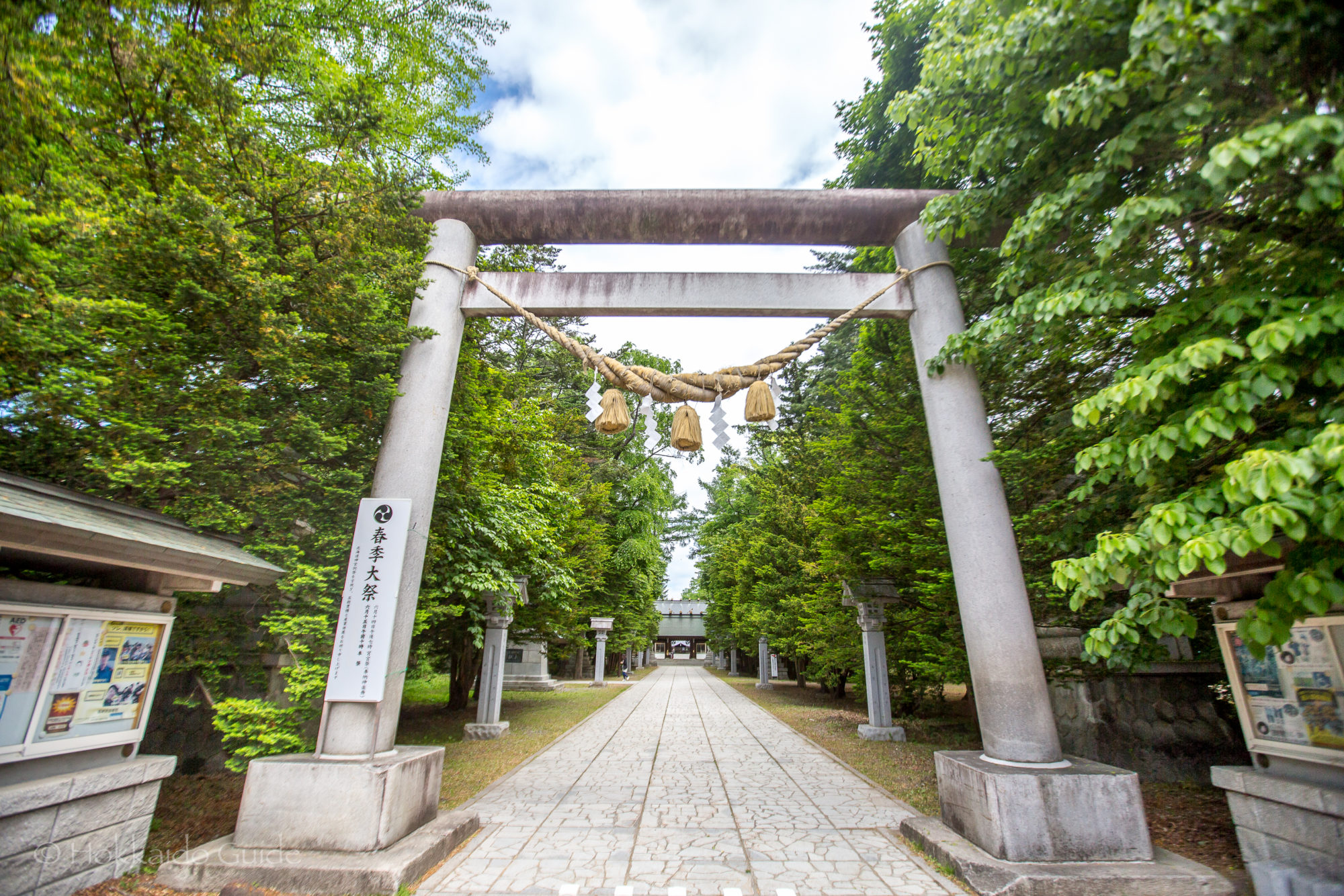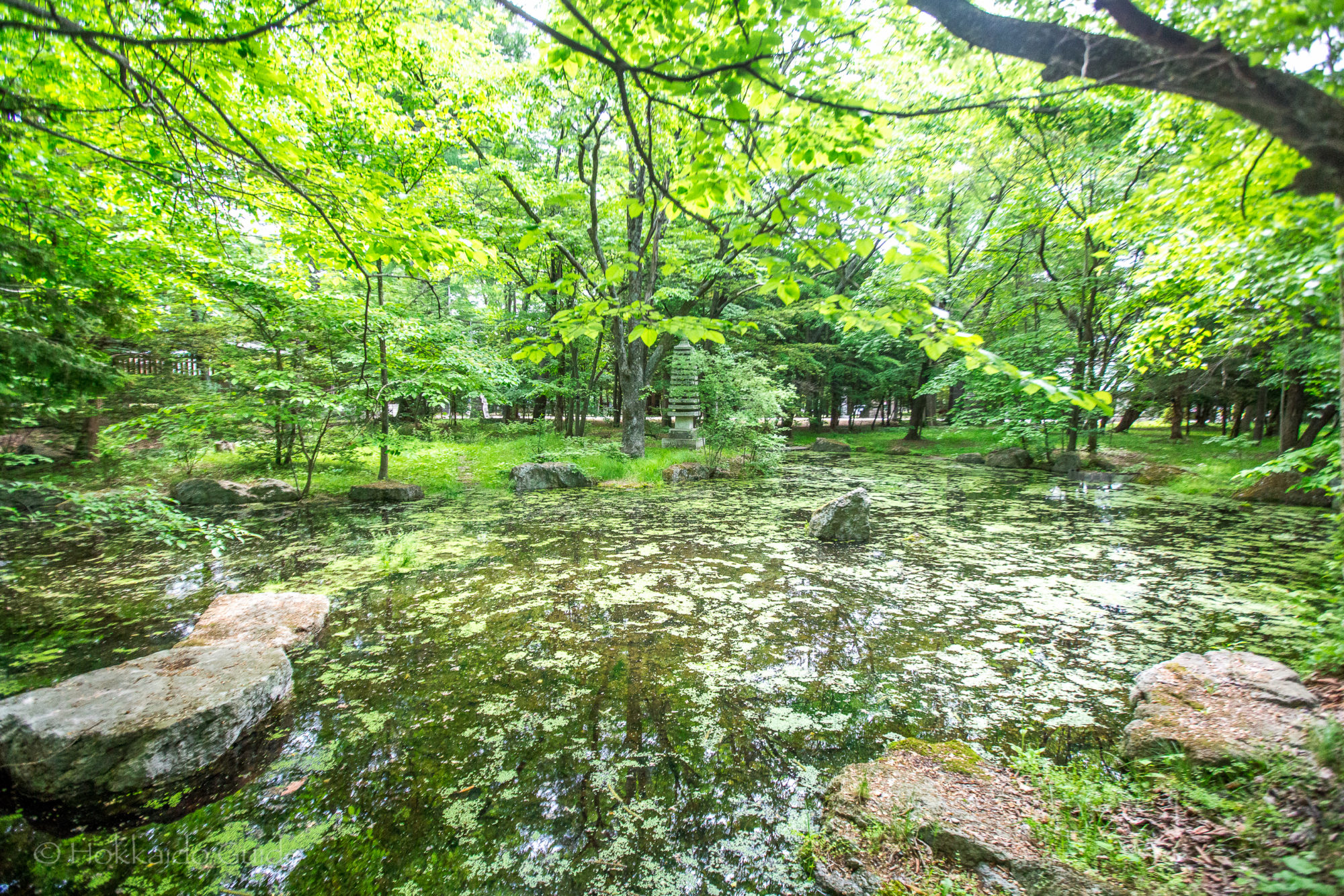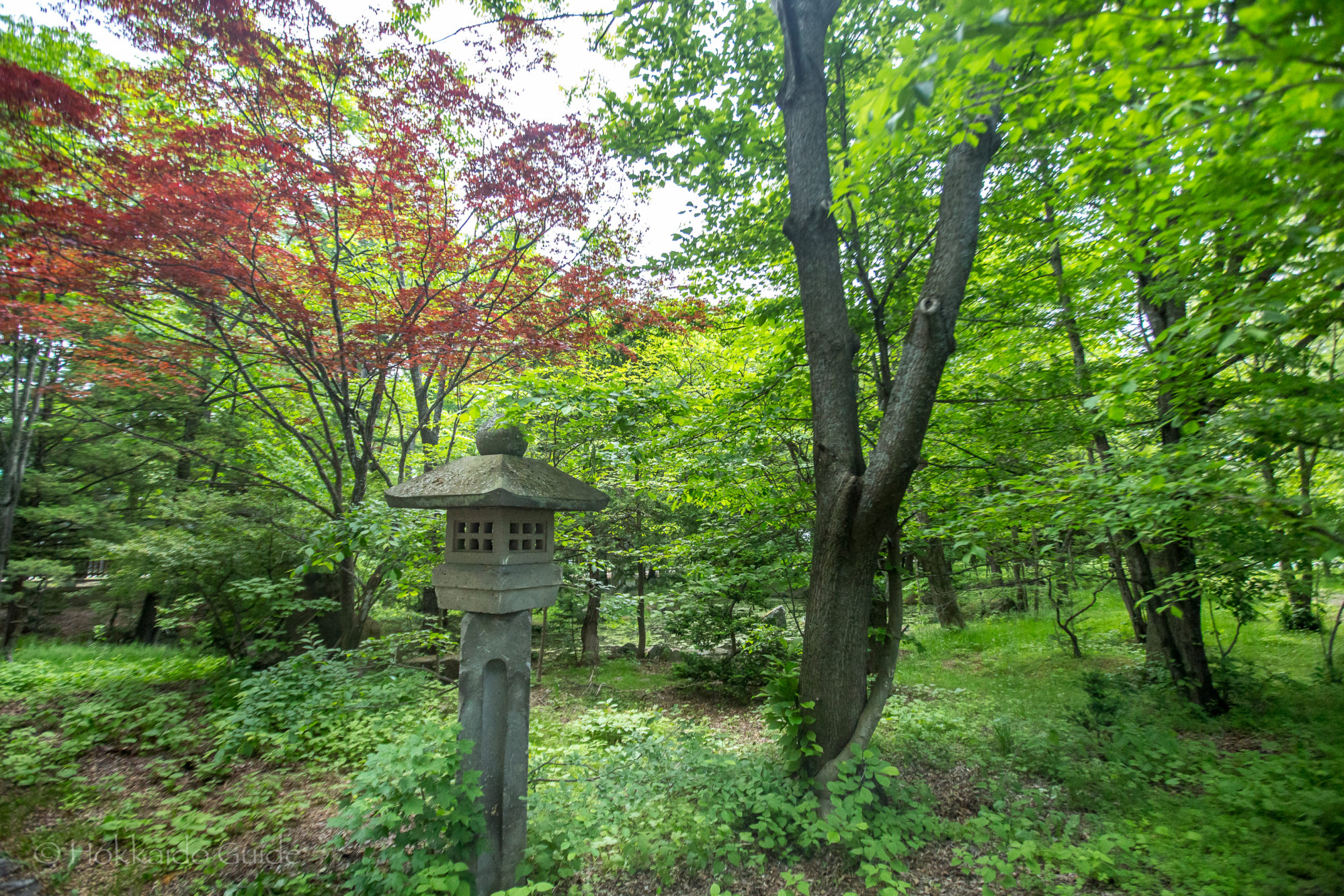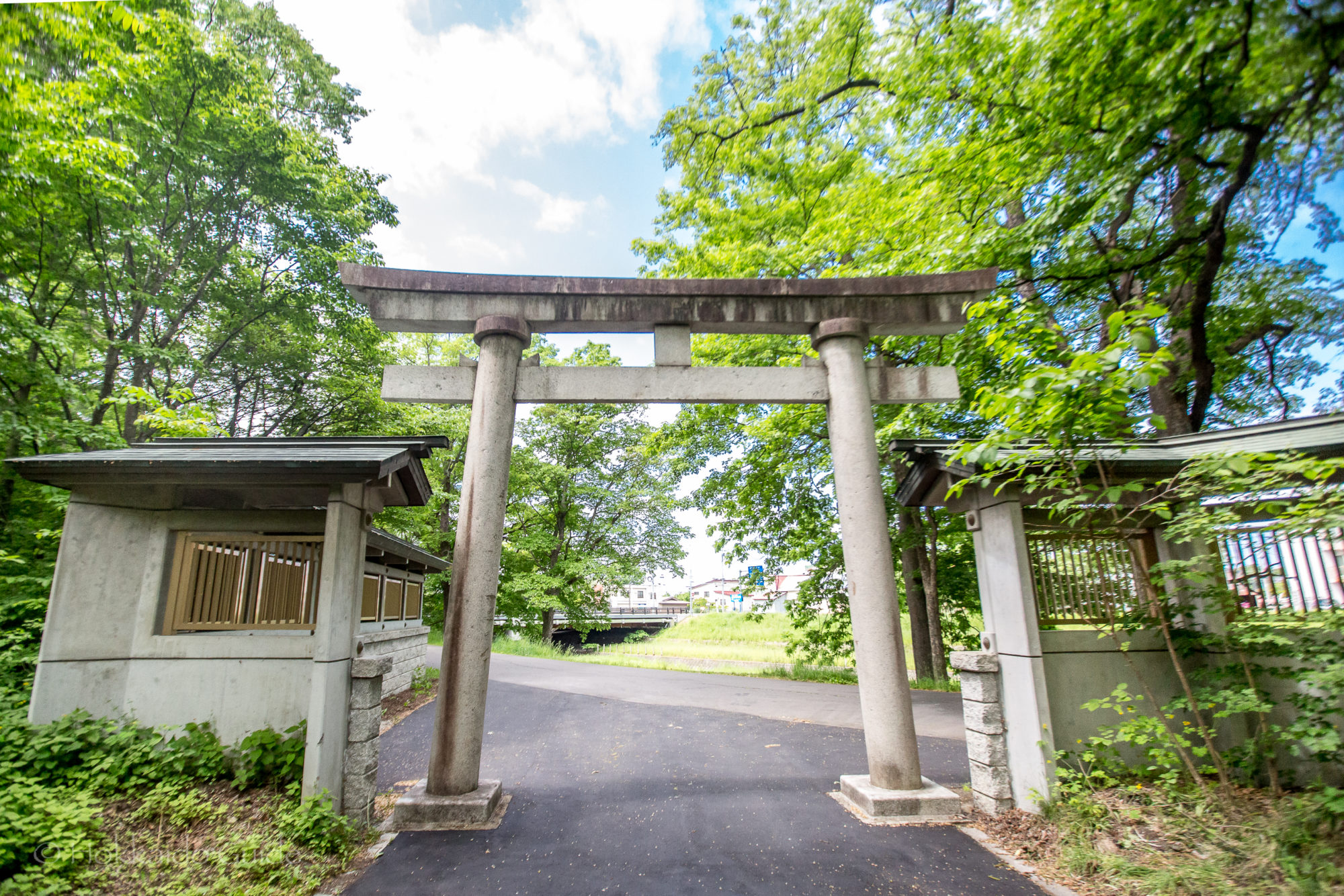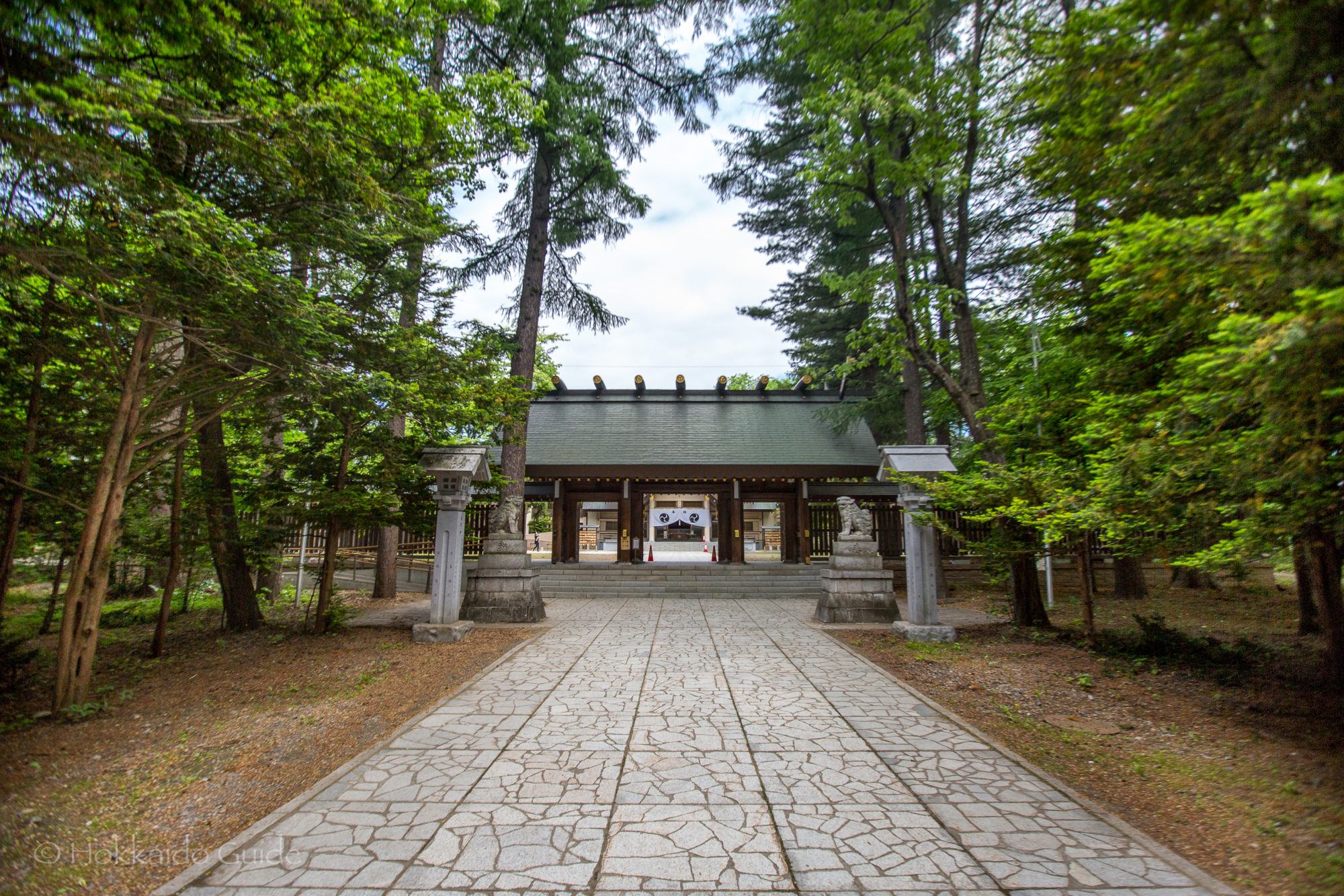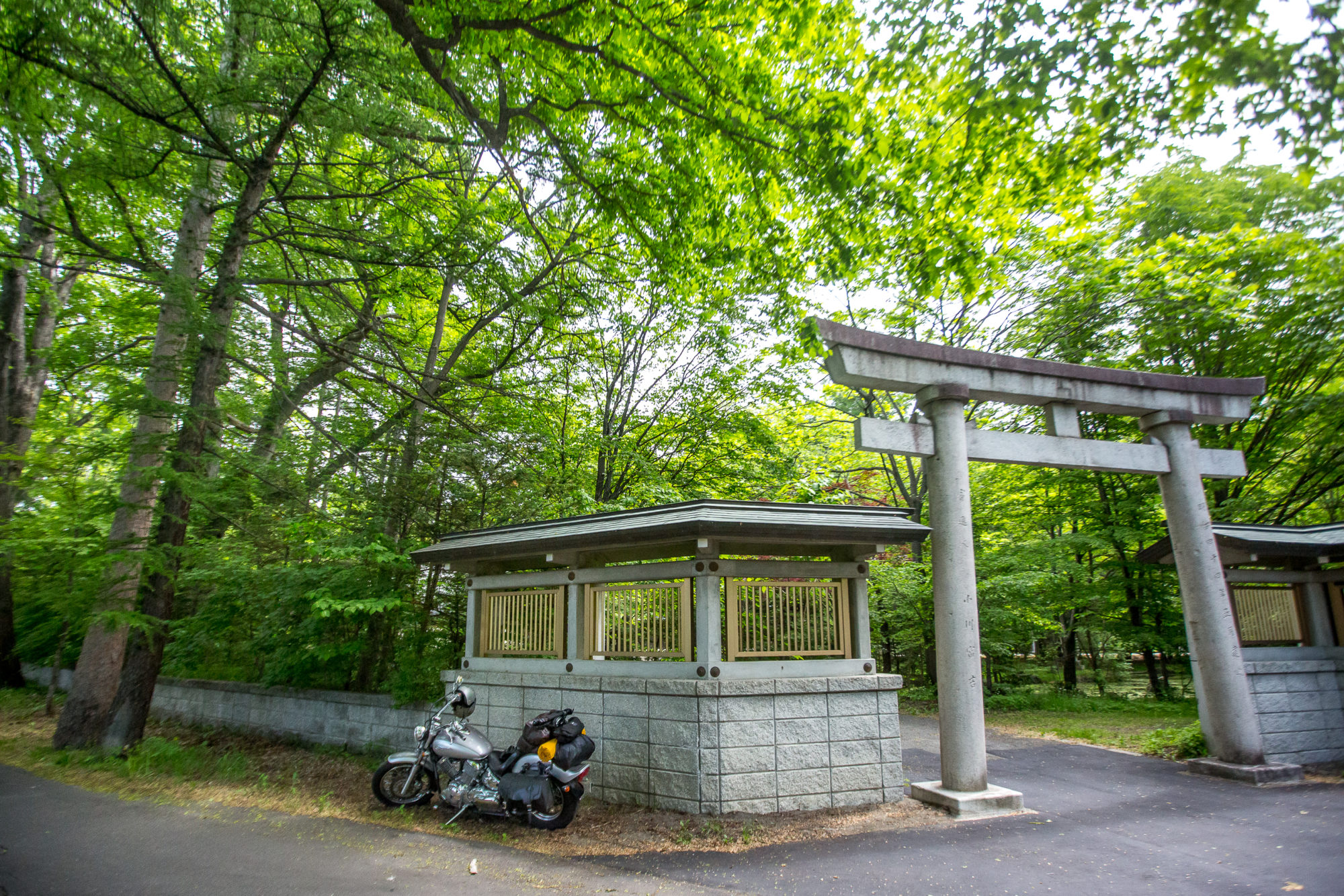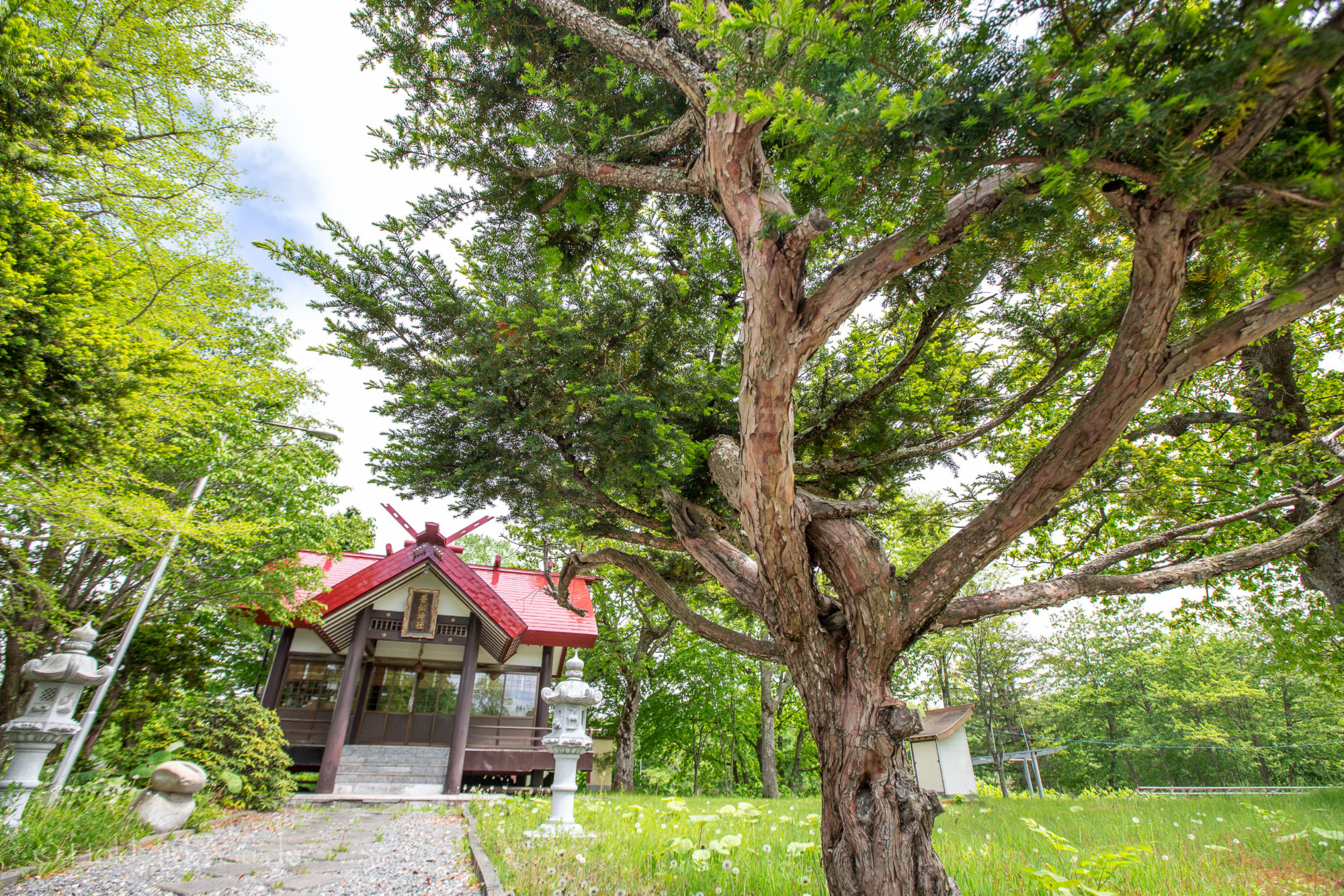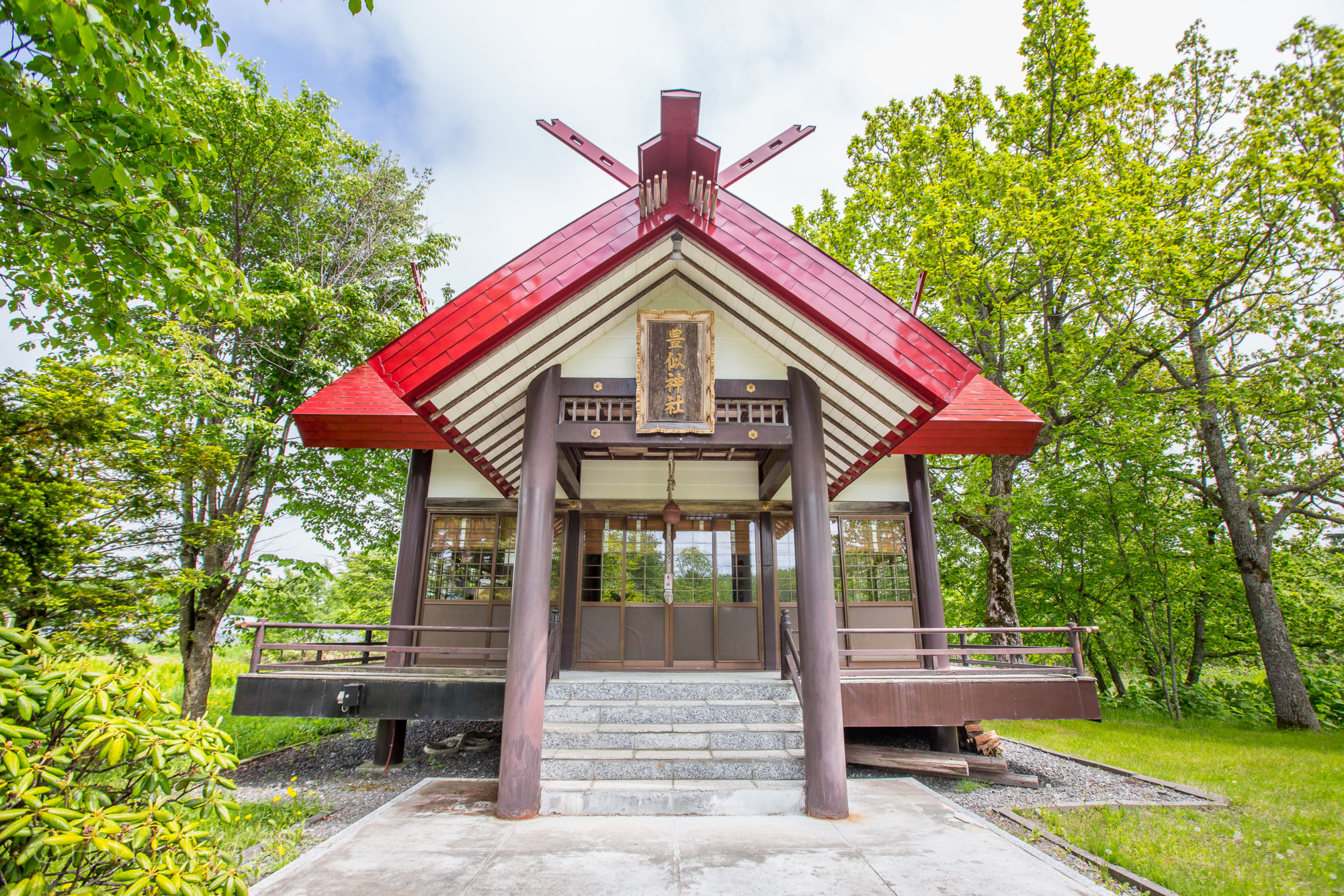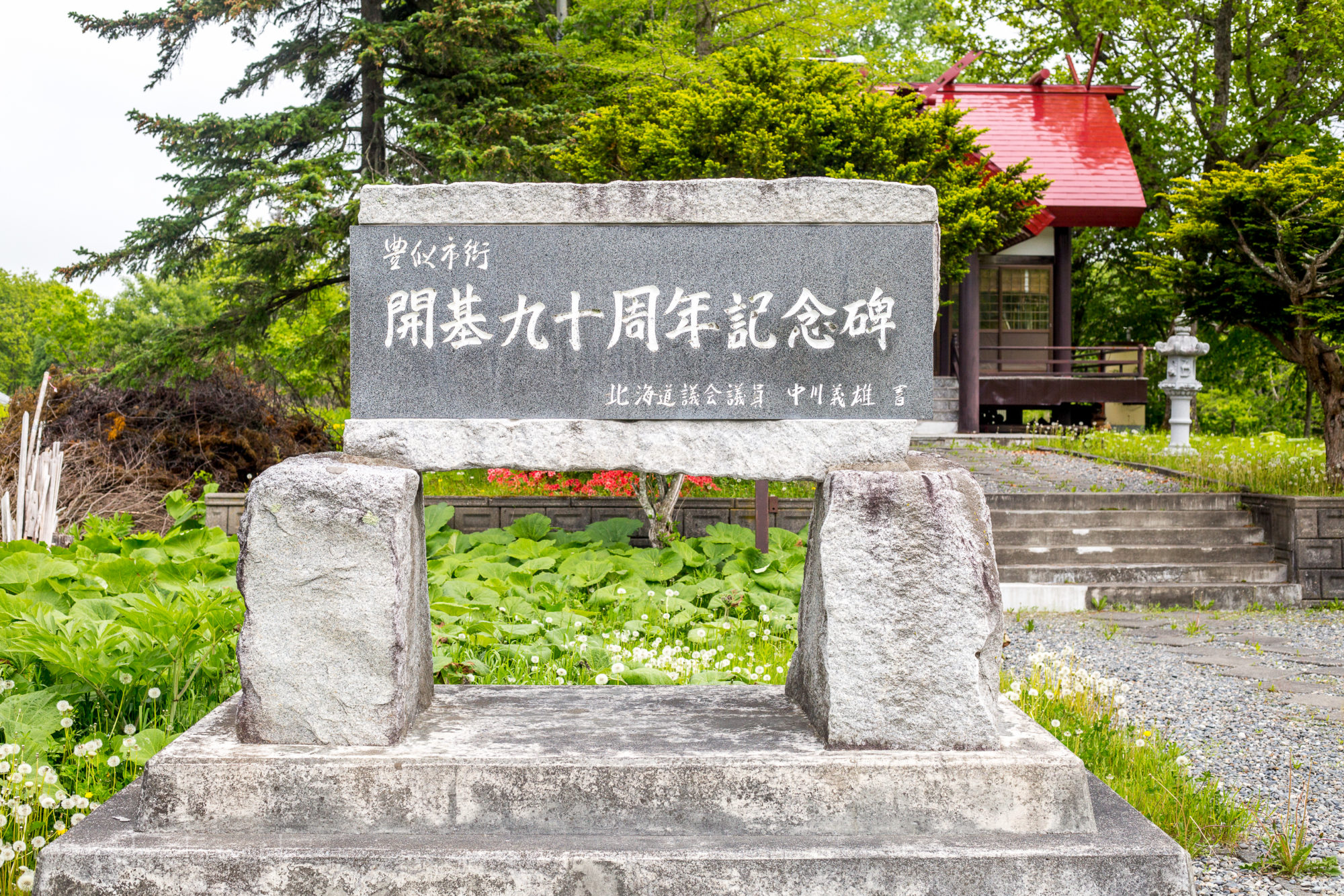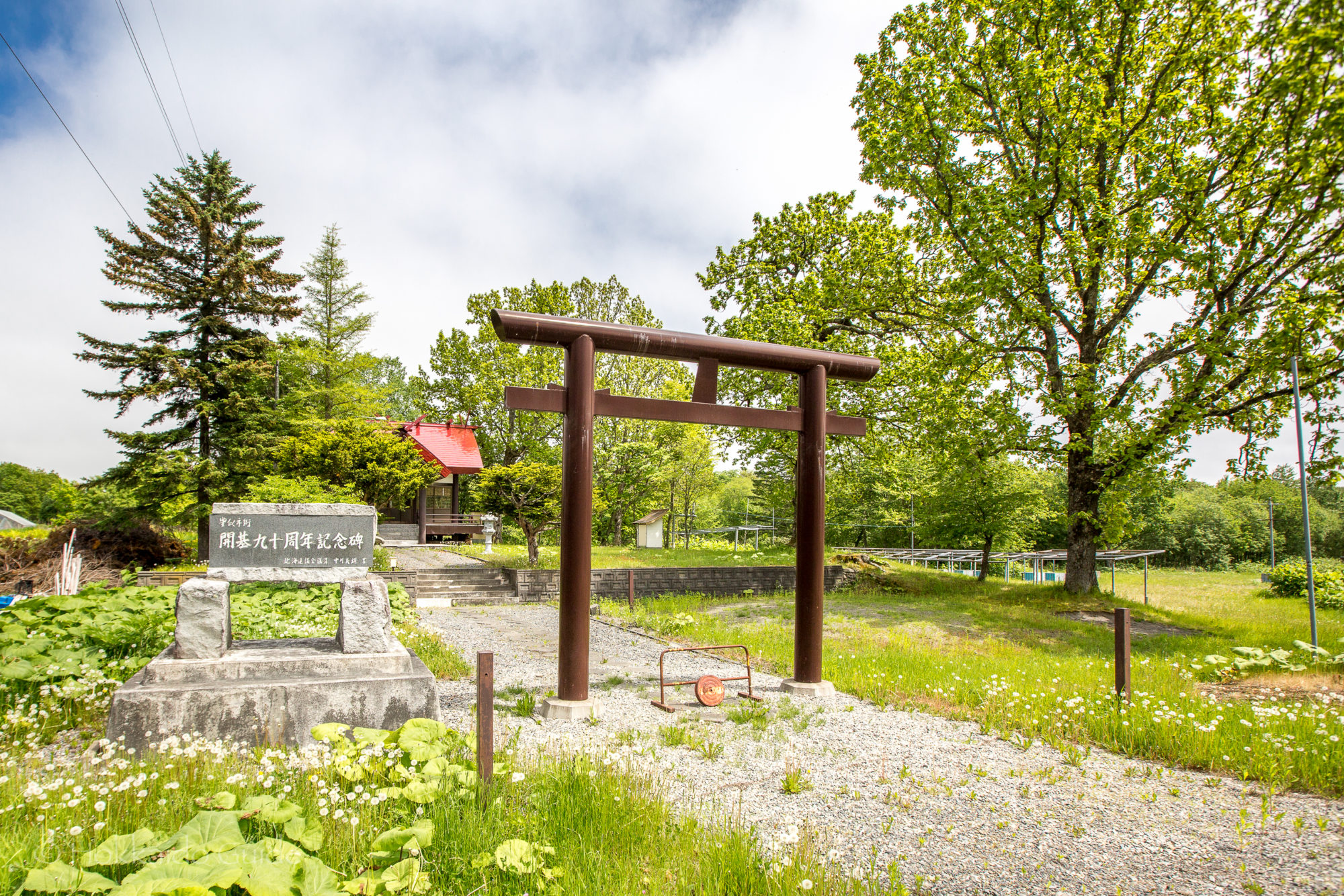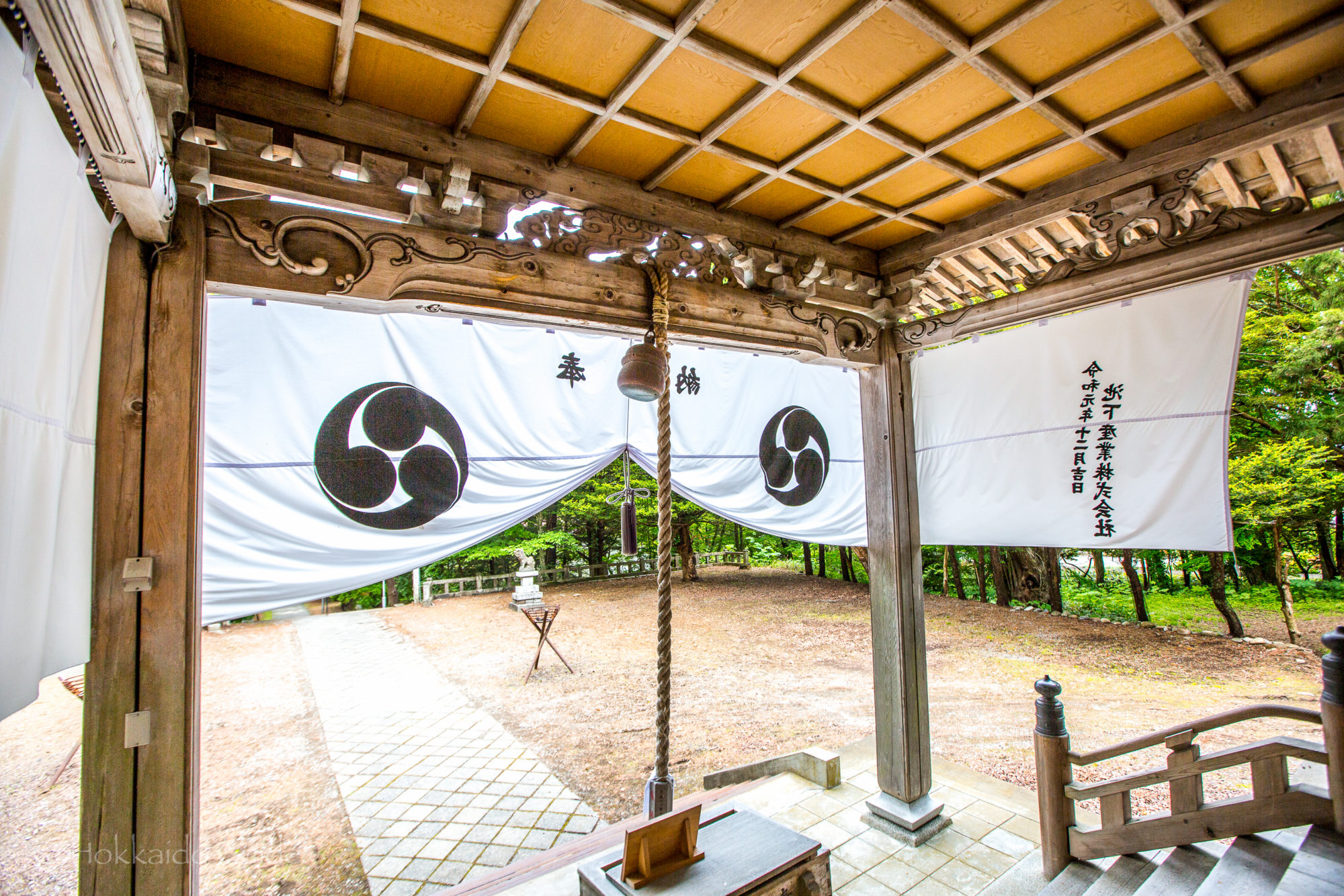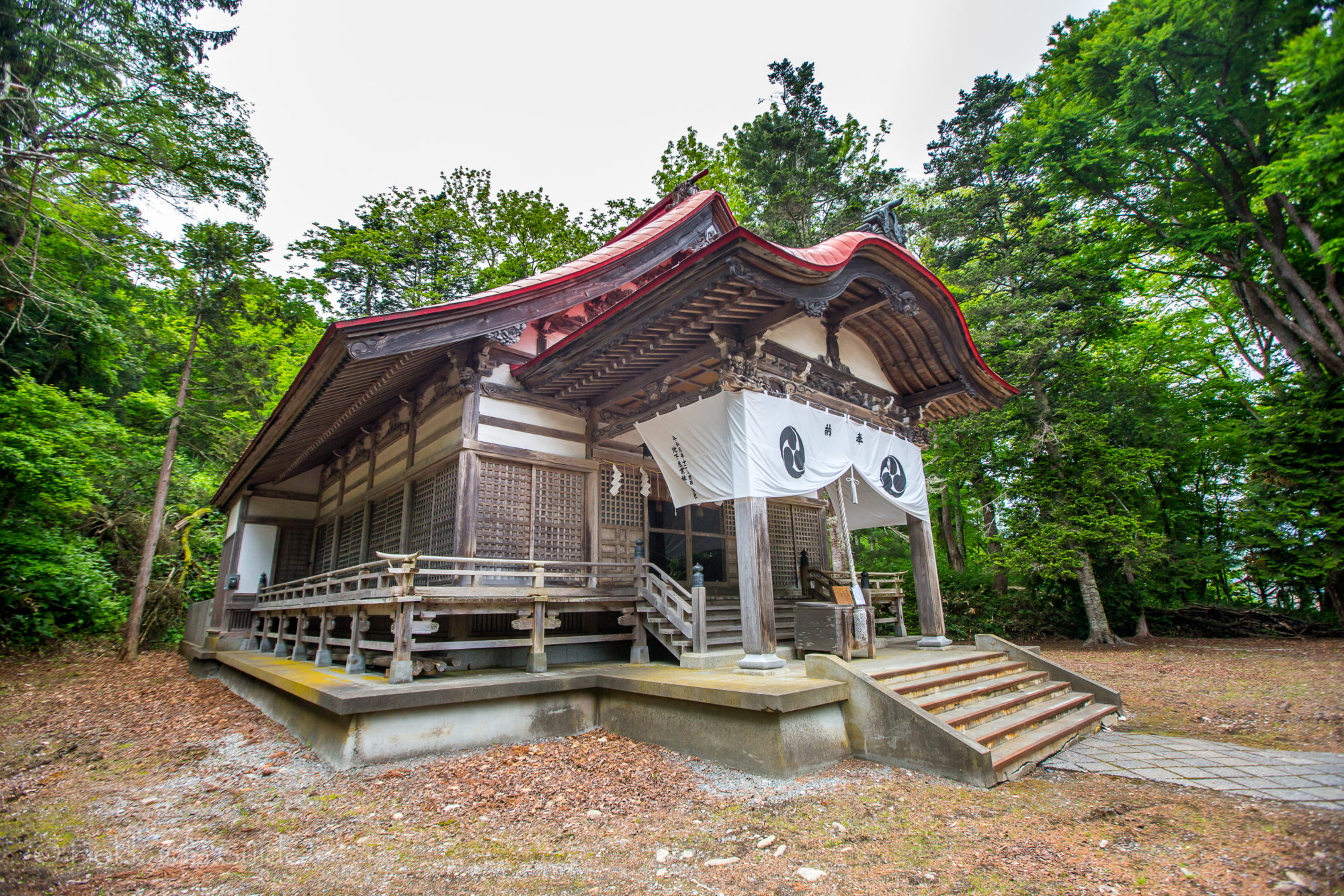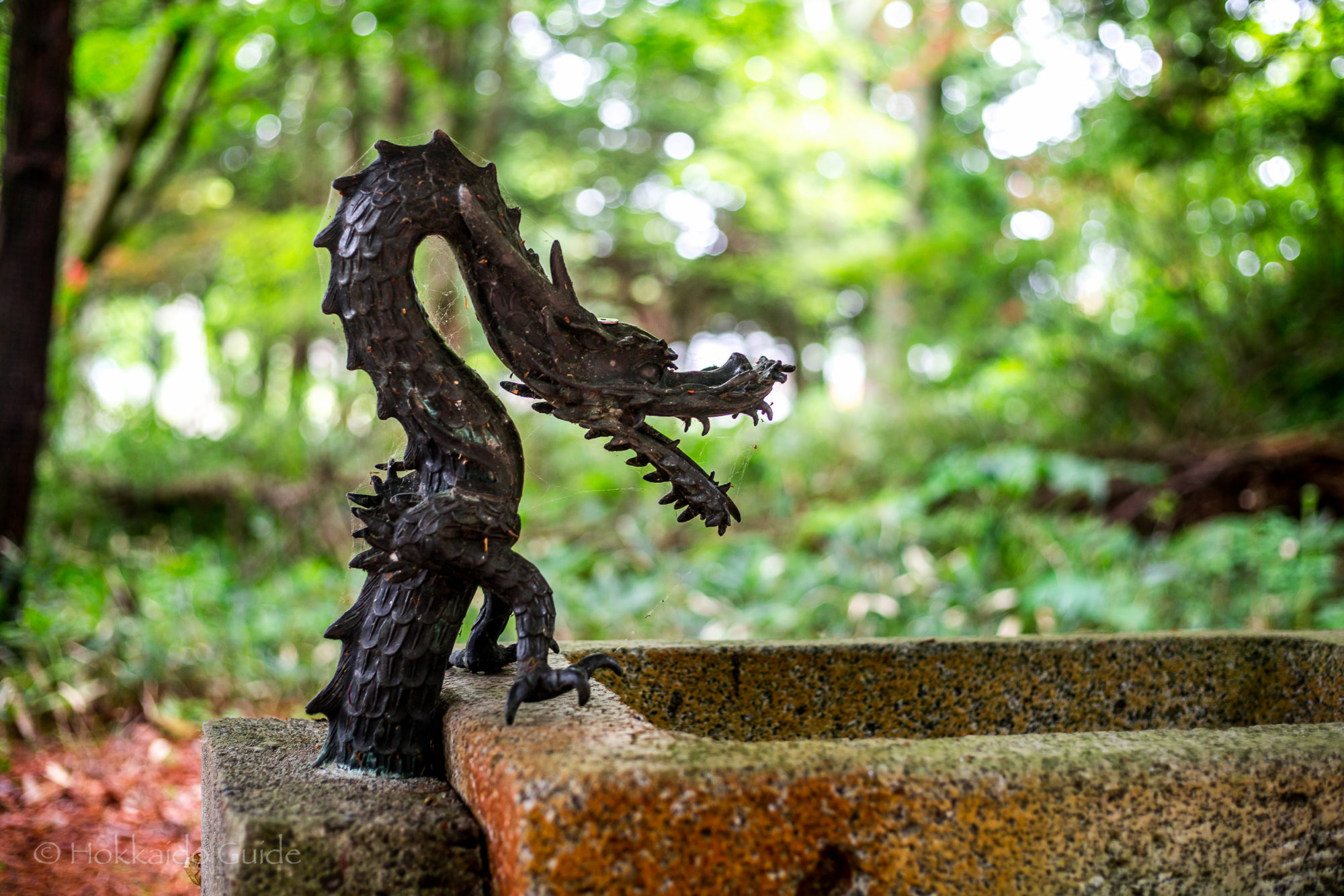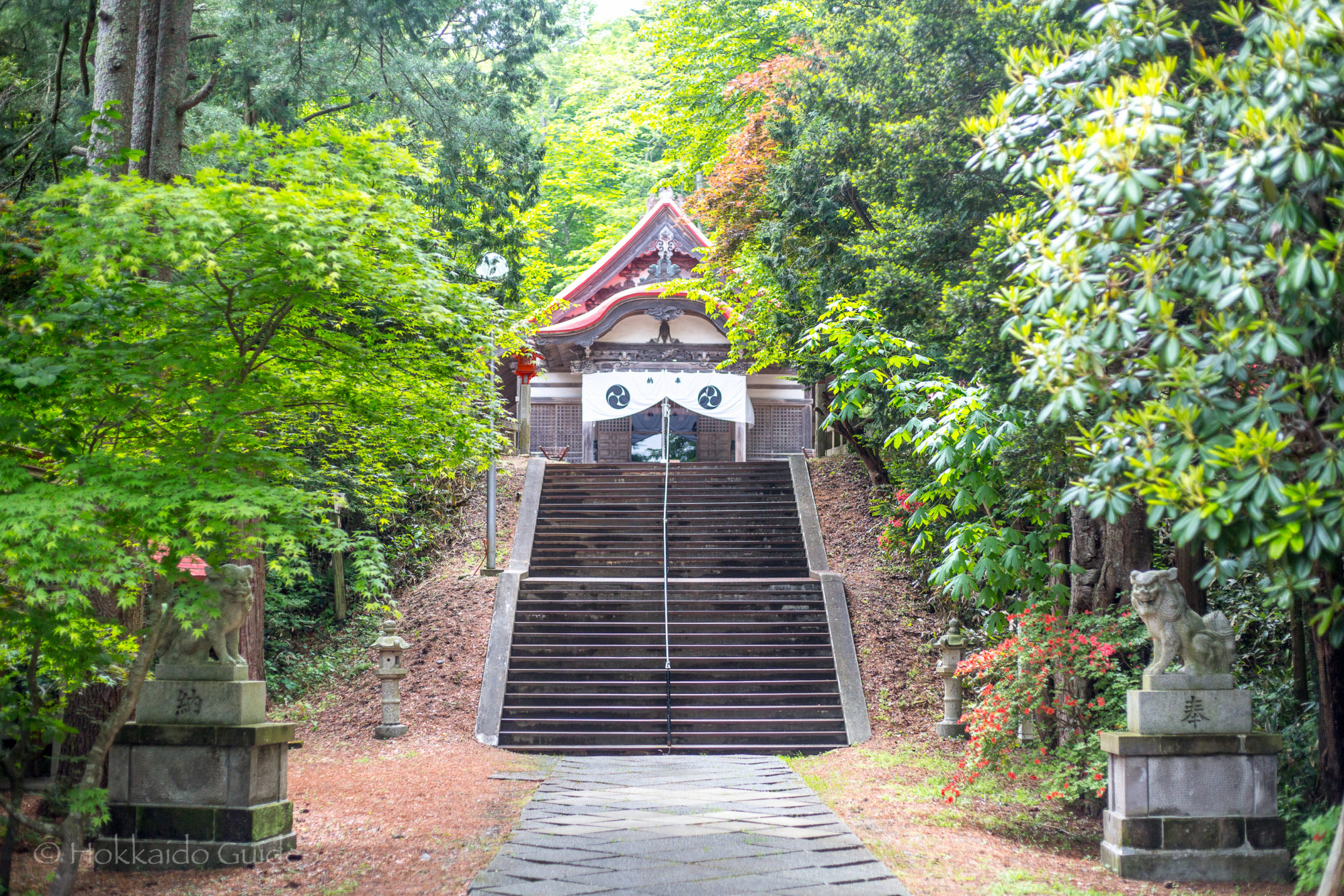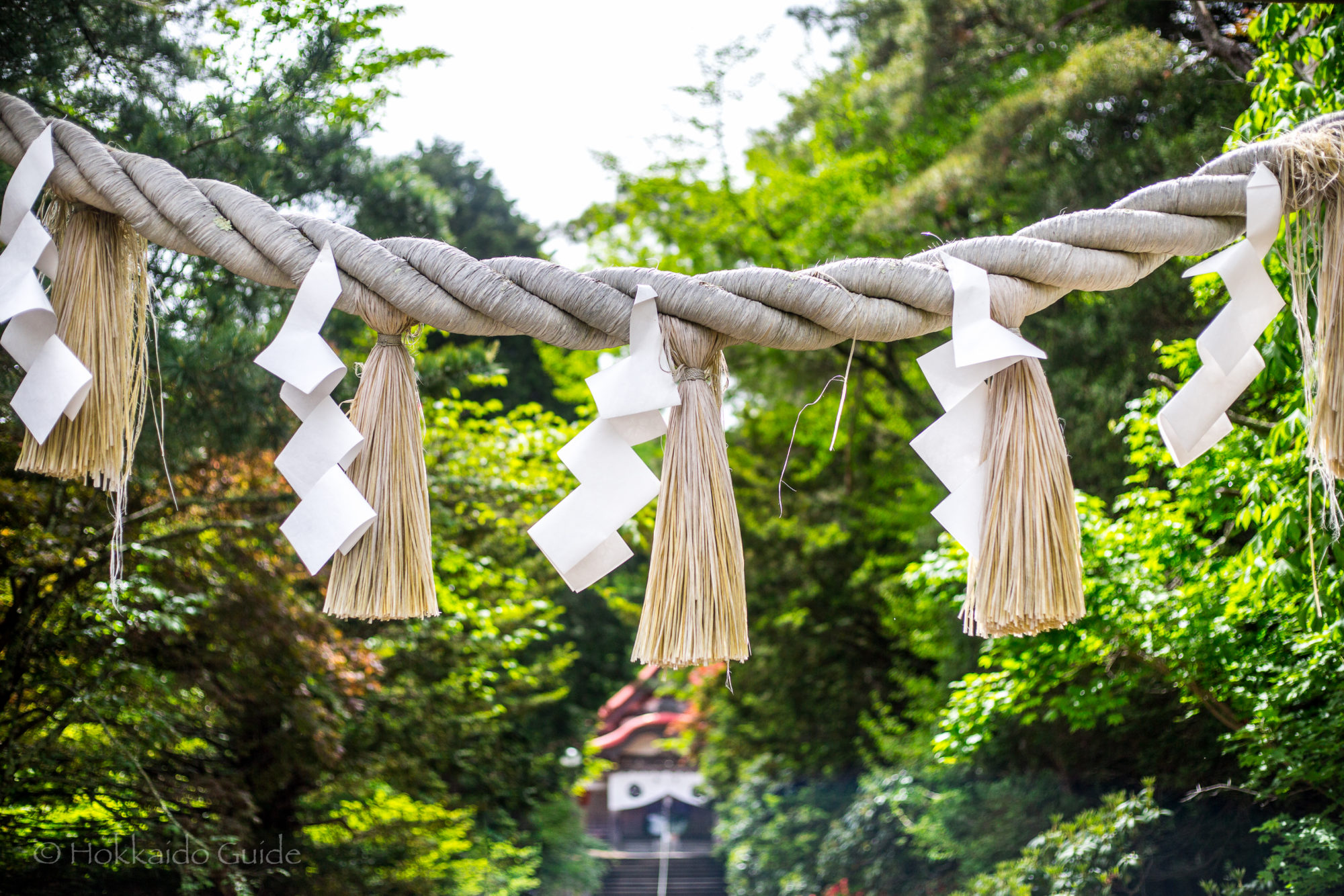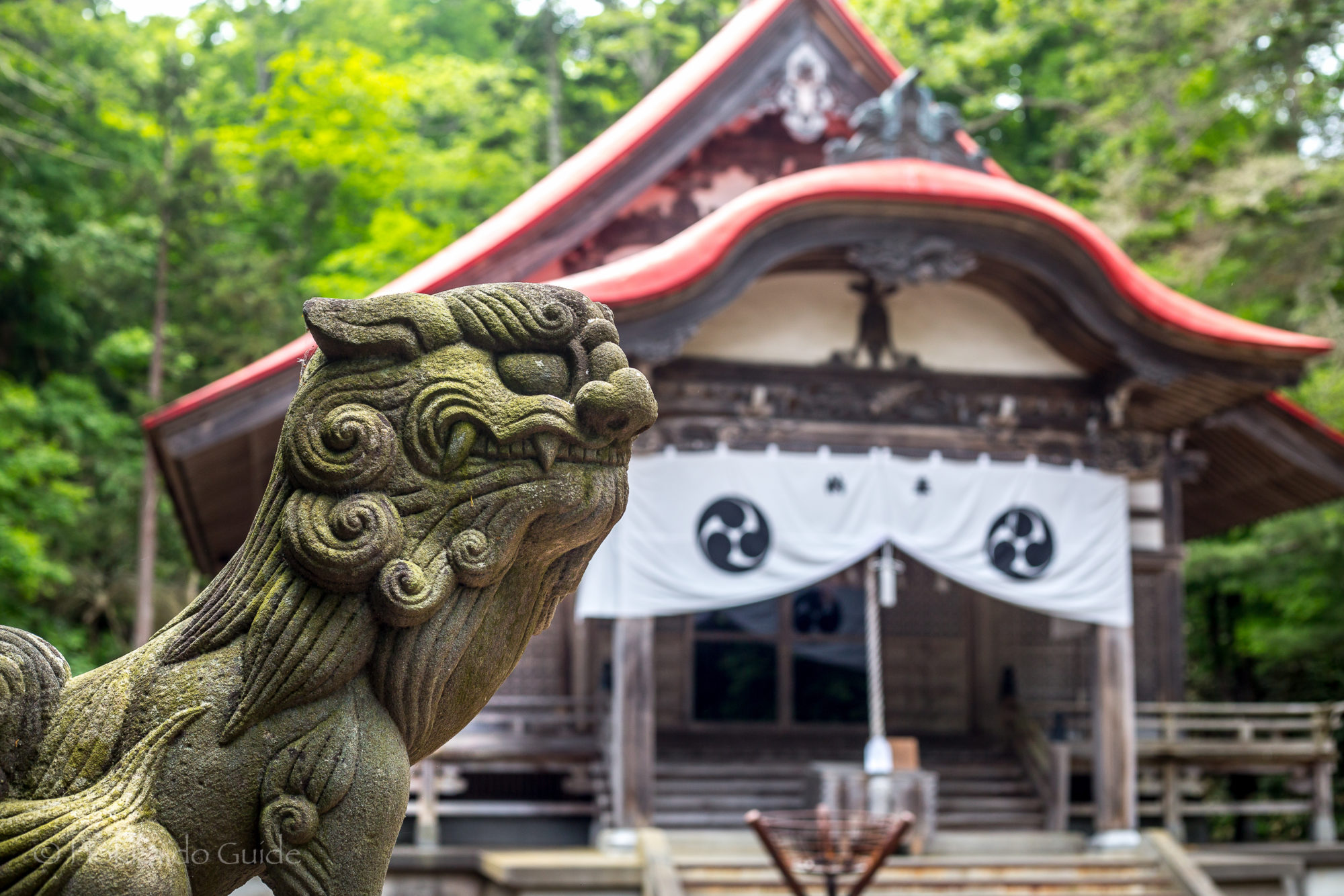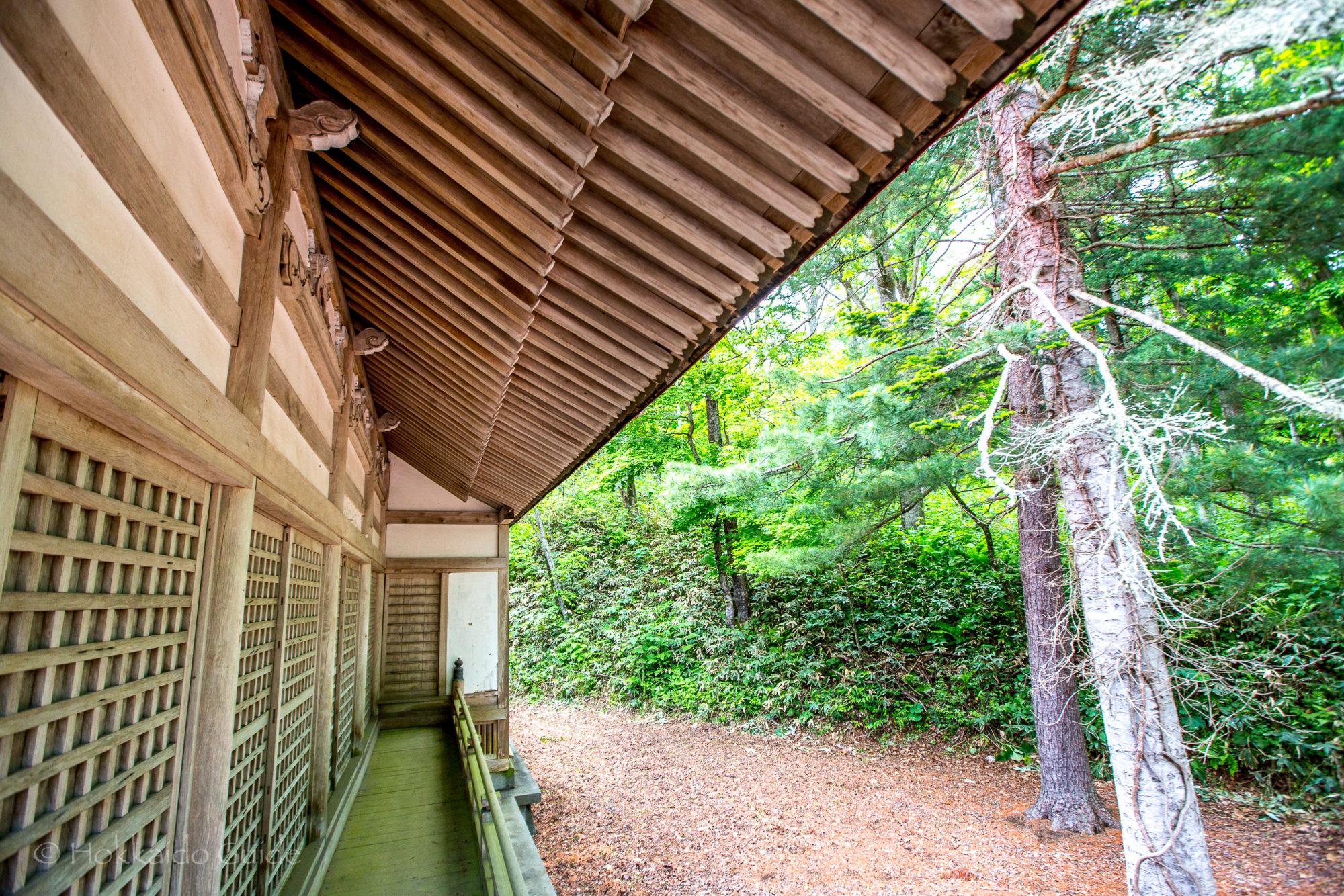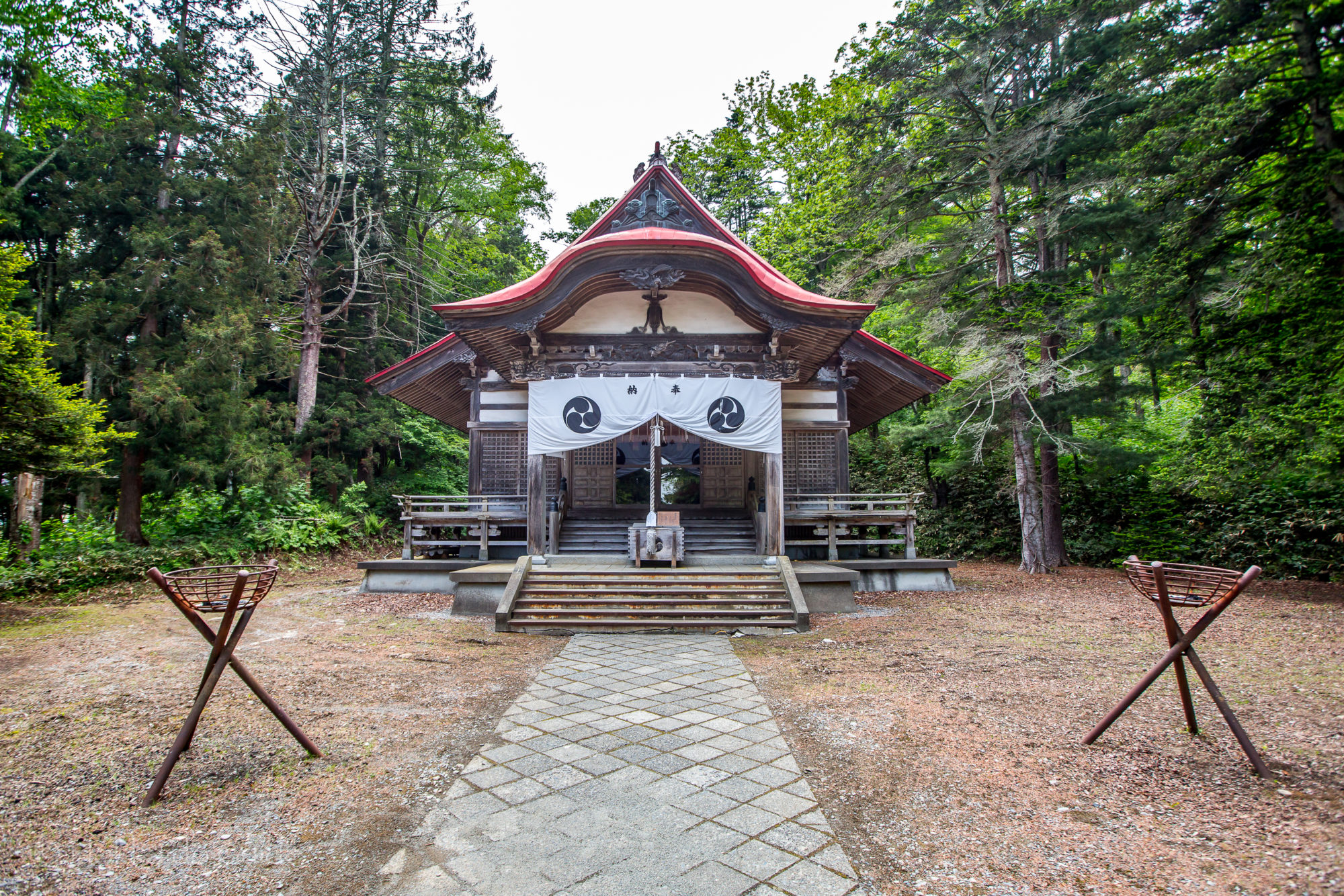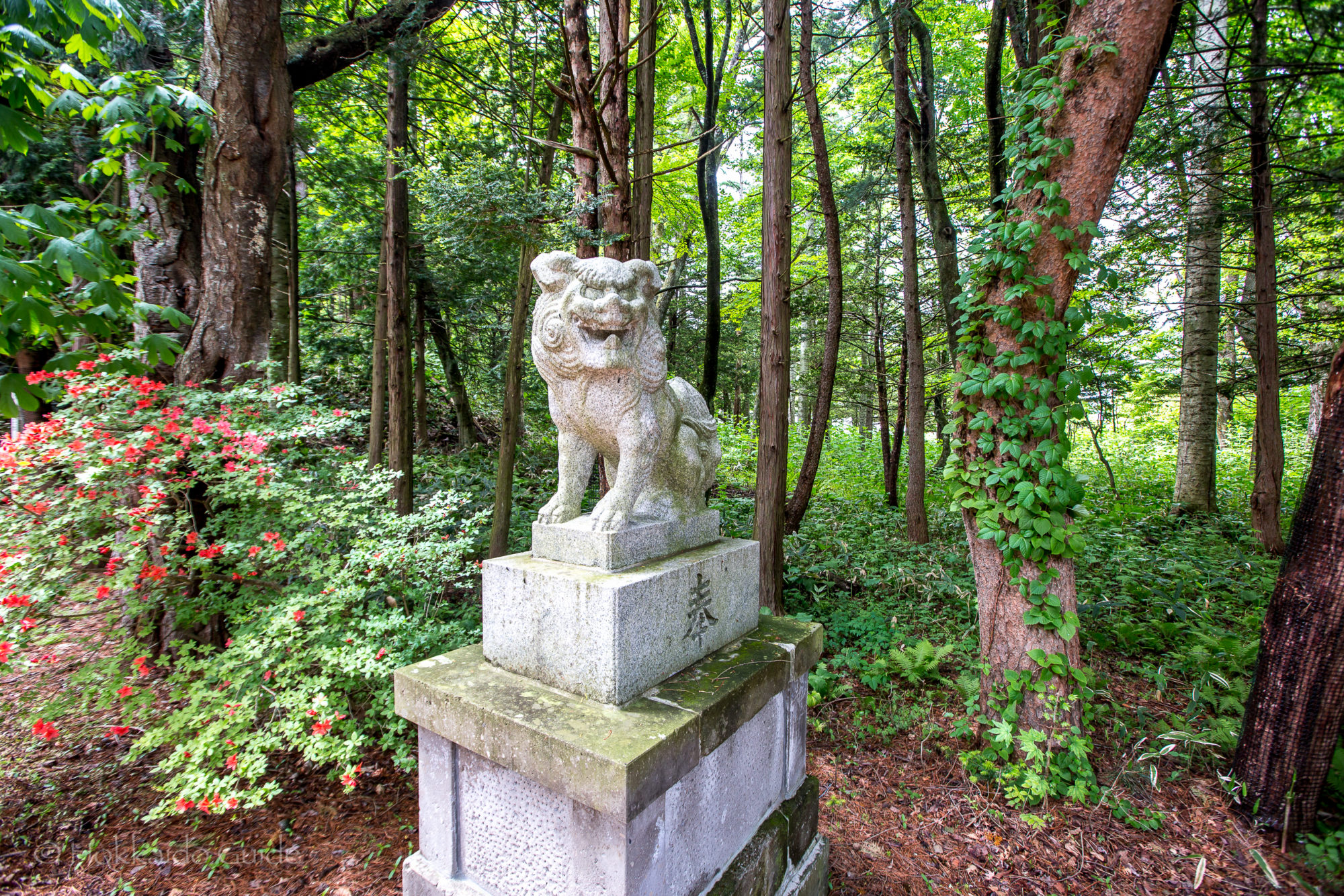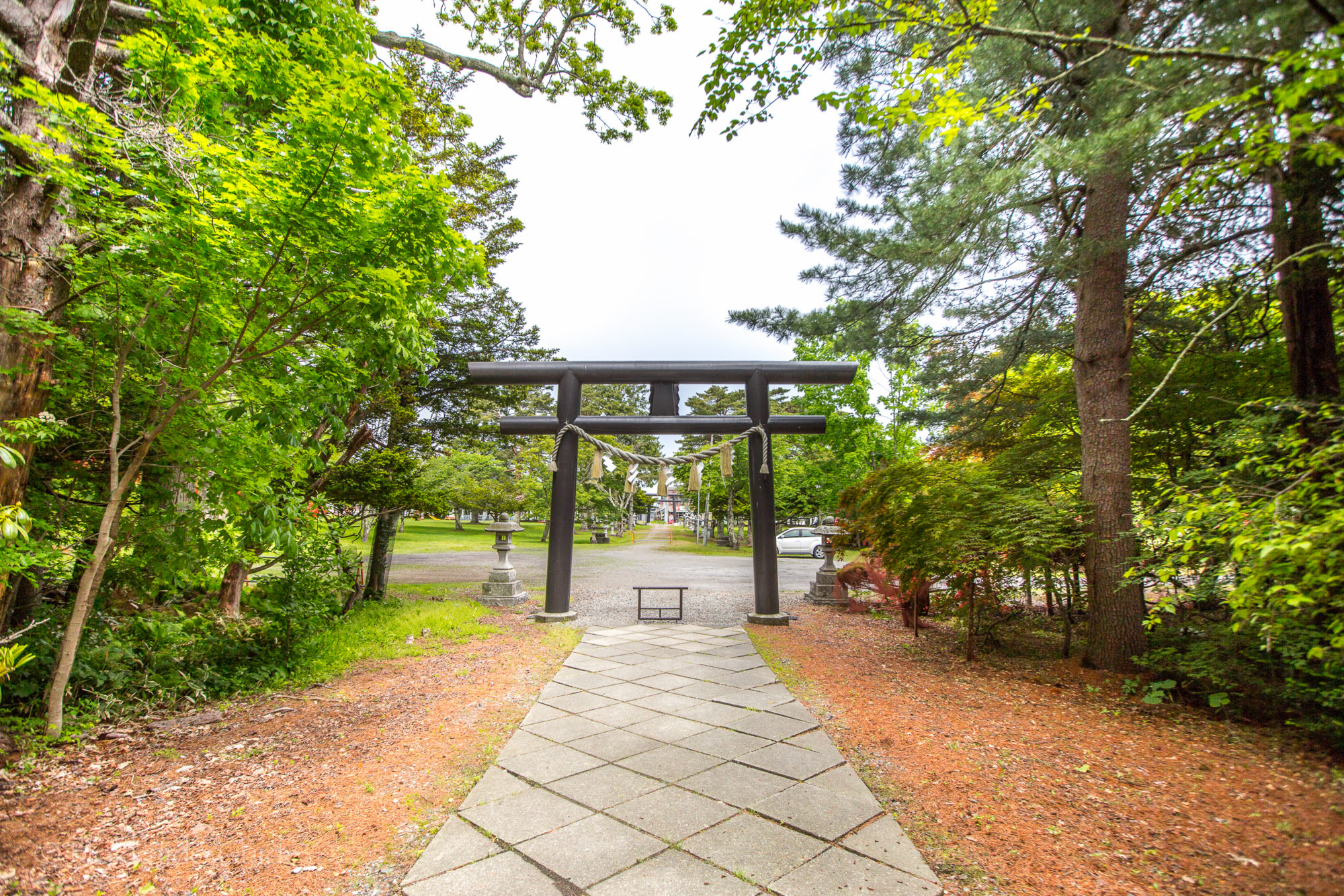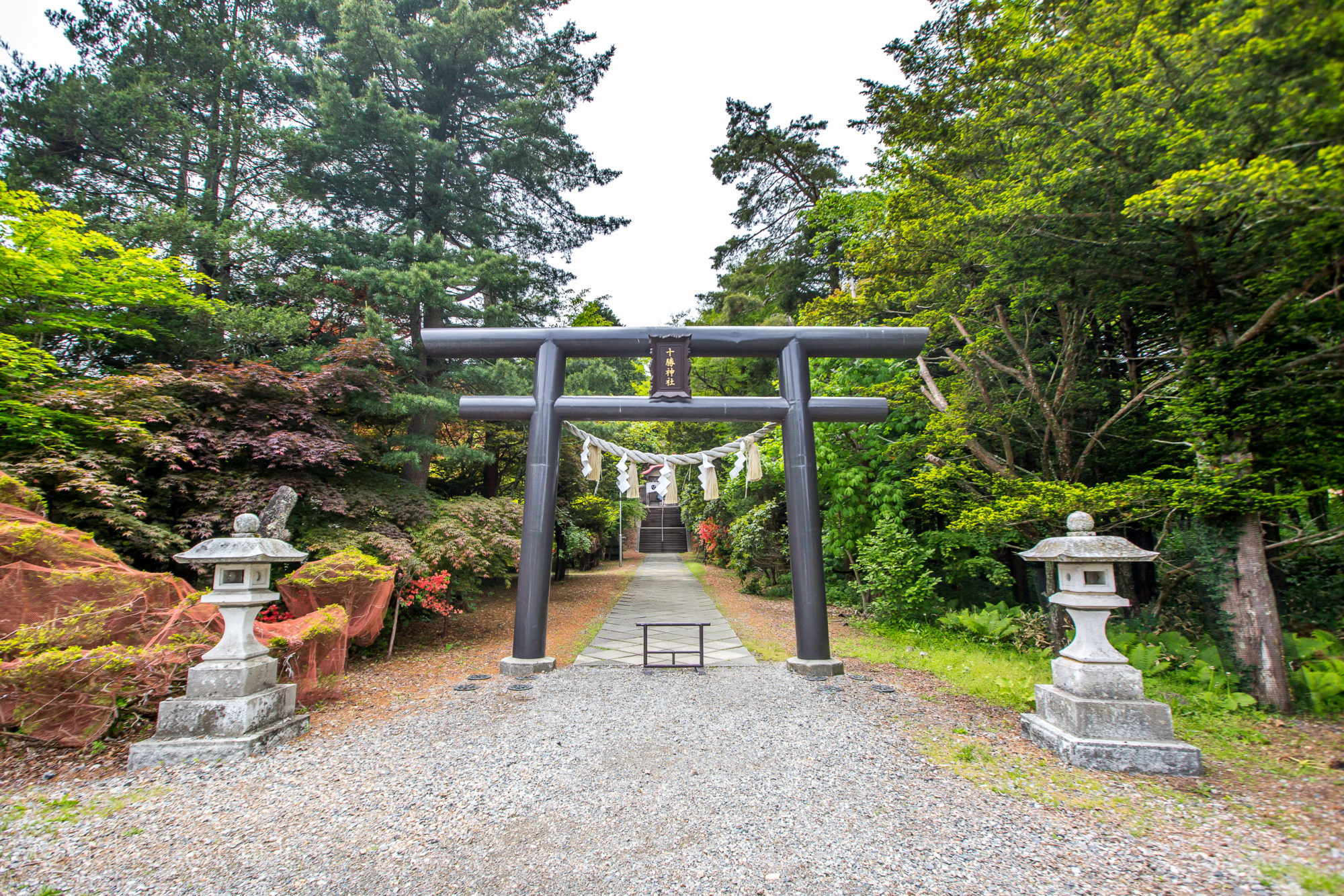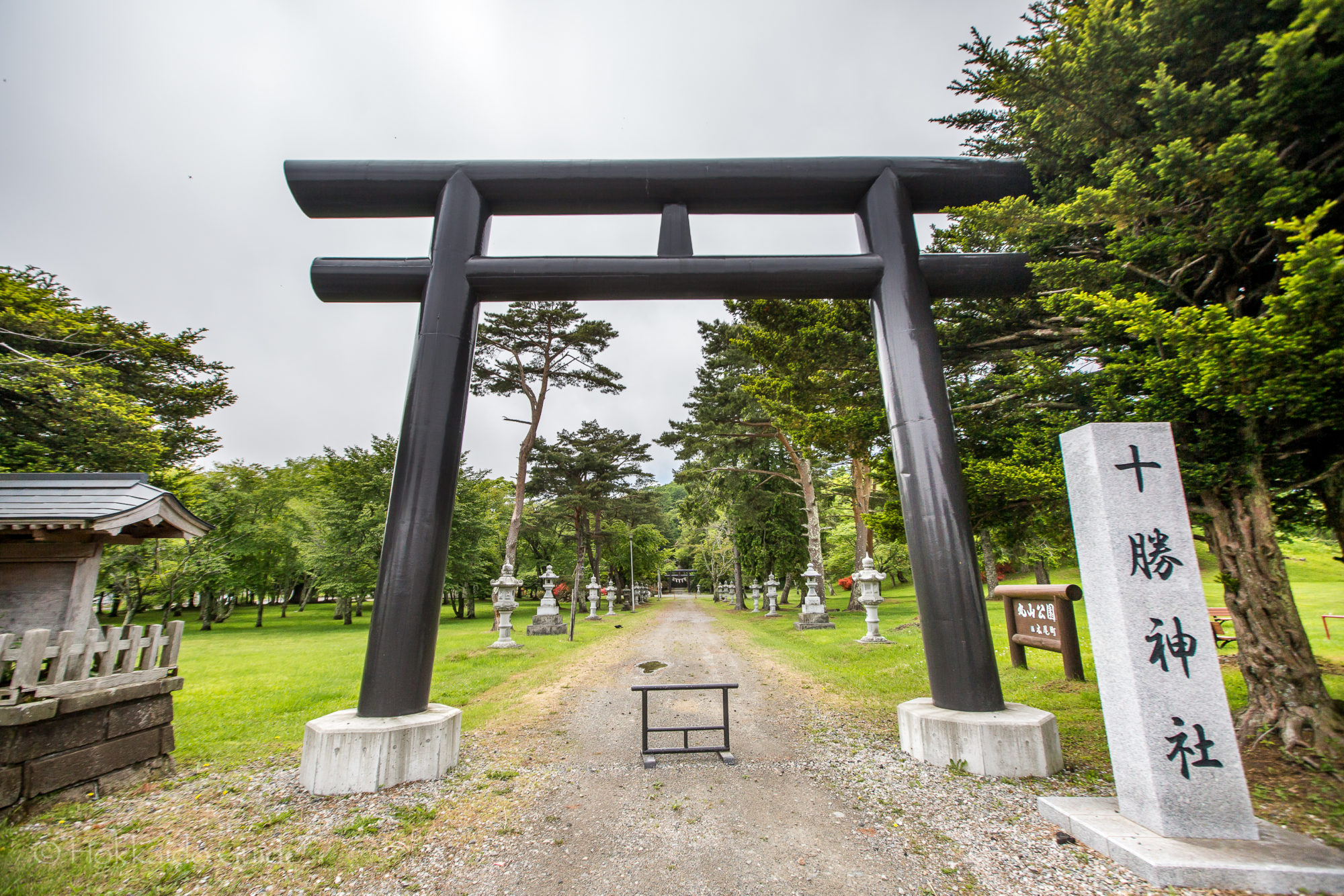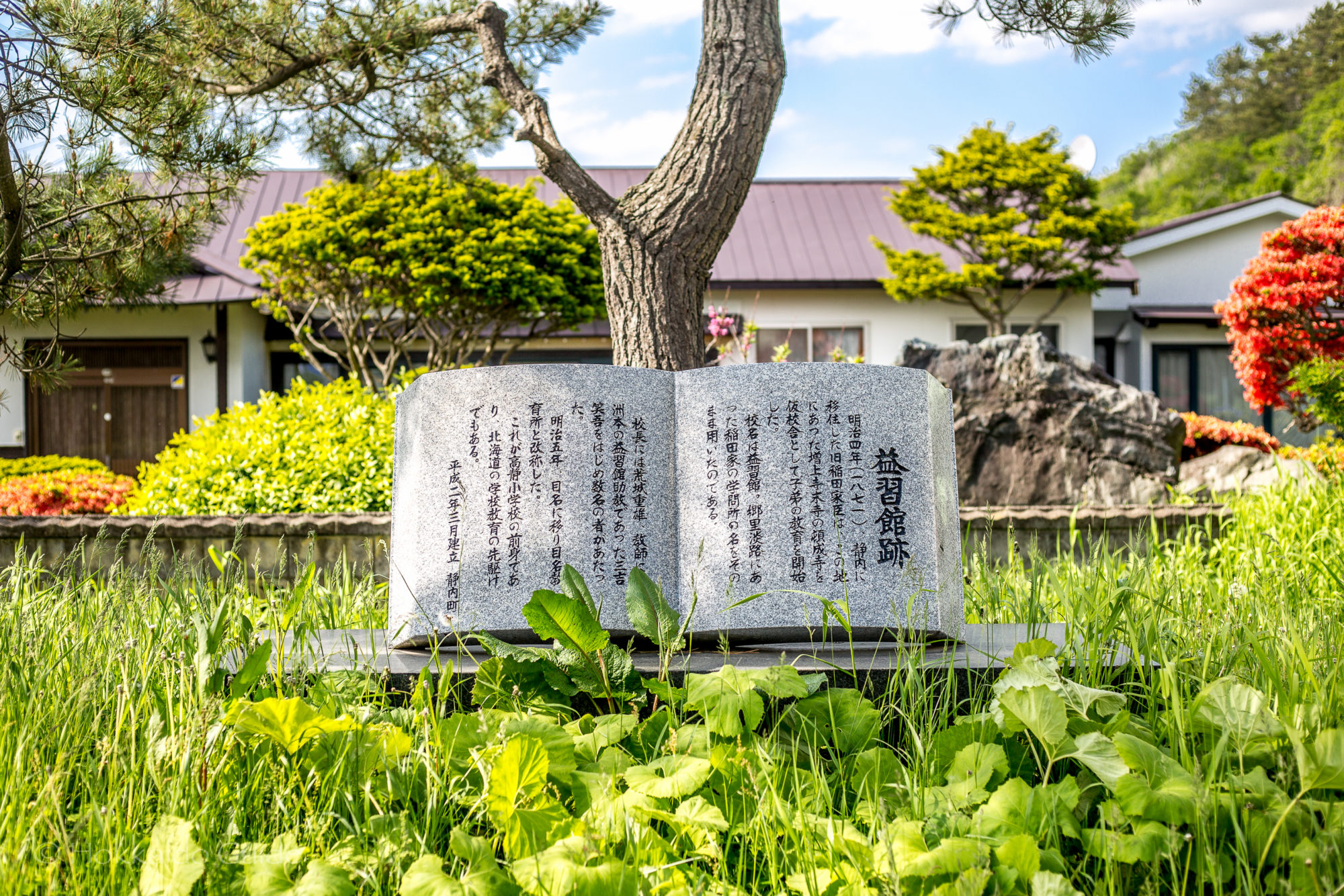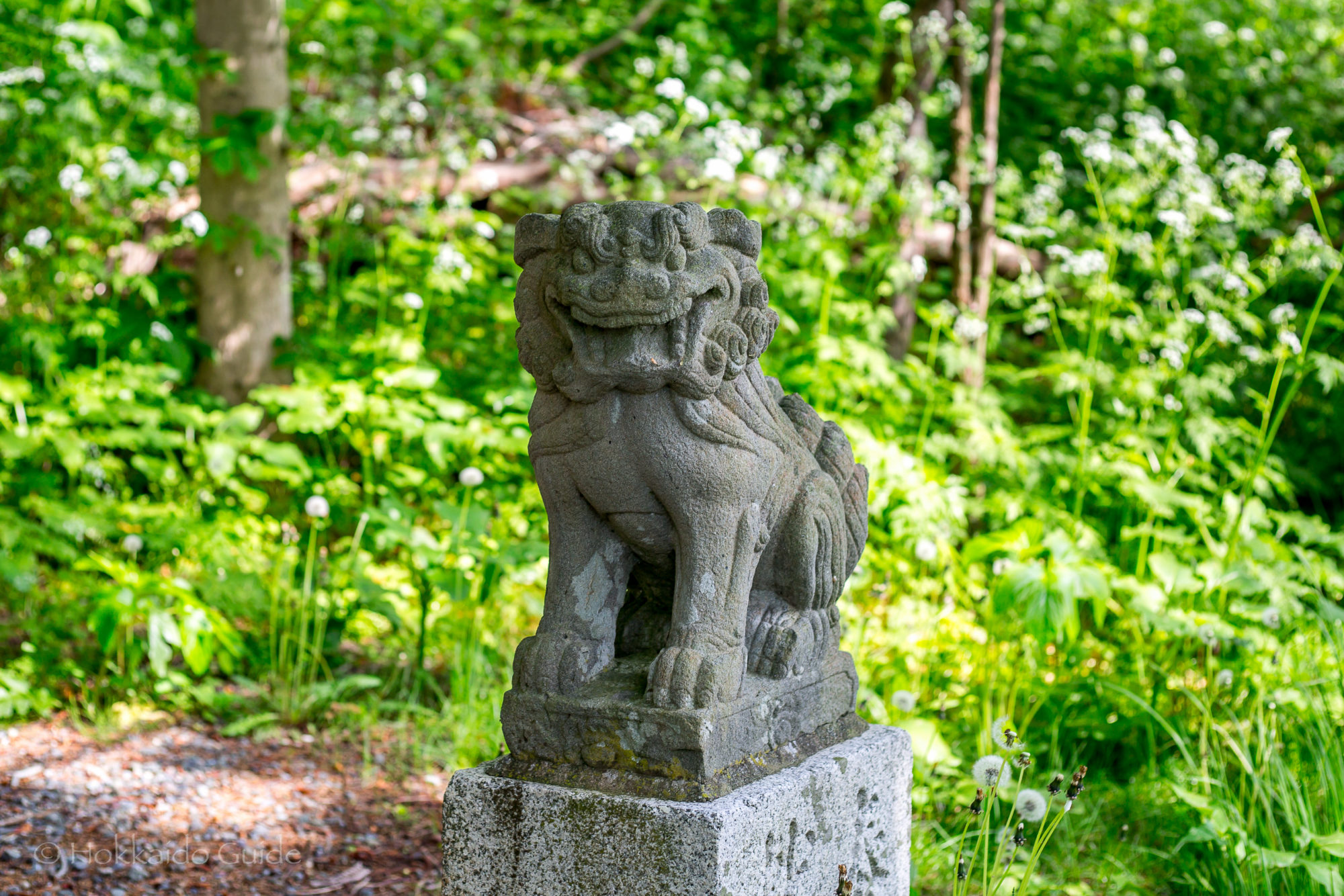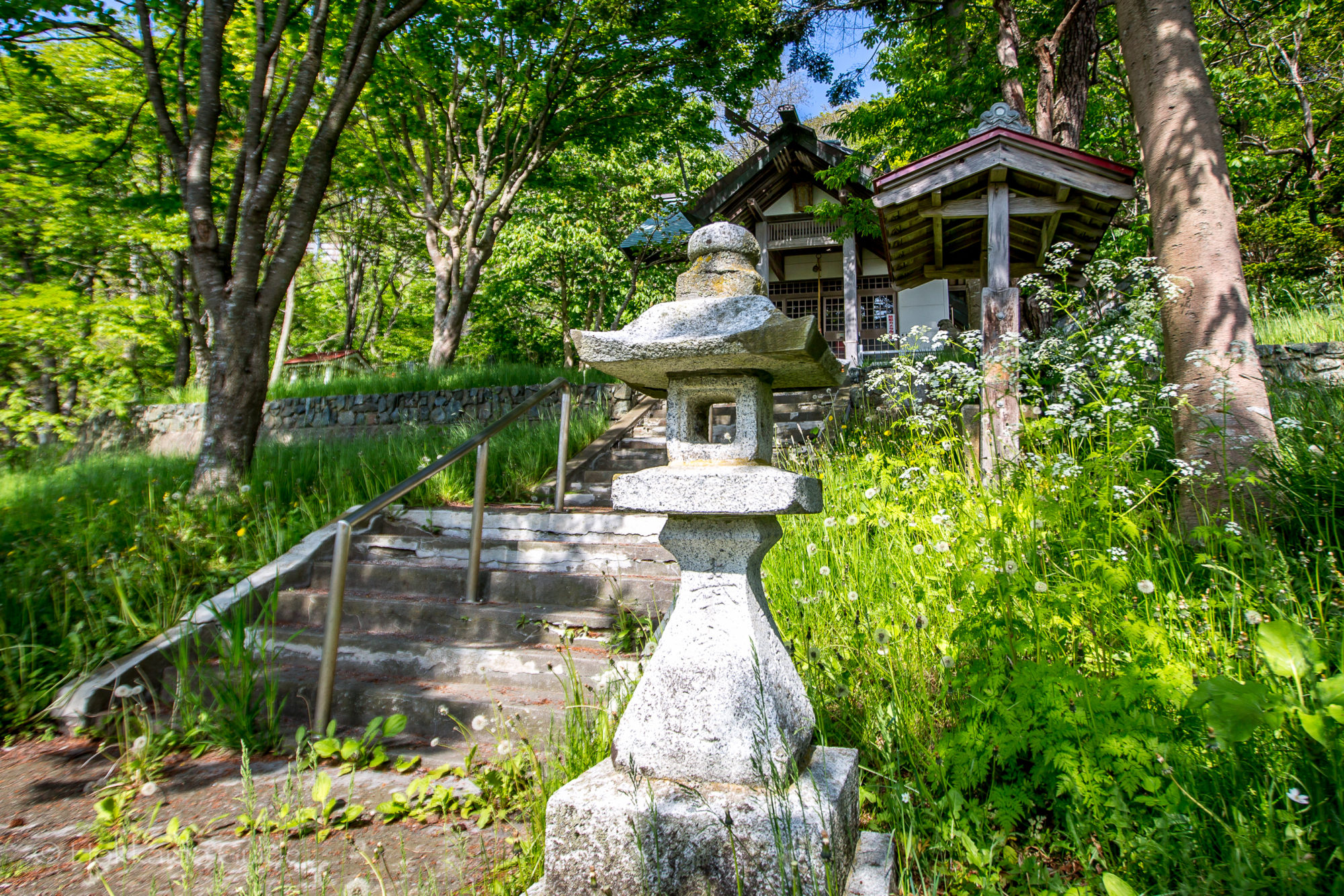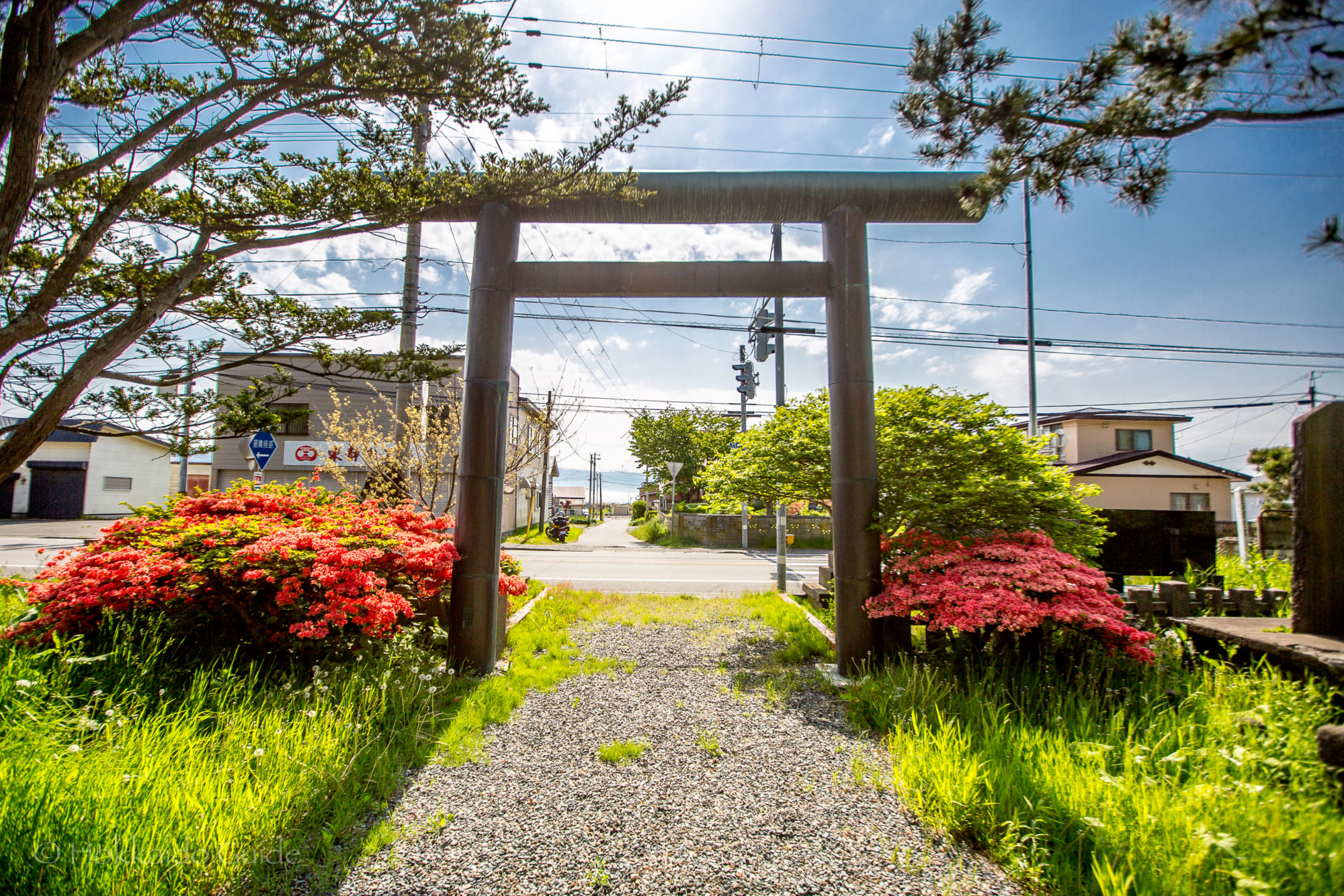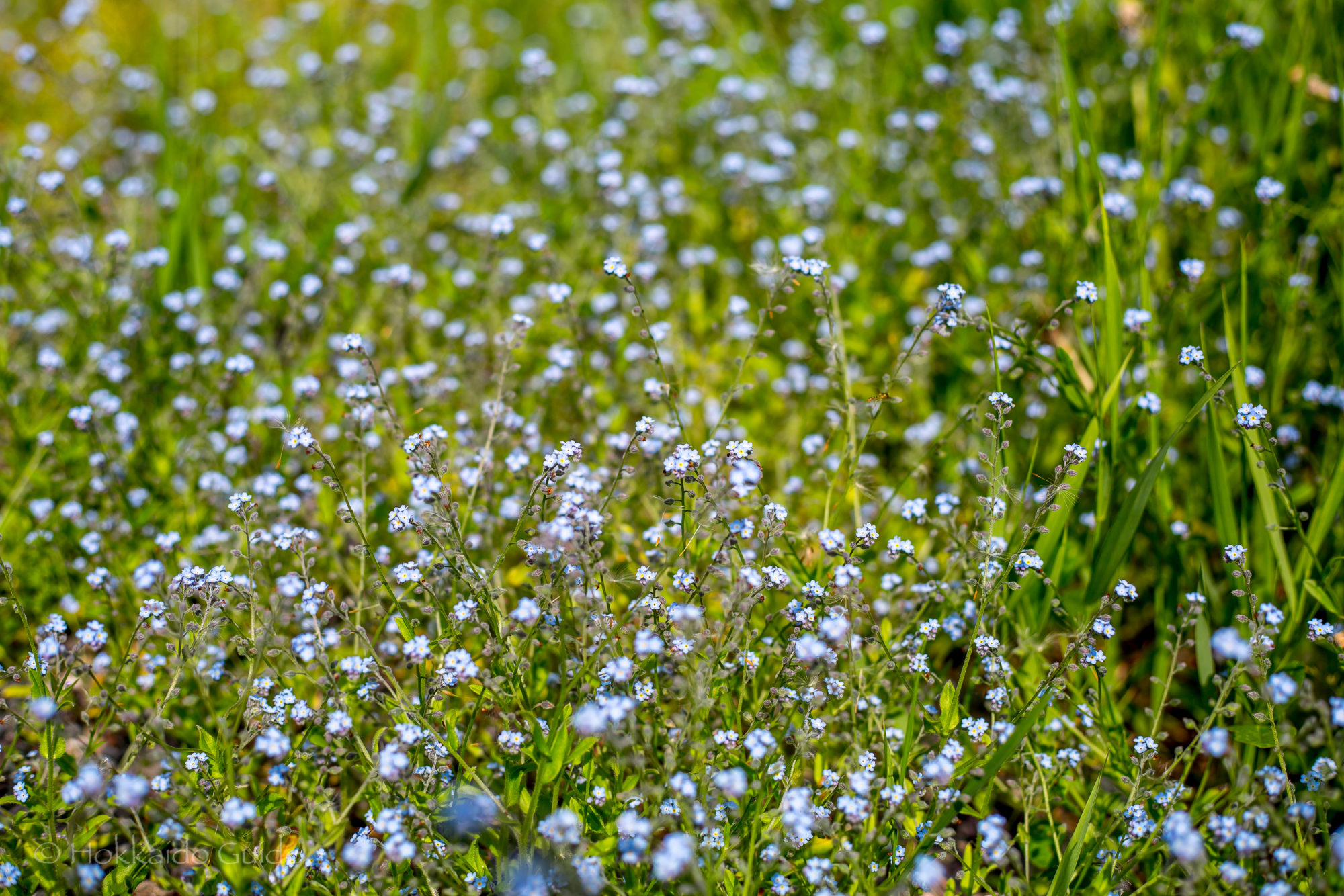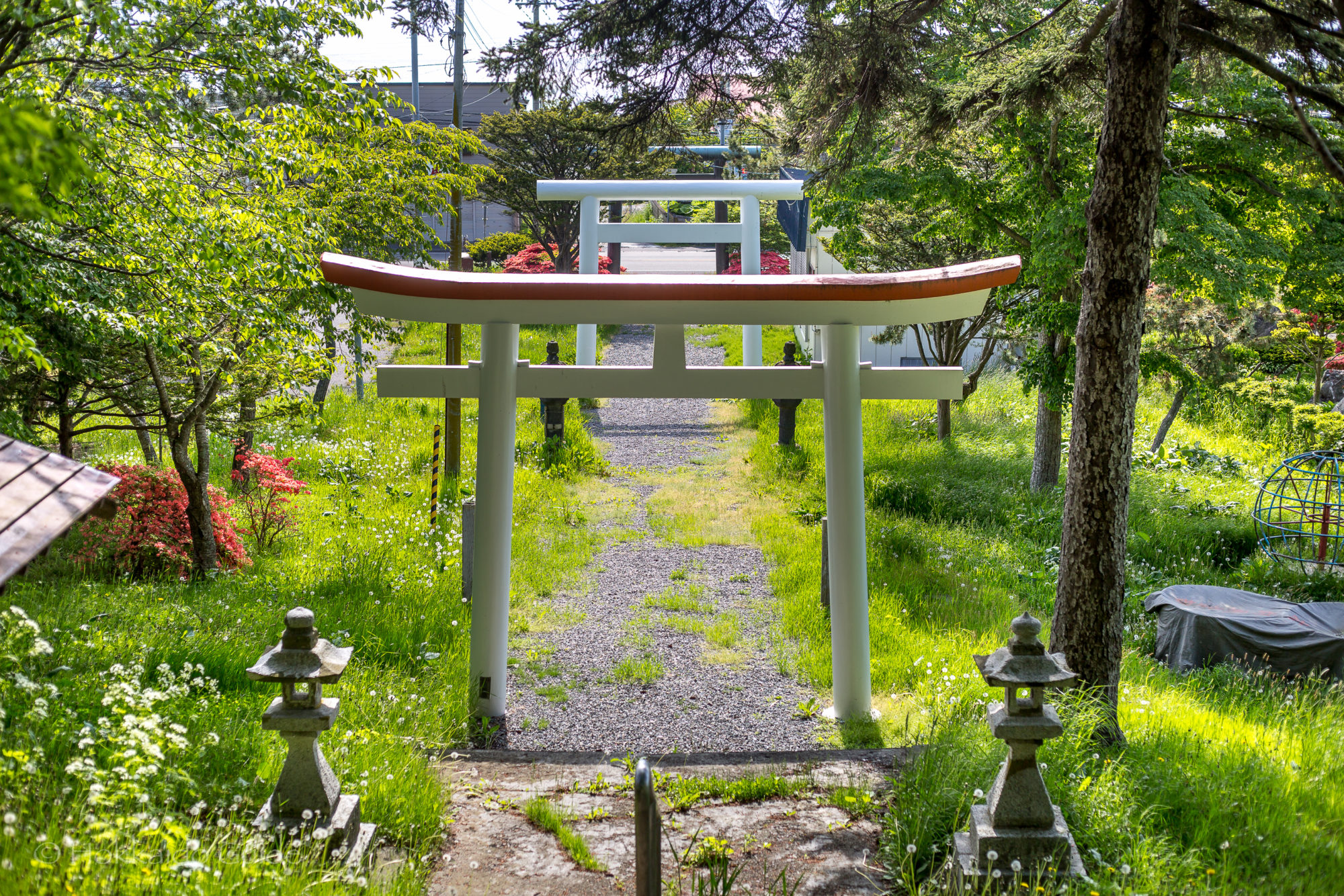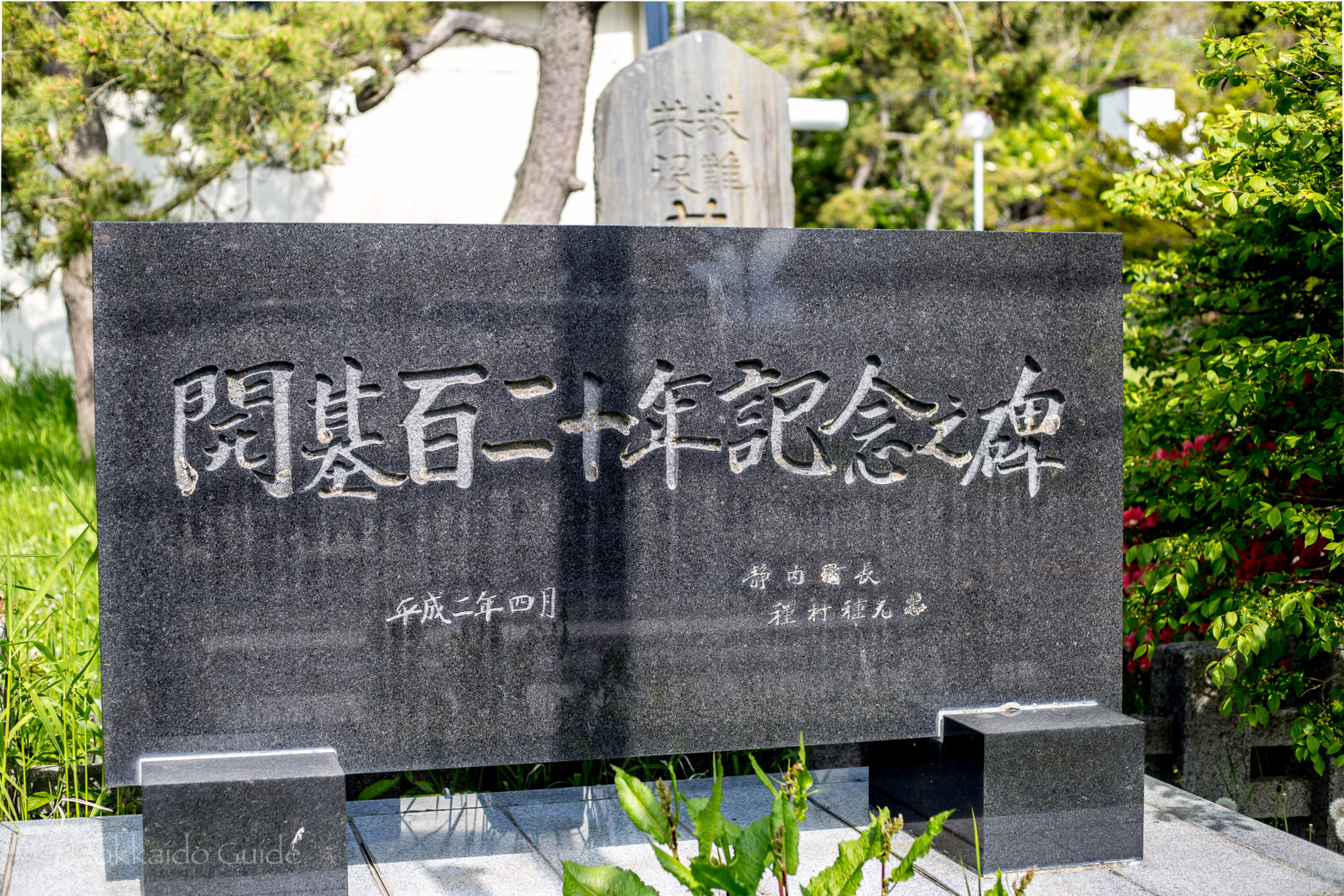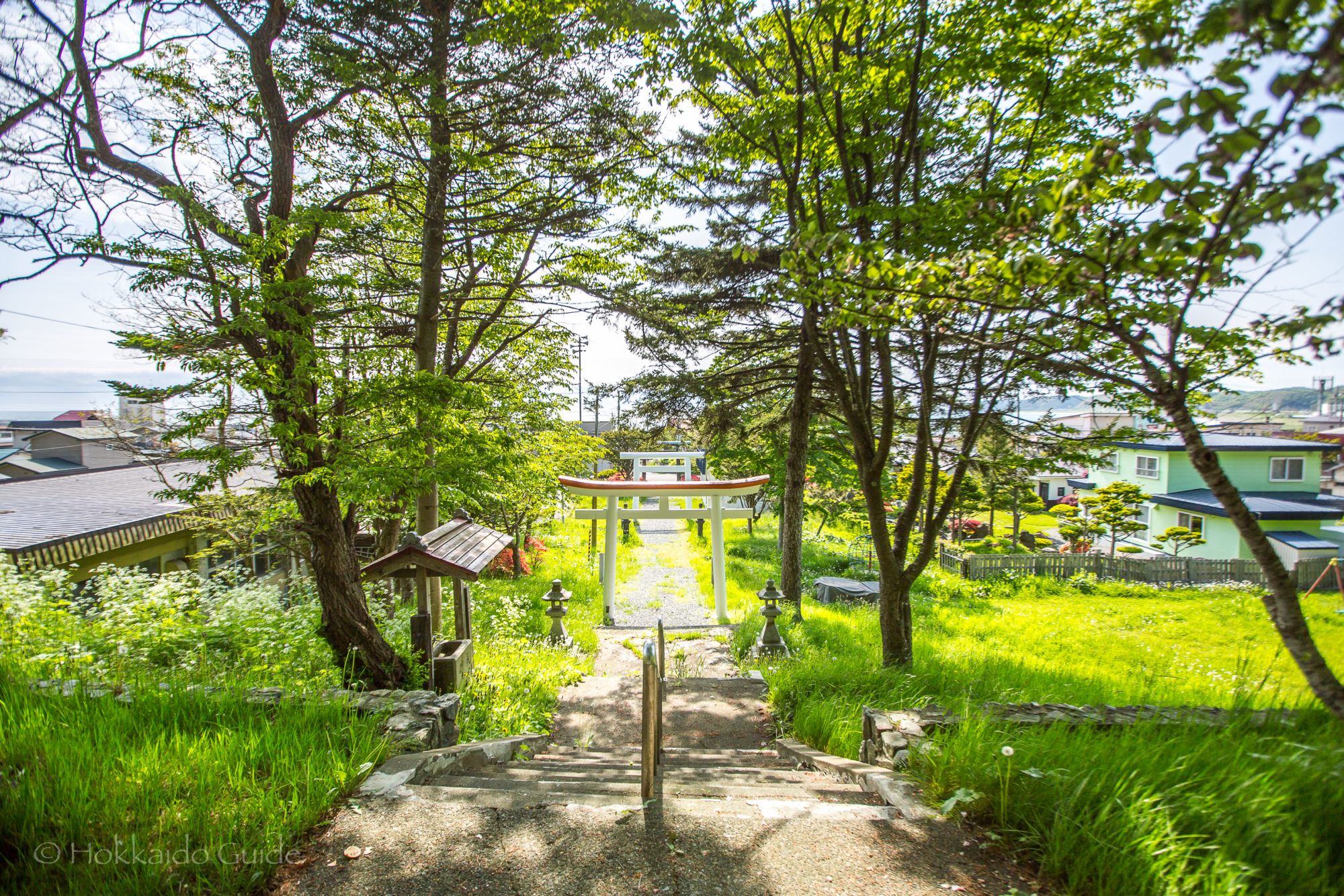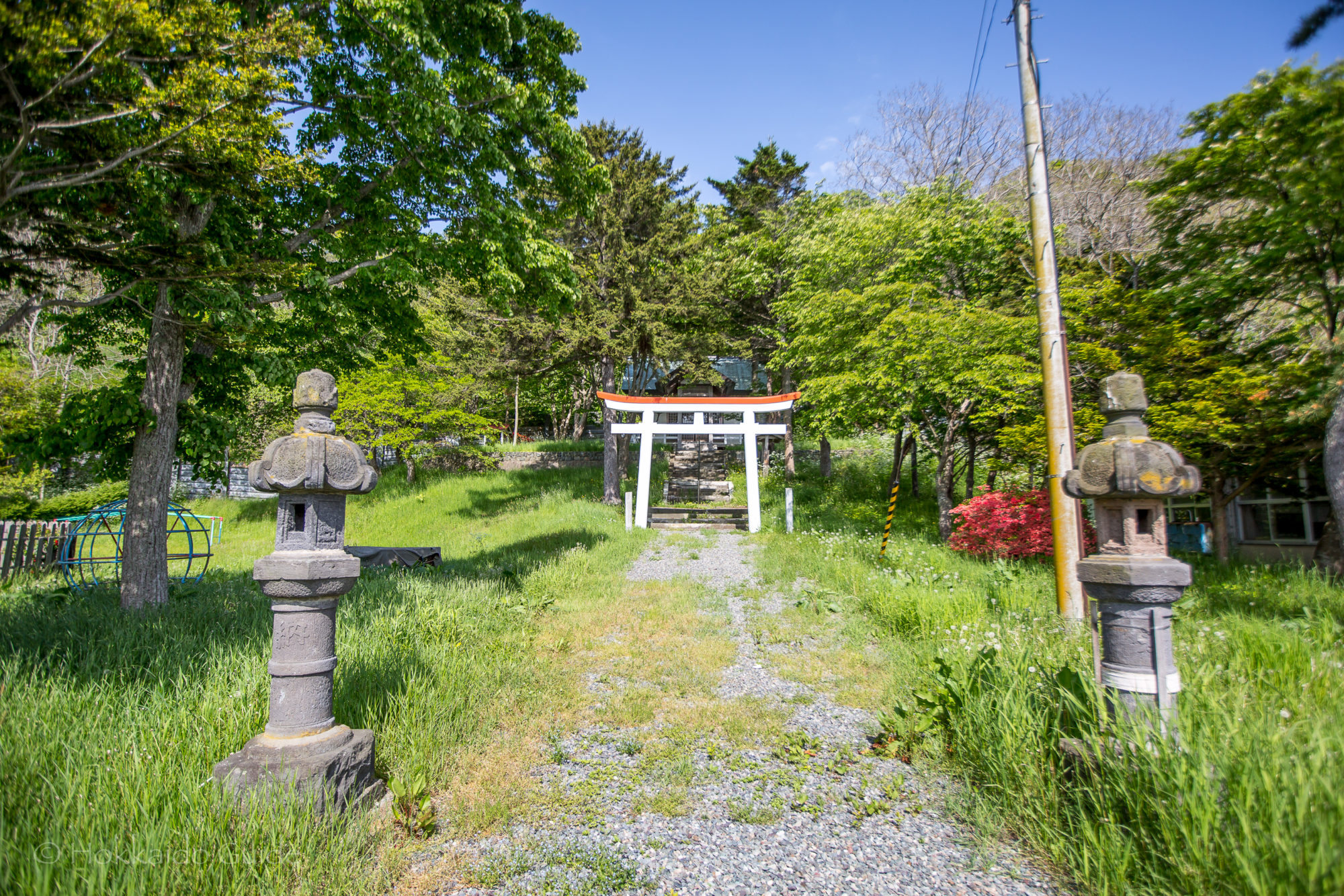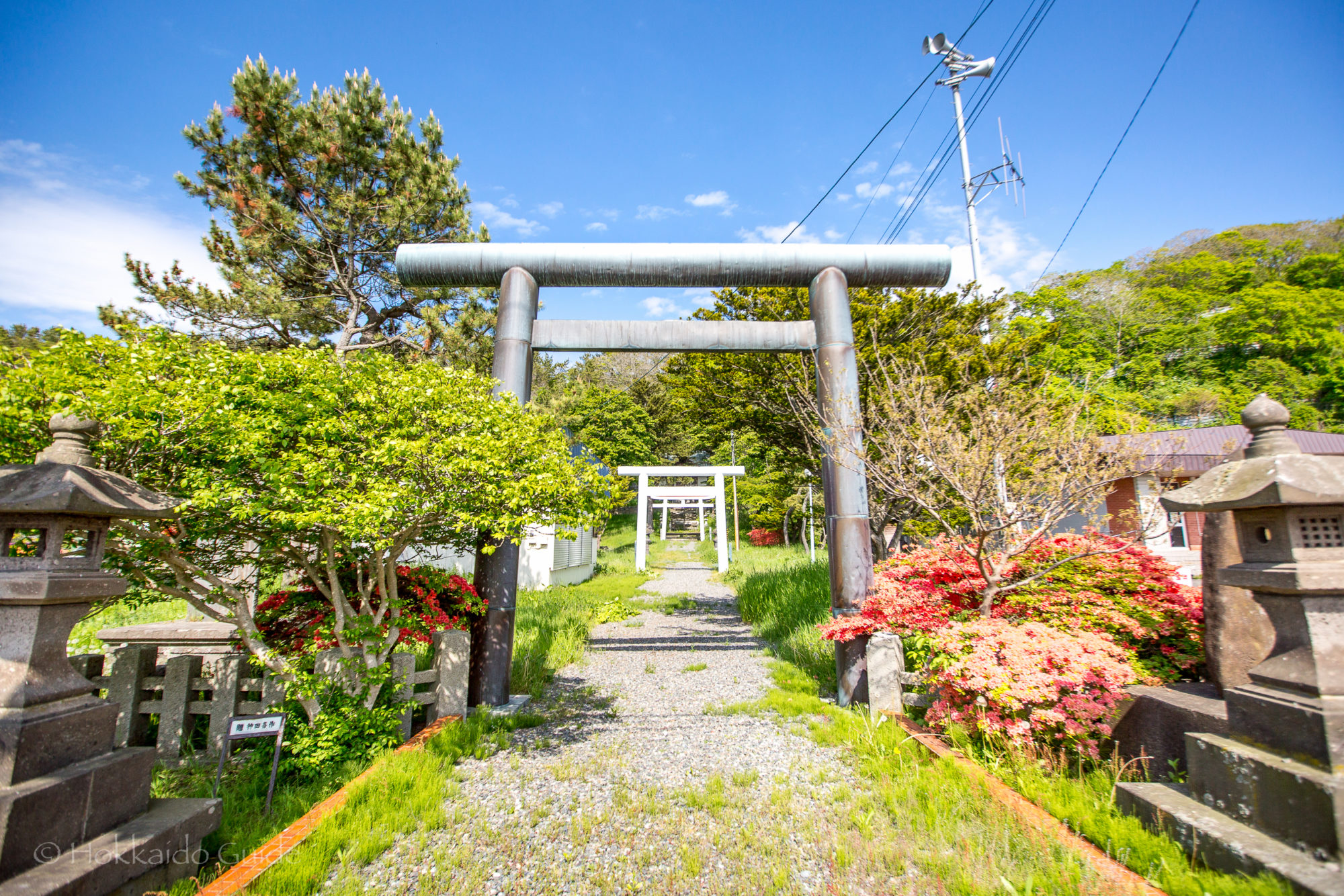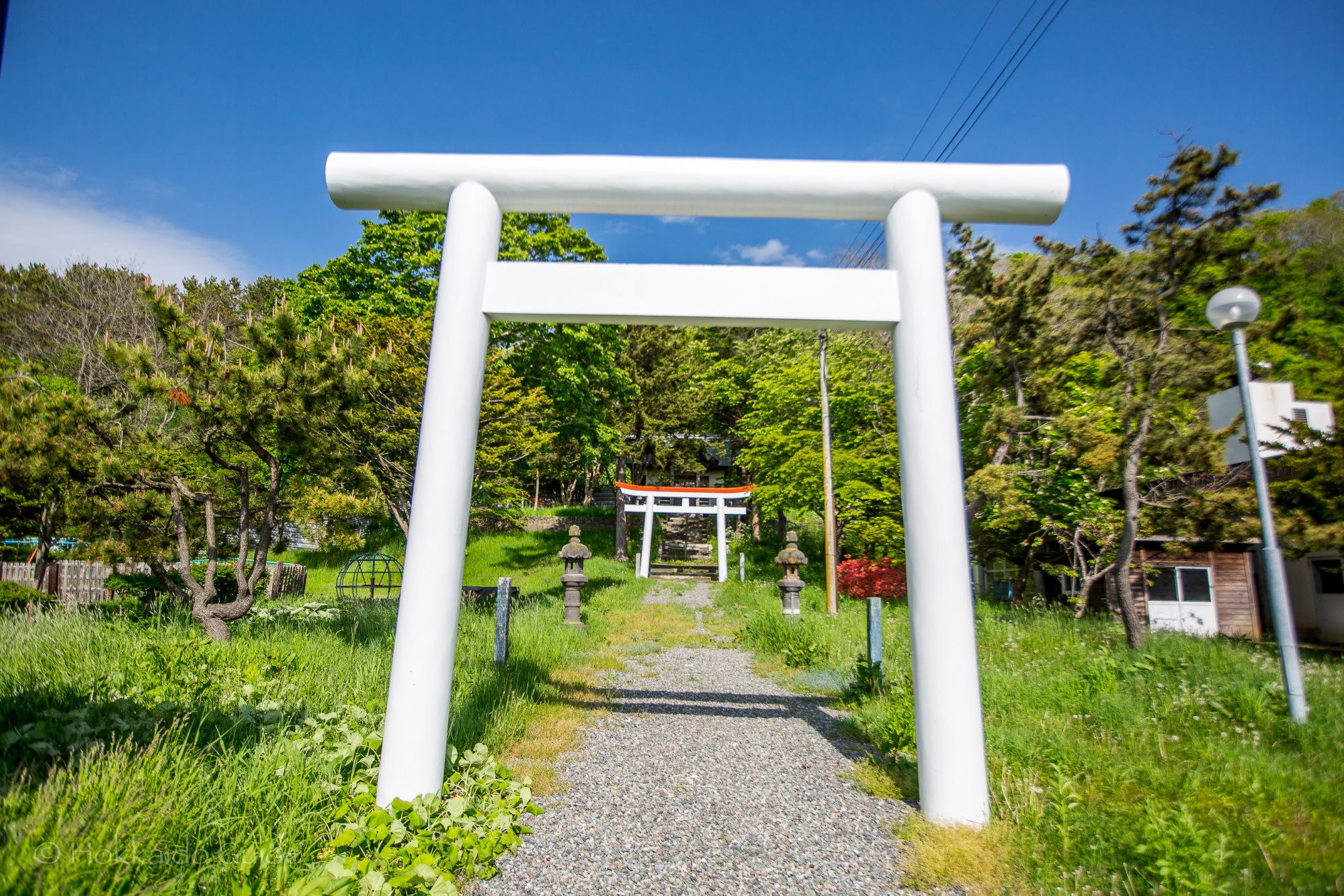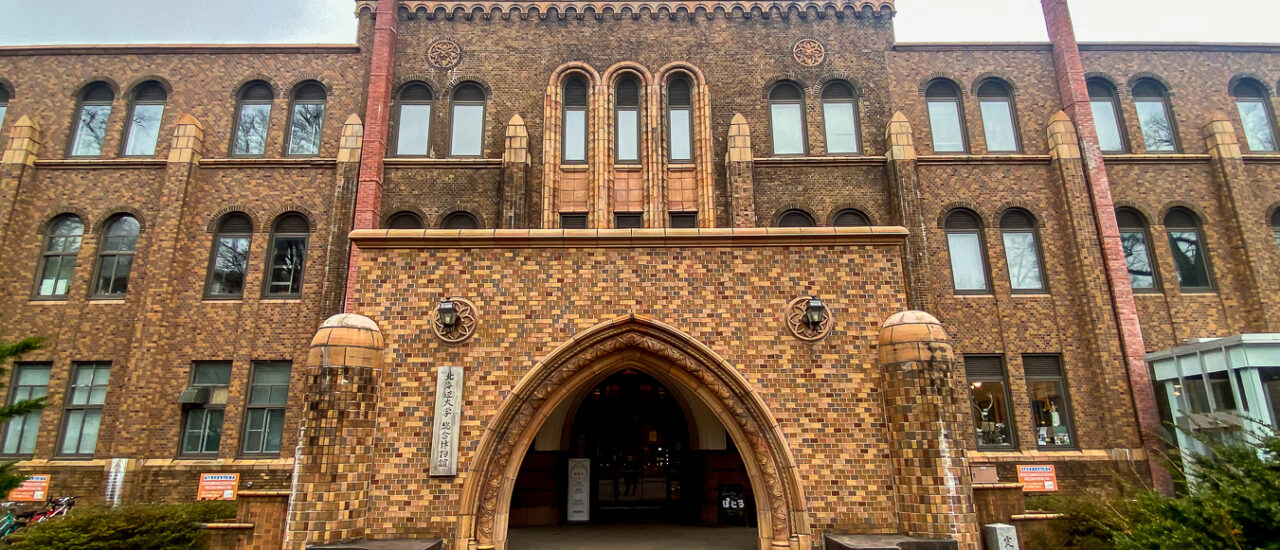
Tag: Shinto

Obihiro Shrine
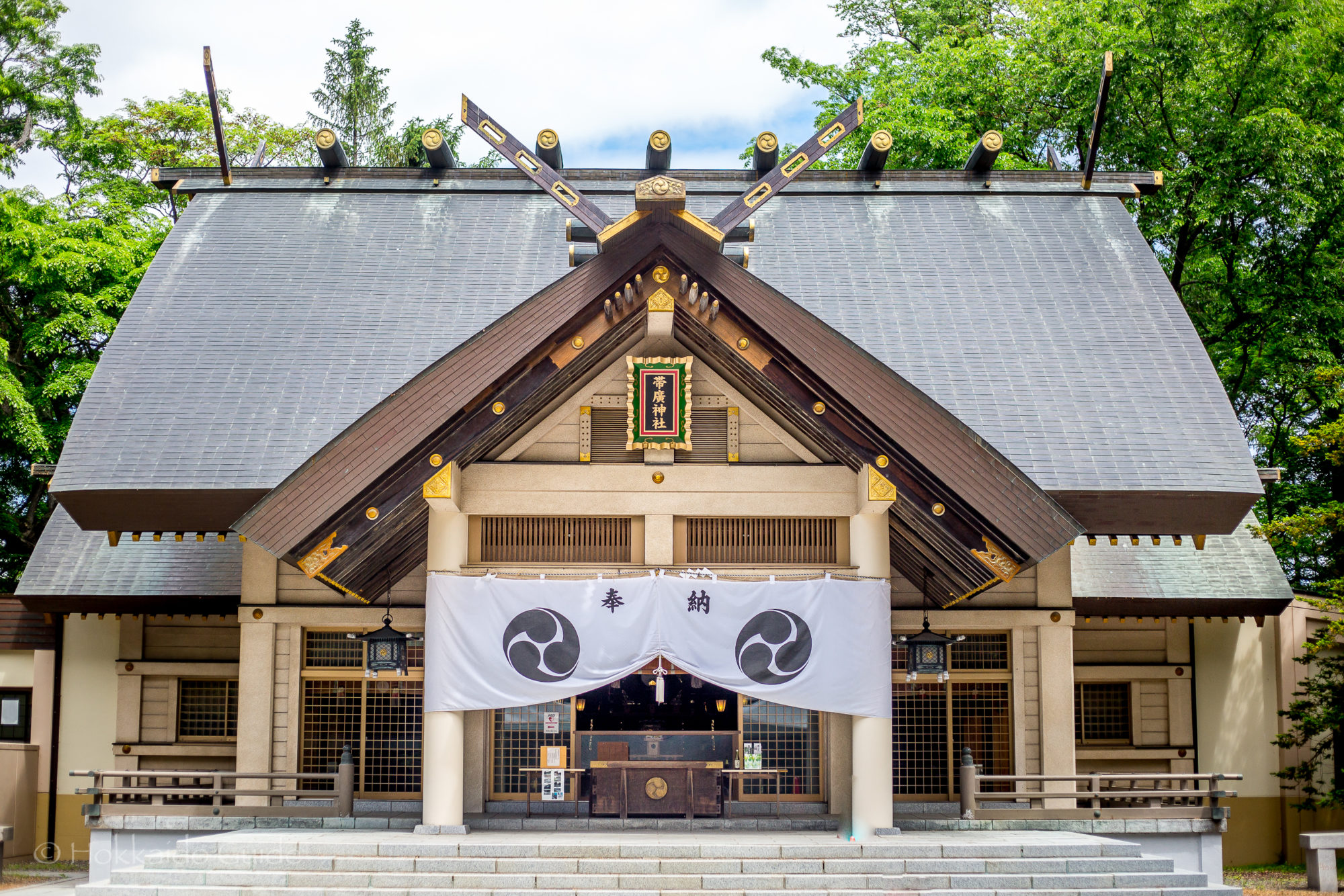
| Admission | - |
| Opening Hours | 9:00 - 17:00 |
| Closed | - |
| Contact | 011-5523-3955 |
| Notes | |
| Location / Getting There | The shrine is a 24 minute walk north from Obihiro station, or a 7 minute drive by car. Obihiro Shrine is right by Obihiro river, and is accessed via route 38. East 2 South 2. From Obihiro Station Bus Terminal Station No.8, take the Tokachi bus (No.7) on the 'Water Line Higashi 13' (Obihiro City). From the General Promotion Bureau stop it's a 2 minute walk. 〒080-0803 Hokkaido, Obihiro, Higashi 3 Jominami, 2 Chome, 1 |
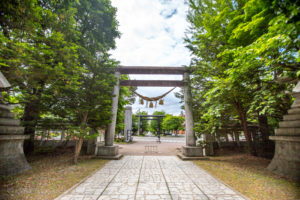 In 1881, a man named Benzo Yoda and others from Shizuoka Prefecture organized a pioneer group called the “Bansei-sha”. This group and settled inShimo-Obihiro Village and started pioneering. During this time, they started holding festivals and later built a small shrine, though the connection with the current Obihiro Shrine is still not well known. In March 1909, a town meeting was held and five members decided to relocate and build the Obihiro Shrine. Over the past hundred years, this shrine has developed, been renovated and welcomed thousands of worshippers.
In 1881, a man named Benzo Yoda and others from Shizuoka Prefecture organized a pioneer group called the “Bansei-sha”. This group and settled inShimo-Obihiro Village and started pioneering. During this time, they started holding festivals and later built a small shrine, though the connection with the current Obihiro Shrine is still not well known. In March 1909, a town meeting was held and five members decided to relocate and build the Obihiro Shrine. Over the past hundred years, this shrine has developed, been renovated and welcomed thousands of worshippers.
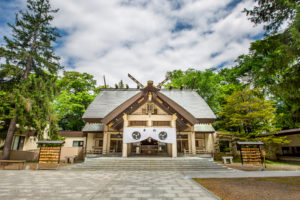 The shrine is located by the Obihiro River and although the buses don’t run that often, it is in a walkable distance. Once inside the grounds, there are many things to see besides the main shrine. There are numerous shrines and buildings. The area is also rich in greenery and the land was designated as an environmental green space protection area in Hokkaido in 1974. The grounds are also home to many small animals and wild birds such as Ezo squirrels, chipmunks, red-cockaded woodpeckers, and starlings to name a few. This area has some statues and is a good spot for photos. At the shrine, you can buy souvenirs and charms to take home. Throughout the year there are many festivals held. For more detail see below.
The shrine is located by the Obihiro River and although the buses don’t run that often, it is in a walkable distance. Once inside the grounds, there are many things to see besides the main shrine. There are numerous shrines and buildings. The area is also rich in greenery and the land was designated as an environmental green space protection area in Hokkaido in 1974. The grounds are also home to many small animals and wild birds such as Ezo squirrels, chipmunks, red-cockaded woodpeckers, and starlings to name a few. This area has some statues and is a good spot for photos. At the shrine, you can buy souvenirs and charms to take home. Throughout the year there are many festivals held. For more detail see below.
| 1st and 15th of every month | Prayers for the safety of the Imperial Family, peace for the nation, and peace for the Urahoro worshippers. |
| January 1 | New Years Day. Prayer for the safety of the Imperial Family, peace for the nation, and a good harvest for the year. |
| January 15 | The burning of old Shinto prayer cards and charms. Prayer for good health. On the day before the first day of spring, there is the purification the evil spirits. The doors of the main shrine are opened to offer thanks to the Milk God and prayer for spring. |
| June 30 | Grand purification ceremony and Nagoshi-no-harai (summer purification). A Shinto ritual to purge the sins and impurities of the past six months and pray for good health. |
| August | On the evening before the last Sunday of the month, There is the summer portable shrine procession festival (Mikoshi & Yoimiya Festival). The portable shrine is purified the night before the main festival, and the gods are notified that the big festival will be held tomorrow. On the last Sunday of the month, the portable shrine will be paraded through the town to pray for the safety of each family and the prosperity of each company. |
| September 20 | Autumn Grand Festival Prayers and dedication events are held for the Ujigami (local deity), which has been handed down from the pioneers. The doors of the main shrine are opened to offer thanks to the Goddess of Milk and pray for the autumn. The god of the land and the god of agriculture are invited to give thanks for the year's harvest and to pray for the safety. Prayers are offered to the gods for the healthy growth of children who are three, five, and seven years old. Prayers are offered for the harvest and labor to the gods of the 24 shrines in Urahoro Town. |
| December 31 | New Year's Eve Purification Ceremony and Nightfall Festival is held to purify the sins and impurities of the year from the body and soul using dolls, and to pray for good health in the New Year. |
| December 30 to January 5 | The shrine grounds are illuminated. |
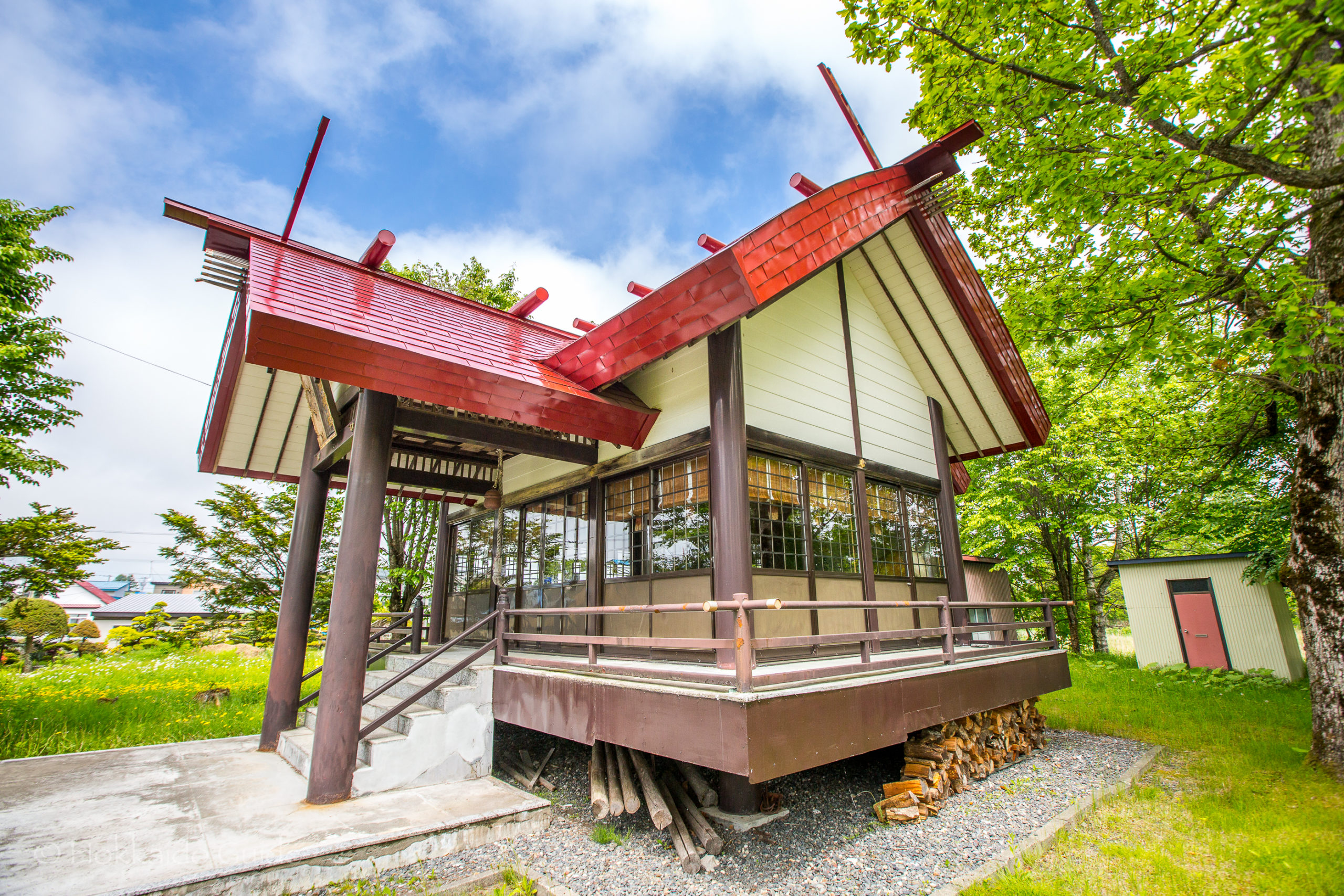
Toyoni Shrine
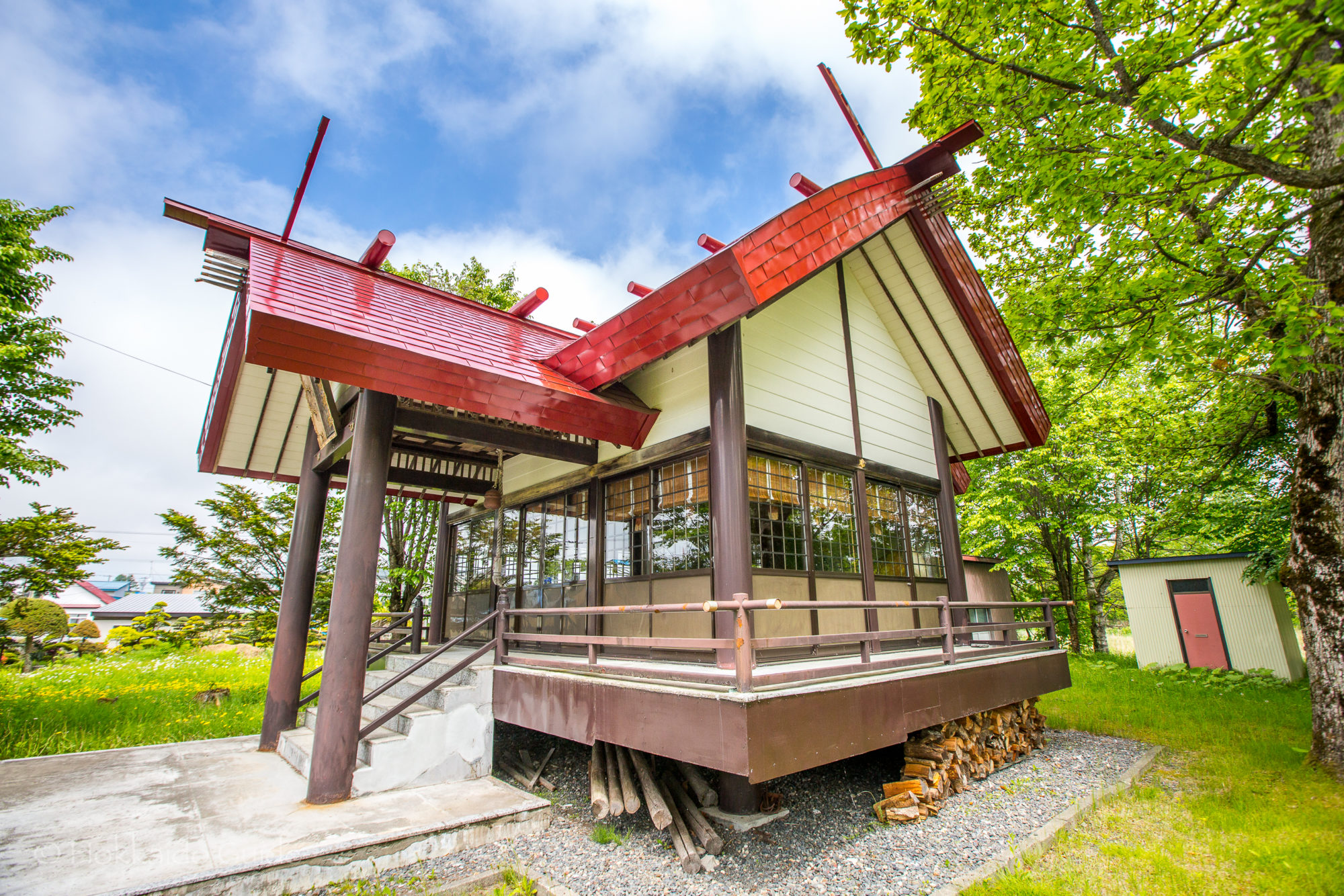
| Admission | Free |
| Opening Hours | - |
| Contact | - |
| Notes | Shinto shrine, parking, car needed |
| Location / Getting There | The shrine is located on the south east coast of Hokkaido in the small town of Toyoni, in the district of Hiroo. The shrine is on route 336. It is just on the outskirts of Hiroo on the way to Obihiro. 〒089-2455 Hokkaido, Hiroo District, Hiroo, Toyoni Hondori 47 |
 The beginnings of Toyoni Shrine dates back to August 1891. It all started as a simple and small garden shrine that was created by a settler, Kanjiro Inoue, who had made his way to the district of Hiroo. As a guardian deity of the area, he held a ritual of protection during the seasons of spring and autumn. For entertainment, folk songs were sung and children’s sumo events were held. All of this stopped suddenly, and later in 1945 after much discussion and organization for funds, a full shrine was built and completed. Due to decay and deterioration the shrine was reconstructed in 1985, and has maintained its appearance as you see it today.
The beginnings of Toyoni Shrine dates back to August 1891. It all started as a simple and small garden shrine that was created by a settler, Kanjiro Inoue, who had made his way to the district of Hiroo. As a guardian deity of the area, he held a ritual of protection during the seasons of spring and autumn. For entertainment, folk songs were sung and children’s sumo events were held. All of this stopped suddenly, and later in 1945 after much discussion and organization for funds, a full shrine was built and completed. Due to decay and deterioration the shrine was reconstructed in 1985, and has maintained its appearance as you see it today.
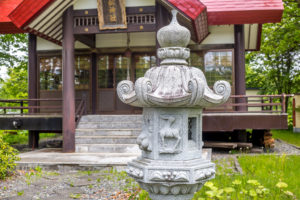 The shrine is just off route 336, and it can easily be seen from this road, especially if you are driving from Hiroo to Obihiro. Obihiro being an hour drive away from the coast. It is just before the small town of Toyoni. There isn’t any parking but there is a drive way and grassland where you can stop. The grounds are quite nice in the summer months, and there are gardens and wild flowers growing around the area. This is a small shrine with 125 households as parishioners. The shrine is 11.5 tsubo.
The shrine is just off route 336, and it can easily be seen from this road, especially if you are driving from Hiroo to Obihiro. Obihiro being an hour drive away from the coast. It is just before the small town of Toyoni. There isn’t any parking but there is a drive way and grassland where you can stop. The grounds are quite nice in the summer months, and there are gardens and wild flowers growing around the area. This is a small shrine with 125 households as parishioners. The shrine is 11.5 tsubo.
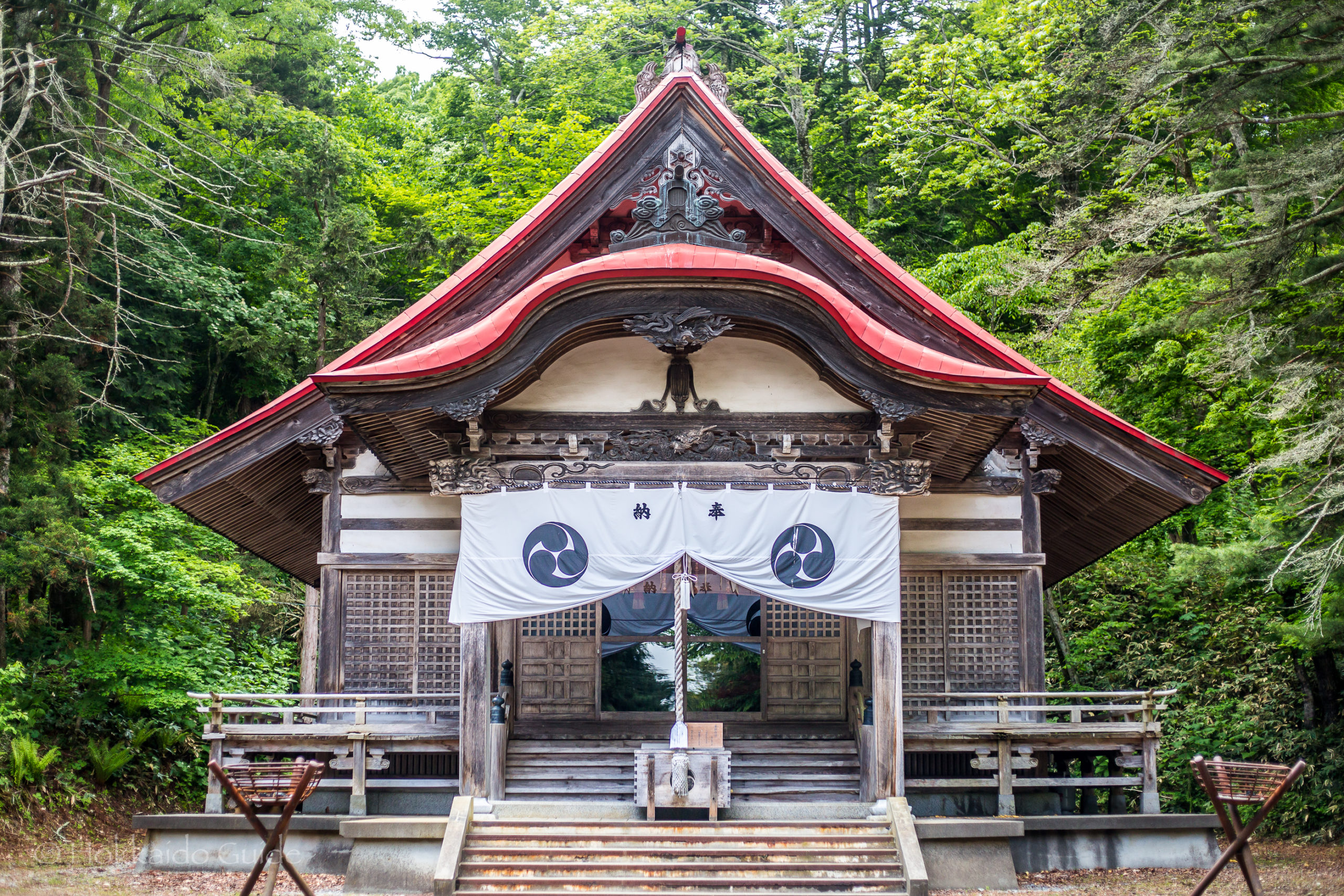
Tokachi Shrine
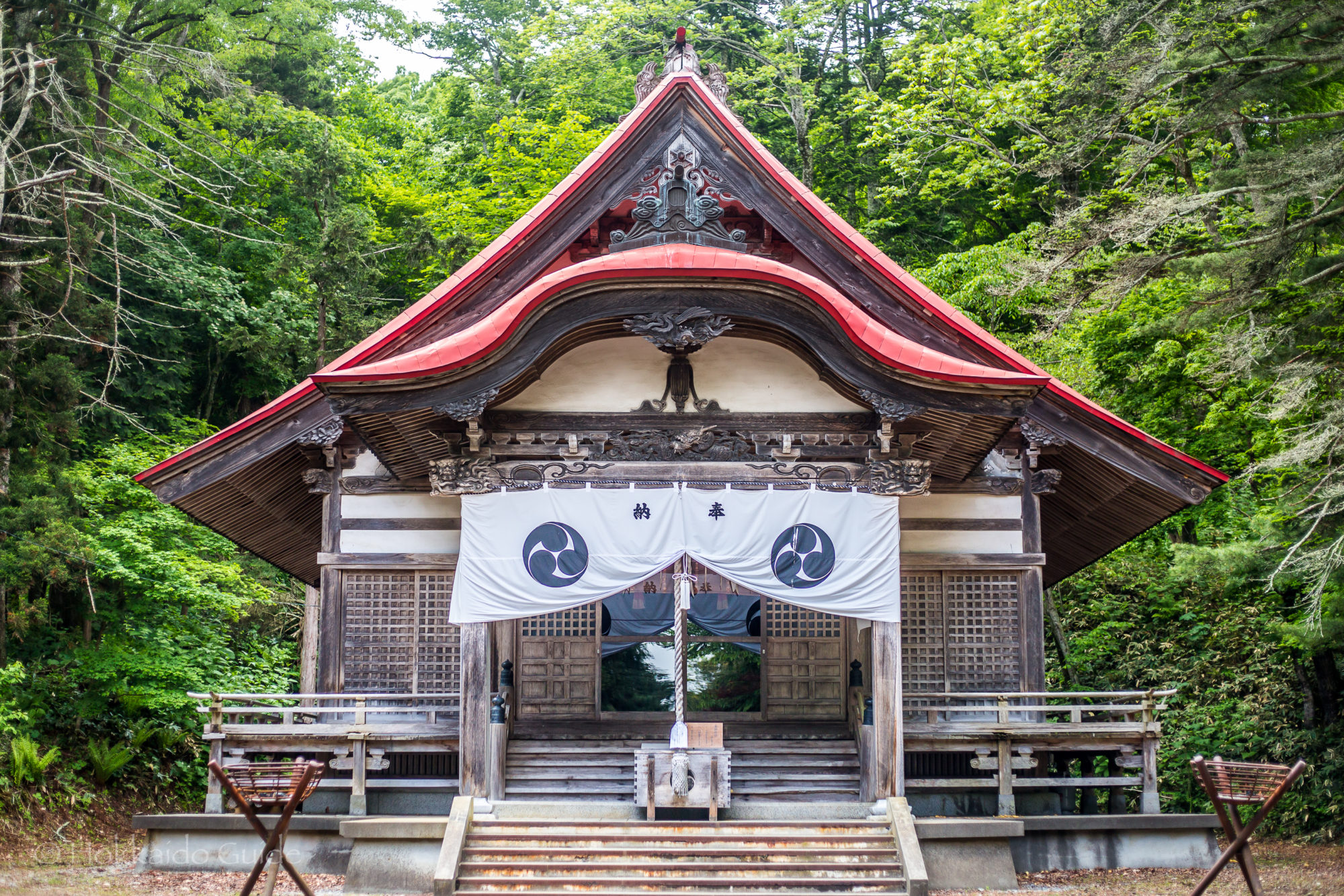
| Admission | Free |
| Opening Hours | - |
| Contact | 011-5582-2063 |
| Notes | Shinto shrine, parking, car needed |
| Location / Getting There | The shrine is located on the south east coast of Hokkaido in the district of Hiroo. It is the in the centre of town and is part of the main park in town. It is a 2 minute walk from route 336. 1-13 Moyori, Hiroo, Hiroo District, Hokkaido 089-2637 |
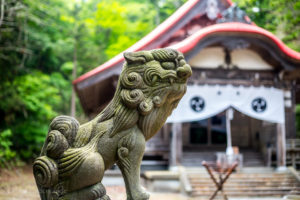 Tokachi Shrine dates all the way back to June 1666. The shrine is located in the coastal town of Hiroo. Hundreds of years ago, the fishing industry here became strong. As the town prospered, so did the reverence of the deities. According to the local history, a piece of driftwood washed up along the coast which had the representations of a dragon, and then enshrined here. Later on, this driftwood was then carved into a statue. The date of this is unknown, but the statuette was about four inches and was carved into a likeness of Prince Shōtoku.
Tokachi Shrine dates all the way back to June 1666. The shrine is located in the coastal town of Hiroo. Hundreds of years ago, the fishing industry here became strong. As the town prospered, so did the reverence of the deities. According to the local history, a piece of driftwood washed up along the coast which had the representations of a dragon, and then enshrined here. Later on, this driftwood was then carved into a statue. The date of this is unknown, but the statuette was about four inches and was carved into a likeness of Prince Shōtoku.
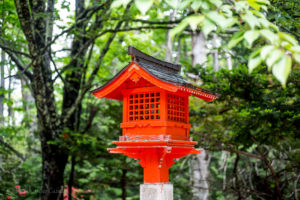 November 1799 saw the development of a new road between Hiroo and Samani. This opening increased trade and more wealth was attributed to the town. In turn, the shrine prospered and went through developments. As of 2021, the number of parishioners numbers 3,214 households, and 130 worshippers. This shrine is part of the main park in Hiroo. It is a great place to wander around and stretch the legs. The shrine has a nice long stone path which leads towards the shrine. Here, you can get some nice pictures of Tokachi Shrine.
November 1799 saw the development of a new road between Hiroo and Samani. This opening increased trade and more wealth was attributed to the town. In turn, the shrine prospered and went through developments. As of 2021, the number of parishioners numbers 3,214 households, and 130 worshippers. This shrine is part of the main park in Hiroo. It is a great place to wander around and stretch the legs. The shrine has a nice long stone path which leads towards the shrine. Here, you can get some nice pictures of Tokachi Shrine.
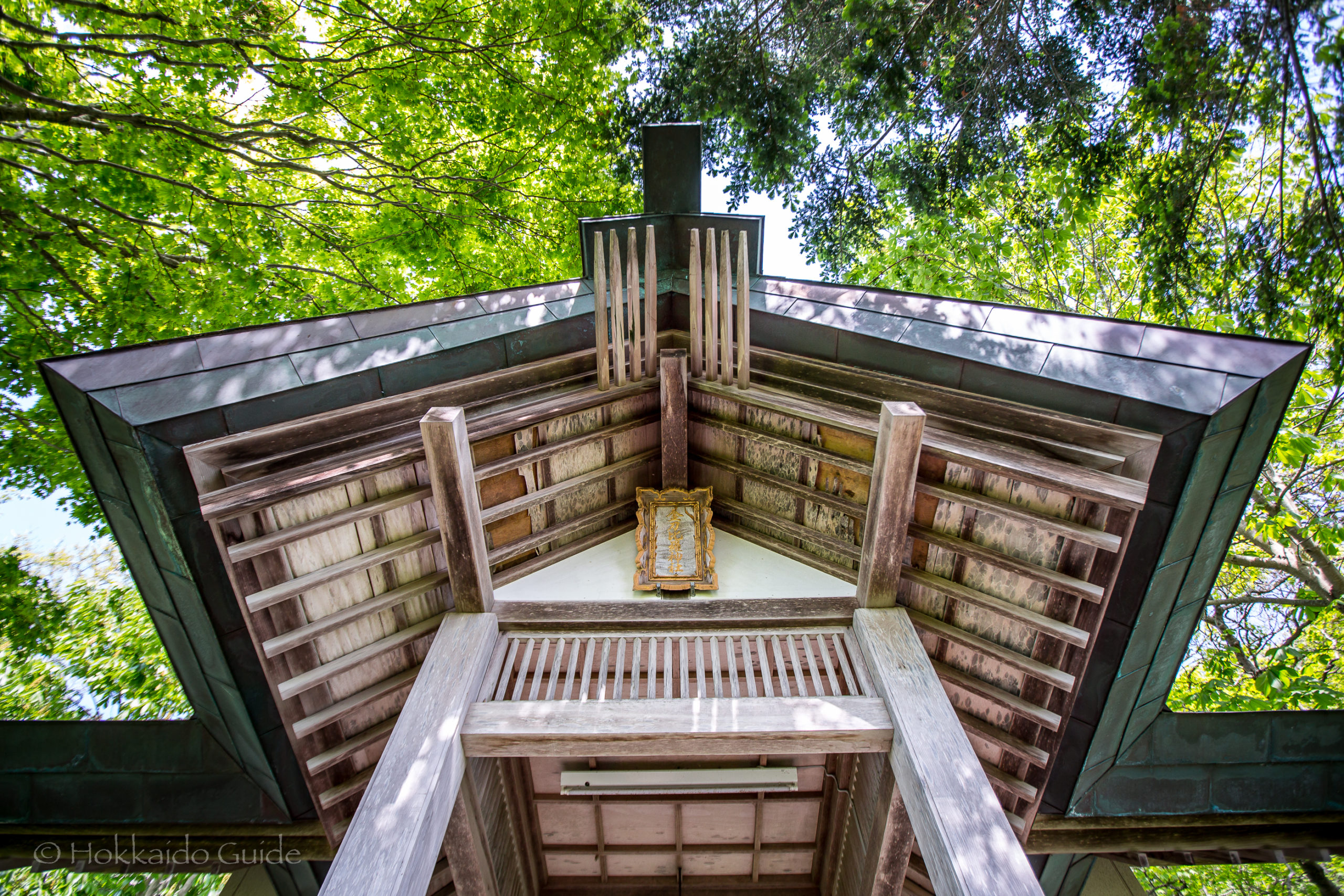
Kotohira-Jinja Shinto Shrine
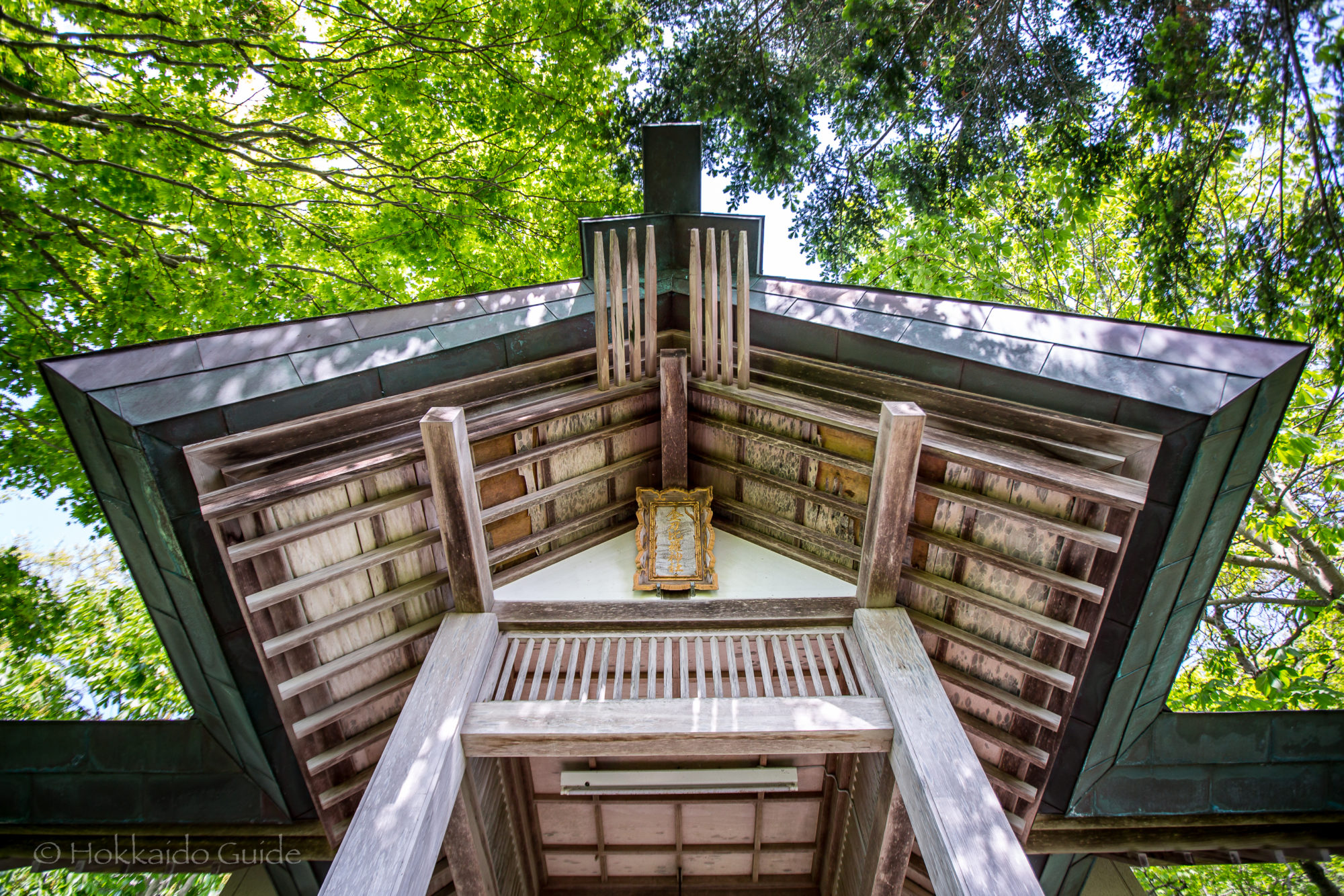
| Admission | Free |
| Opening Hours | - |
| Contact | 014 642-1459 |
| Notes | Shinto shrine |
| Location / Getting There | The shrine is located on the coast of Hidaka in the south east of Hokkaido. The shrine is only really accessible by car. It is a 5 minute drive east from the town of Shizunai. 72 Higashishizunai, Shinhidaka, Hidaka District, Hokkaido 059-2561 |
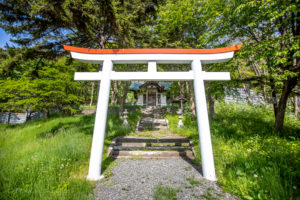 Kotohira-Jinja Shinto Shrine was first built during the first year of the Ansei era. The Ansei era spanned for six years from November 1854 through to March 1860. It was listed as a village shrine in the 9th year of the Meiji era in 1876, and the name was changed to its current name in 1952. This area and shrine was visited by Matsuura Takeshirō. He was a famous Japanese explorer, cartographer, writer, painter, priest, and antiquarian. In the early Meiji period he was an official in the Hokkaidō Development Commission. On the grounds you can find numerous monuments and statues that are historical sites.
Kotohira-Jinja Shinto Shrine was first built during the first year of the Ansei era. The Ansei era spanned for six years from November 1854 through to March 1860. It was listed as a village shrine in the 9th year of the Meiji era in 1876, and the name was changed to its current name in 1952. This area and shrine was visited by Matsuura Takeshirō. He was a famous Japanese explorer, cartographer, writer, painter, priest, and antiquarian. In the early Meiji period he was an official in the Hokkaidō Development Commission. On the grounds you can find numerous monuments and statues that are historical sites.
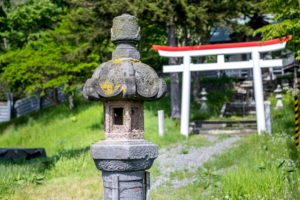 The shrine can be found on the left hand side (if coming from Sapporo), along route 235. This long and winding road follows the coastline all the way down to Cape Erimo. The shrine is noticeable from its numerous tori gates which lead back to the shrine itself. There is a small drive way area for parking. The grounds are nice to walk around. You can get the nice ocean breeze as well. The deity for this shrine is Emperor Sujin. His reign was from 97BC to 30BC. This is one of the many shrines that line this long coastal road.
The shrine can be found on the left hand side (if coming from Sapporo), along route 235. This long and winding road follows the coastline all the way down to Cape Erimo. The shrine is noticeable from its numerous tori gates which lead back to the shrine itself. There is a small drive way area for parking. The grounds are nice to walk around. You can get the nice ocean breeze as well. The deity for this shrine is Emperor Sujin. His reign was from 97BC to 30BC. This is one of the many shrines that line this long coastal road.

